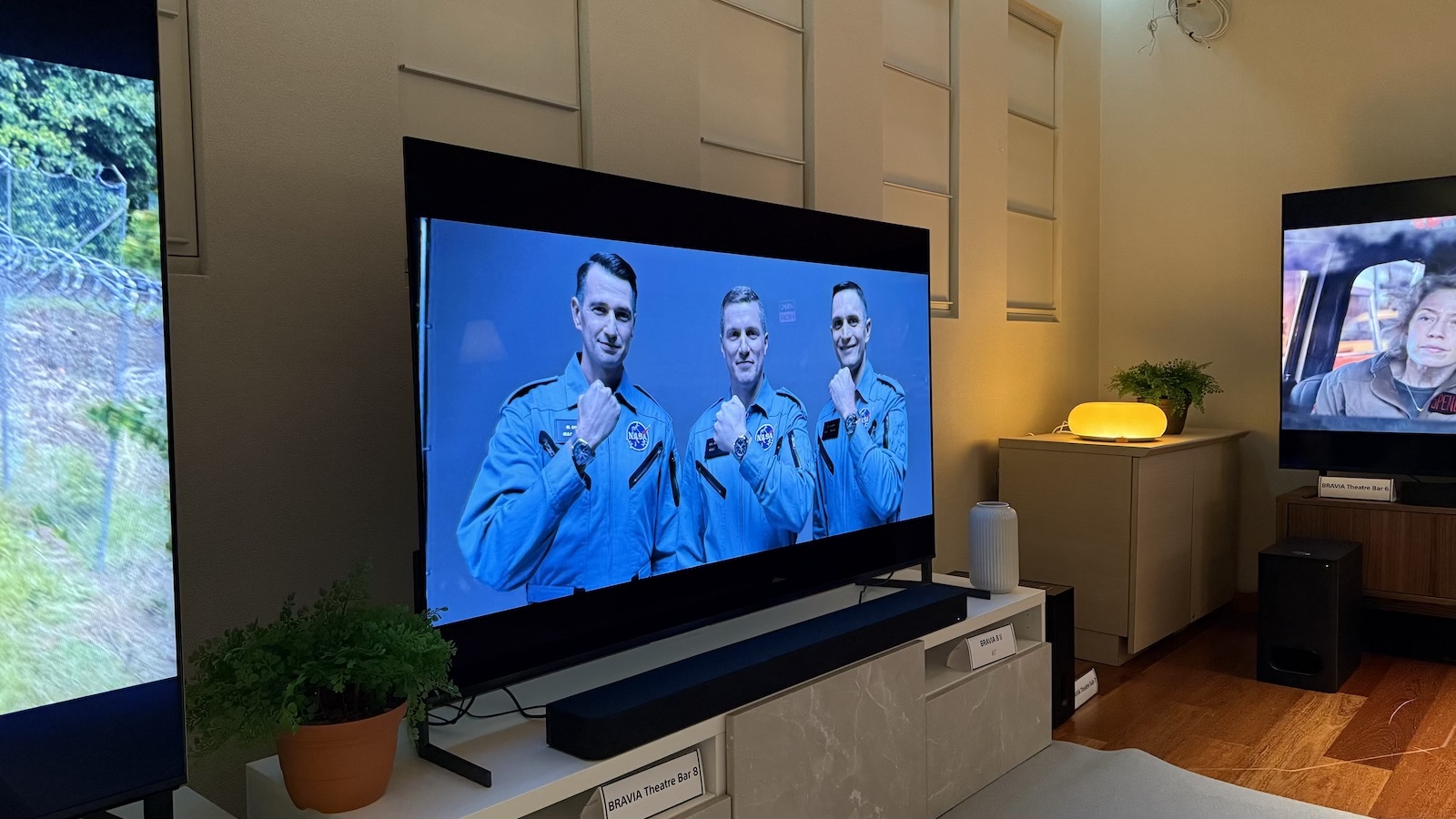Best soundbars 2025: options for every need, recommended by our experts
The smartest, most compact, and very best TV soundbars to take your home cinema sound to the next level

When watching your favourite show or latest movie release, you will unsurprisingly want both your picture and the sound quality to be top-notch. Unfortunately, a lot of TVs offer underwhelming and thin sound that can detract from your viewing experience.
A soundbar is a great way to boost your TV's meagre sonic performance – and you don't have to break the bank to make serious improvements.
But how do you decide which soundbar is best for you? It can seem like a mammoth task to sift through all the brands and features to find the right fit.
There's good news, though: we have done the hard part and gathered our top recommendations for which soundbar will suit your needs. We have been testing soundbars since the category emerged in the early 2000s and have tested hundreds of different models over the subsequent decades.
On top of that, we compare all new models side by side with the best soundbars at the relevant price, so we know exactly where each product stands.
You can read more about our soundbar testing process, dig deeper into how to choose a soundbar, or simply scroll down for the top models.
- Here are the best budget soundbars
The quick list
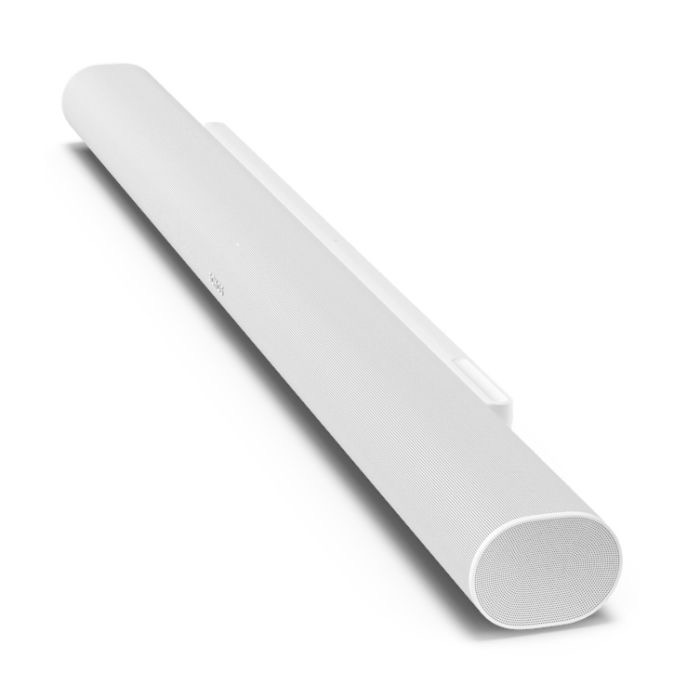
Best soundbar overall
The new flagship Dolby Atmos model from Sonos is the best soundbar for most people. It's as three-dimensional in its delivery as a single bar can be, and it boasts superb clarity, precision and tuneful bass.
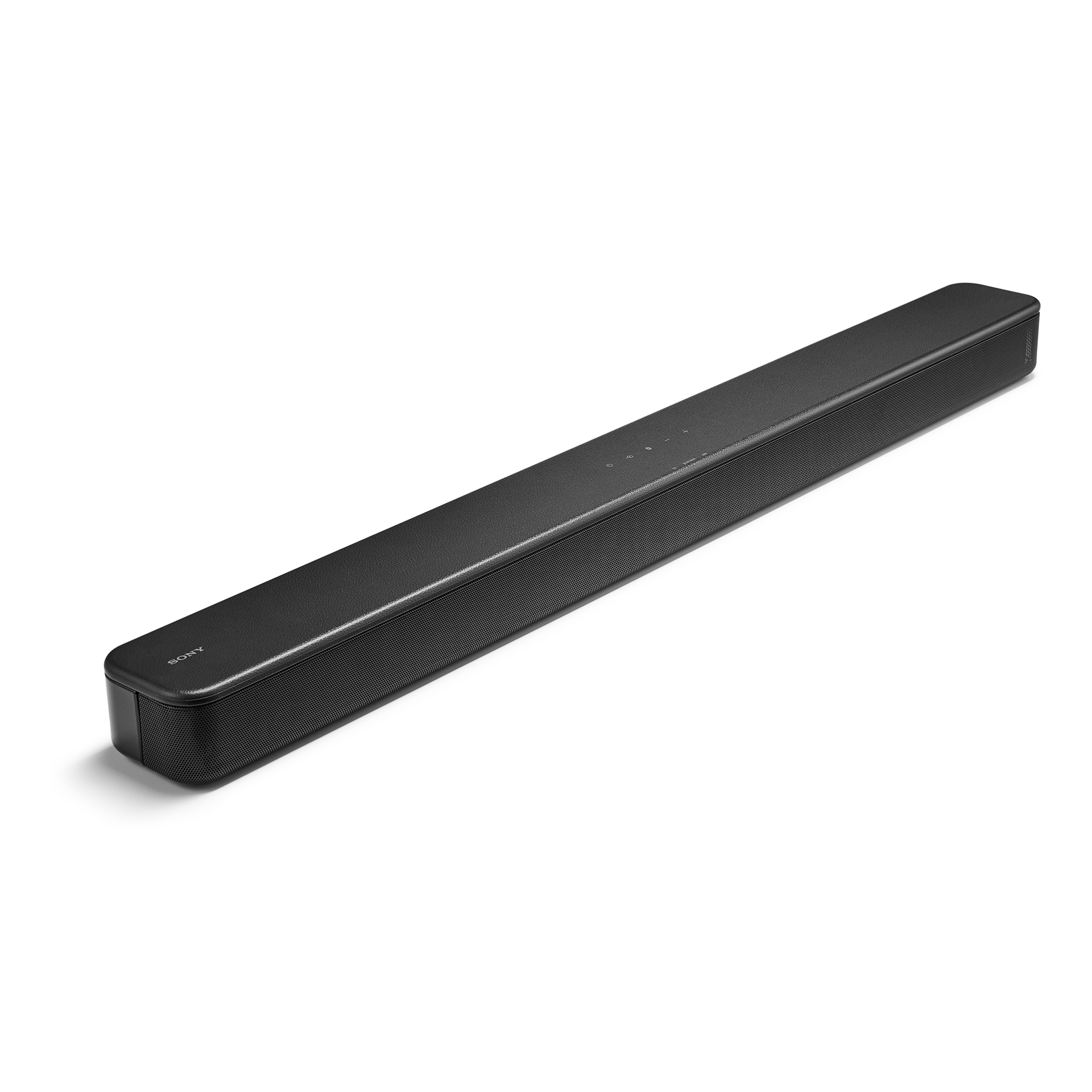
Best cheap soundbar
If you're looking to significantly improve your TV's sound for as little money as possible, this Sony is just the ticket. Note the different model numbers for the UK and US.
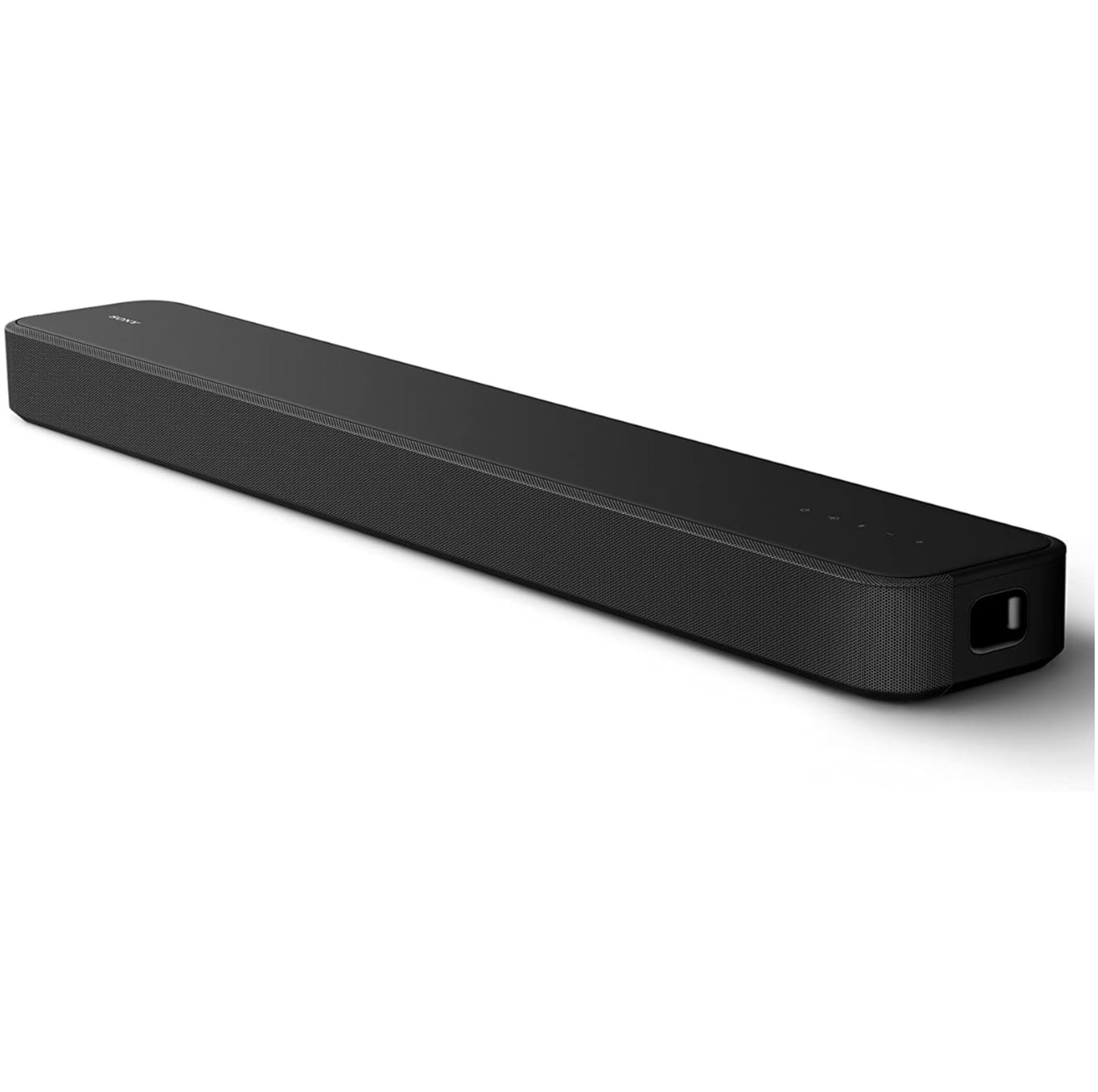
Best step-up soundbar
The Sony HT-S2000 delivers excellent sound quality for its low price and offers features missing from comparable rivals such as Dolby Atmos and HDMI eARC.
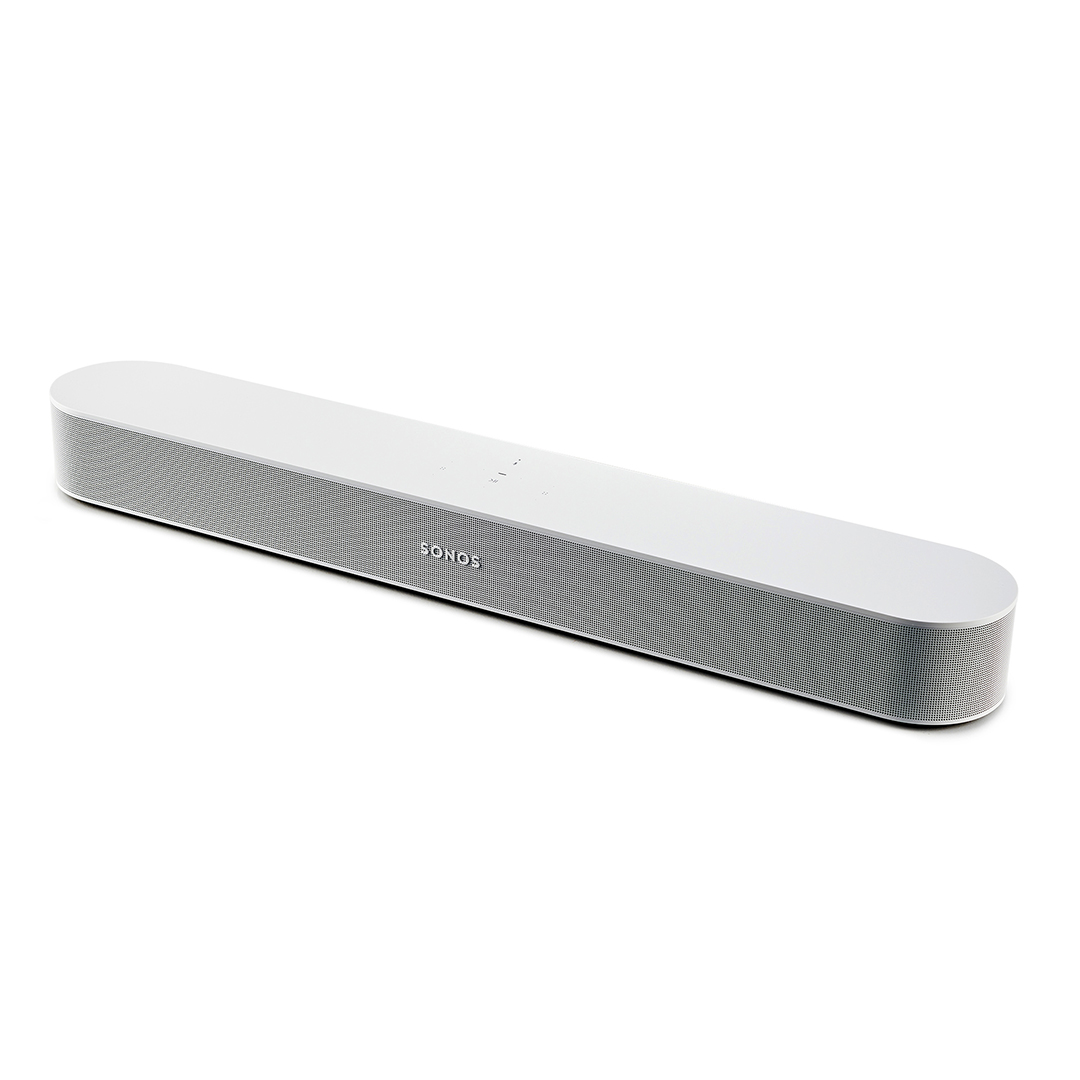
Best entry-level Dolby Atmos soundbar
This compact soundbar does it all, including Dolby Atmos, and does it exceptionally well for the money.
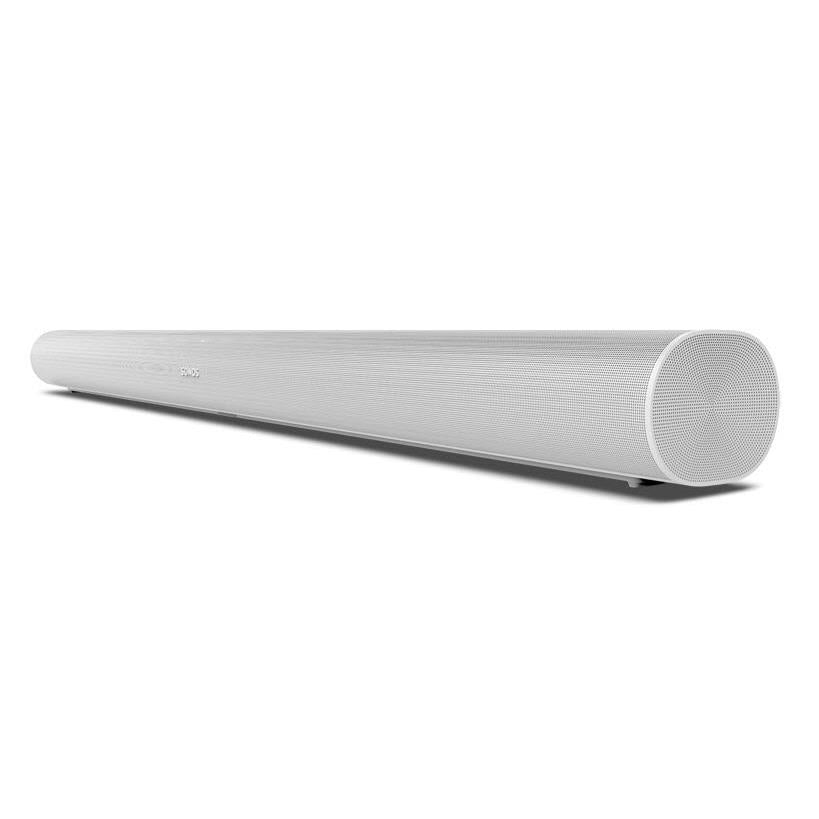
Best mid-range soundbar
Sonos's flagship soundbar is a big step up from the Beam in terms of sound quality and a great choice for a larger room.
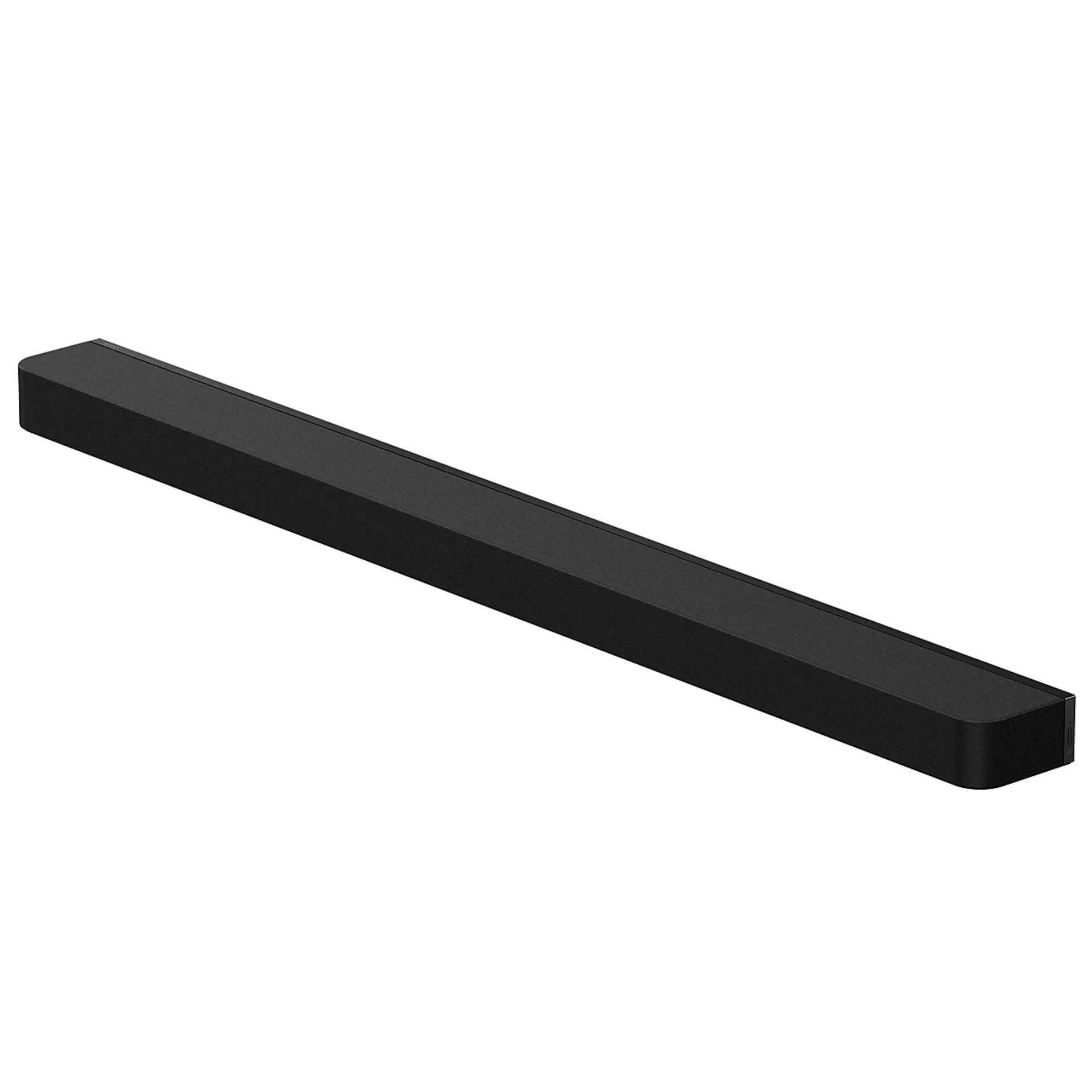
Best soundbar with HDMI 2.1
Sony's flagship Dolby Atmos soundbar sounds almost as good as the Sonos Arc Ultra, and it also features game-friendly HDMI 2.1 passthrough, which its Sonos rival does not.
Load more products ↓
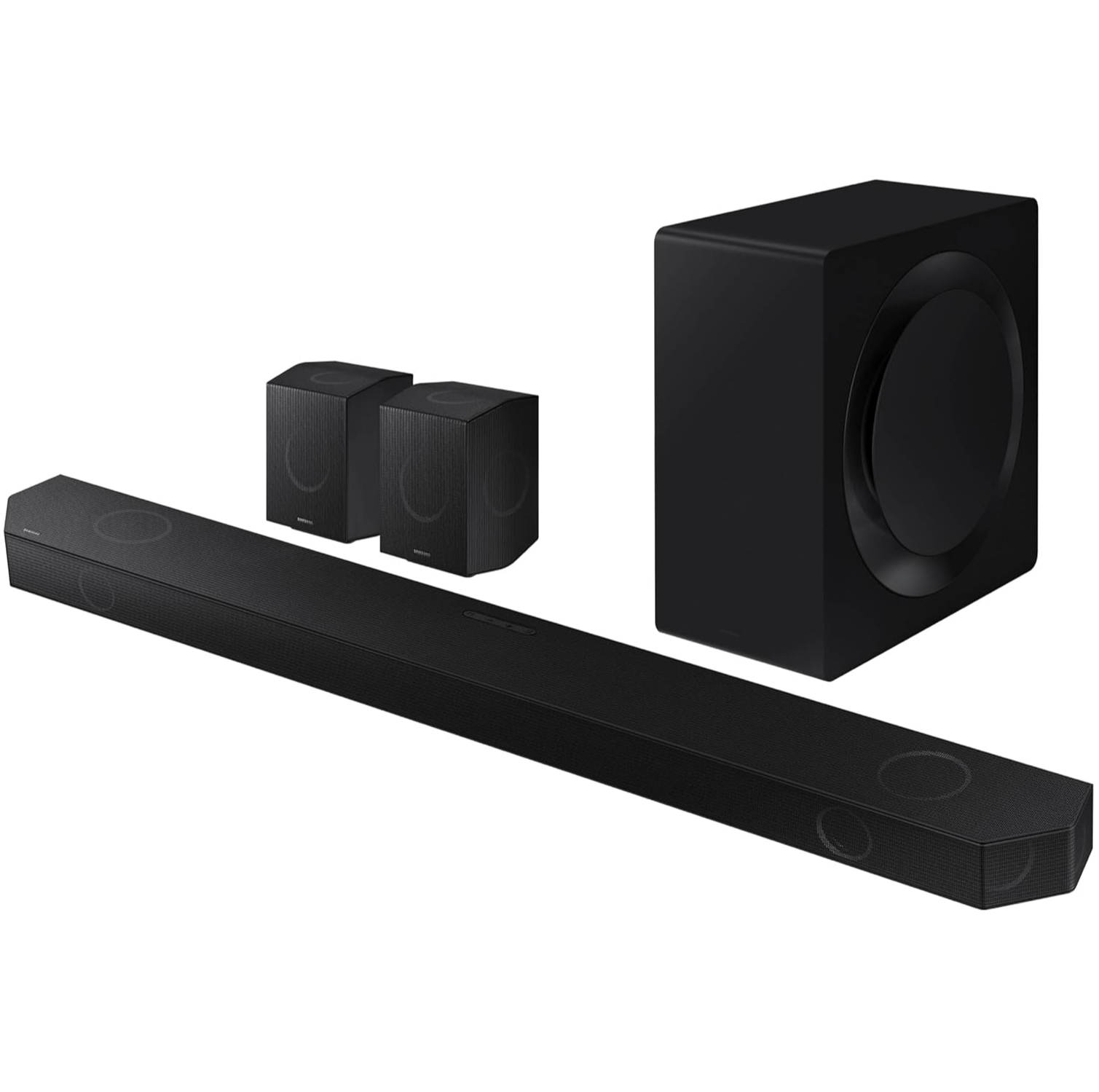
Best soundbar package
The Q990D marks an improvement over the previous generation and delivers Dolby Atmos in a way few soundbar packages can match.
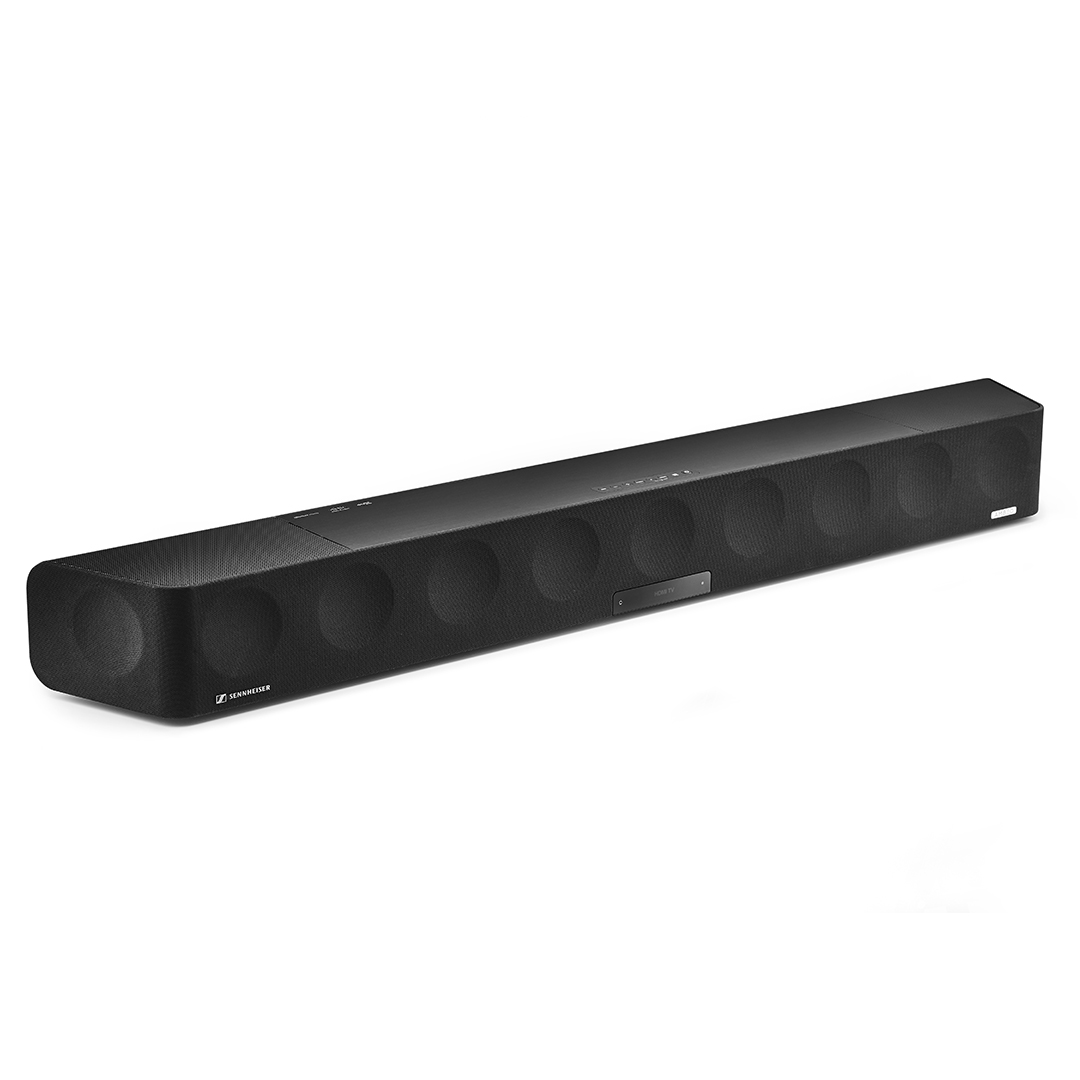
Best high-end soundbar
This Sennheiser is expensive, huge and a bit fussy by soundbar standards, but it sounds incredible.
Recent updates
20th November 2024
Replaced the discontinued Sony HT-A7000 with the Sonos Arc Ultra as 'best overall' and added the Sony Bravia Theatre Bar 9 as the 'best soundbar with HDMI 2.1'.

I'm What Hi-Fi?'s TV & AV Editor, and I've been testing soundbars ever since they became a serious category in the mid-2000s. While I personally love AVRs and dedicated speaker systems, I'm well aware that they are not for everyone. A soundbar, on the other hand, is an easy way to massively upgrade your home cinema experience. If you care enough about picture quality to buy a premium TV, you really should also budget for at least a soundbar as well. As you'll see, you don't need to spend much on one to beat your TV's speakers.
The best soundbars in 2025
Why you can trust What Hi-Fi?
Below, you can see our picks of the best soundbars currently available. Every one has been tested by our team of product experts to ensure it delivers great performance and value, so you can trust our buying advice.
Best soundbar overall
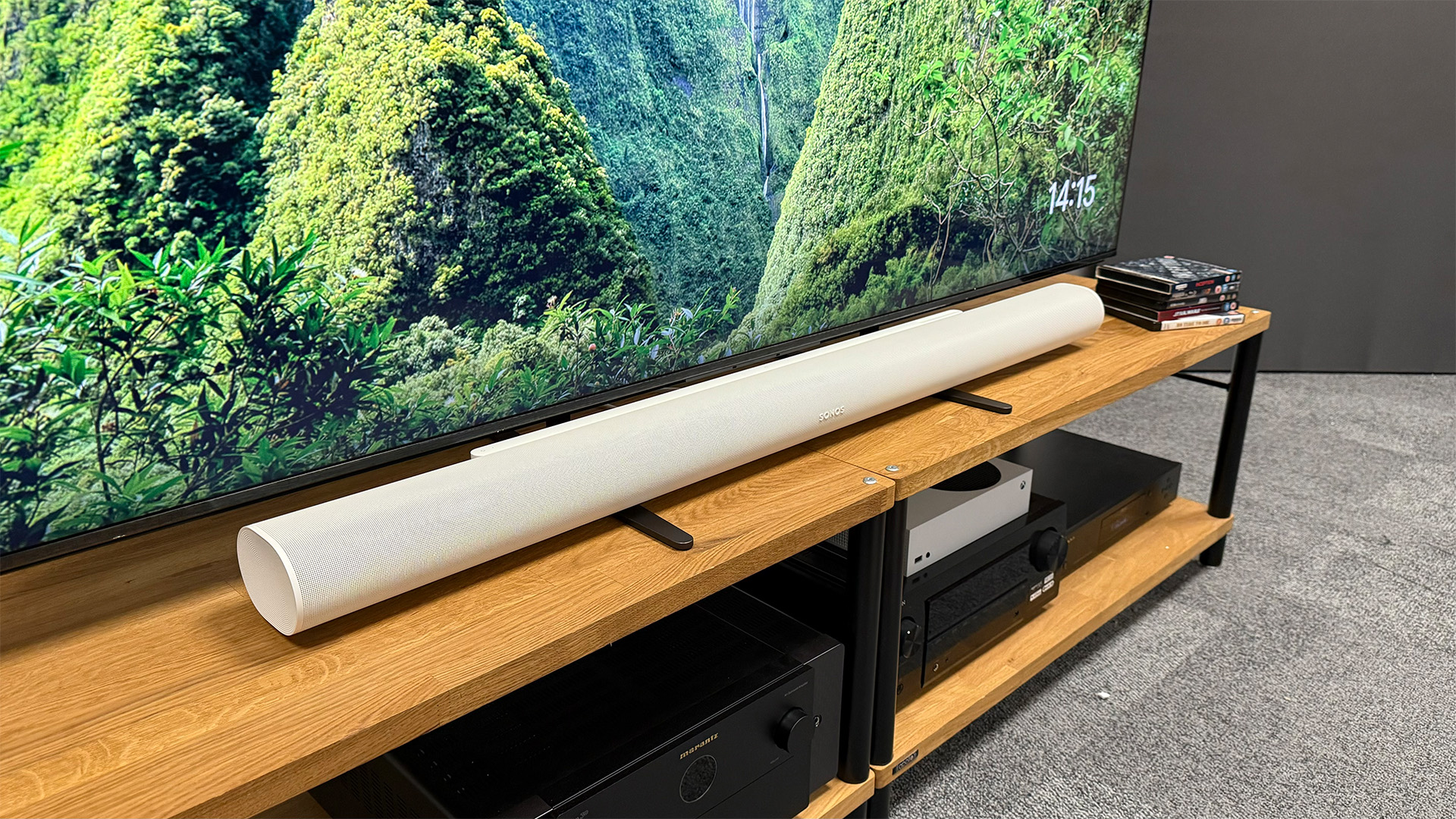
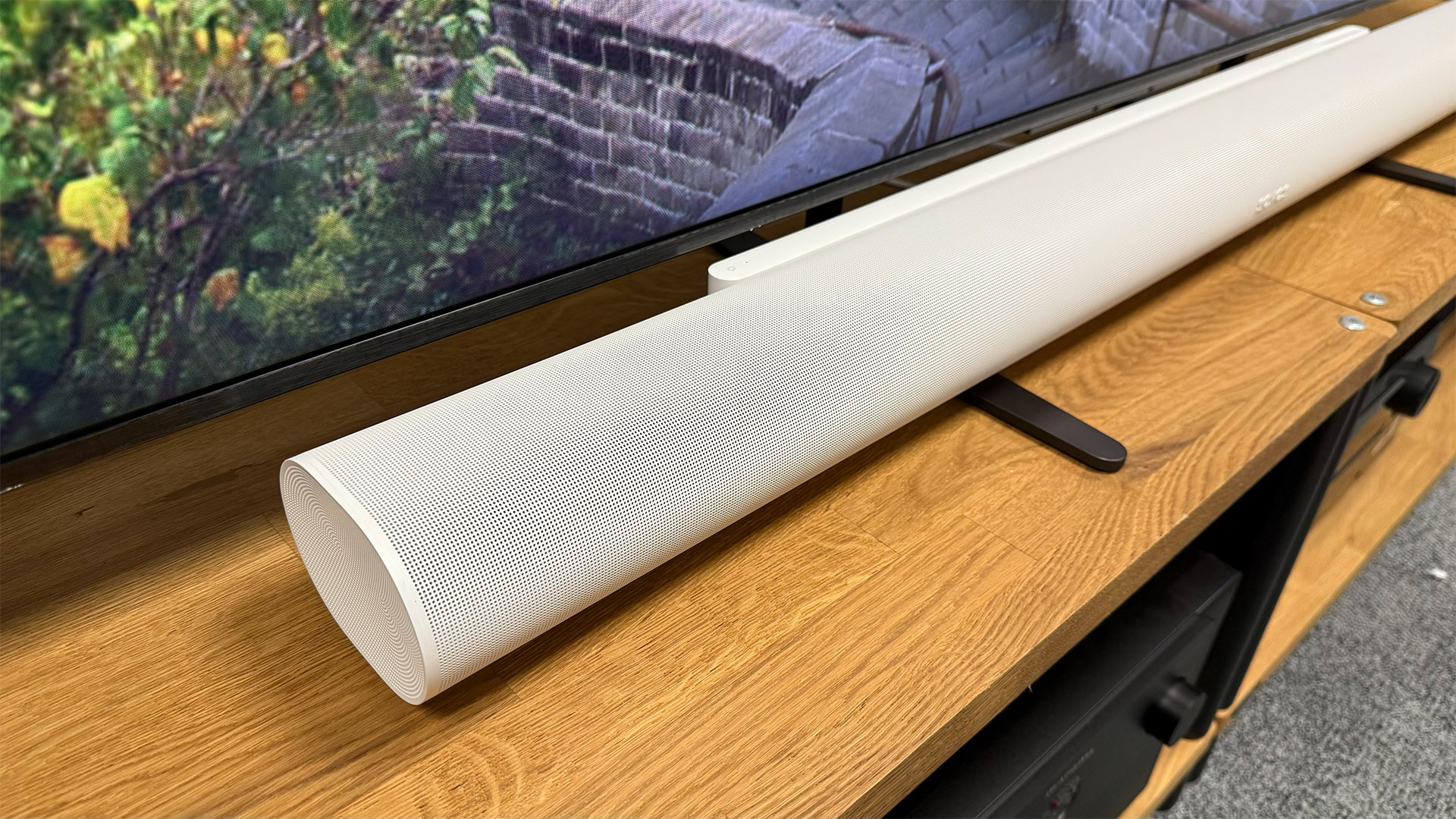
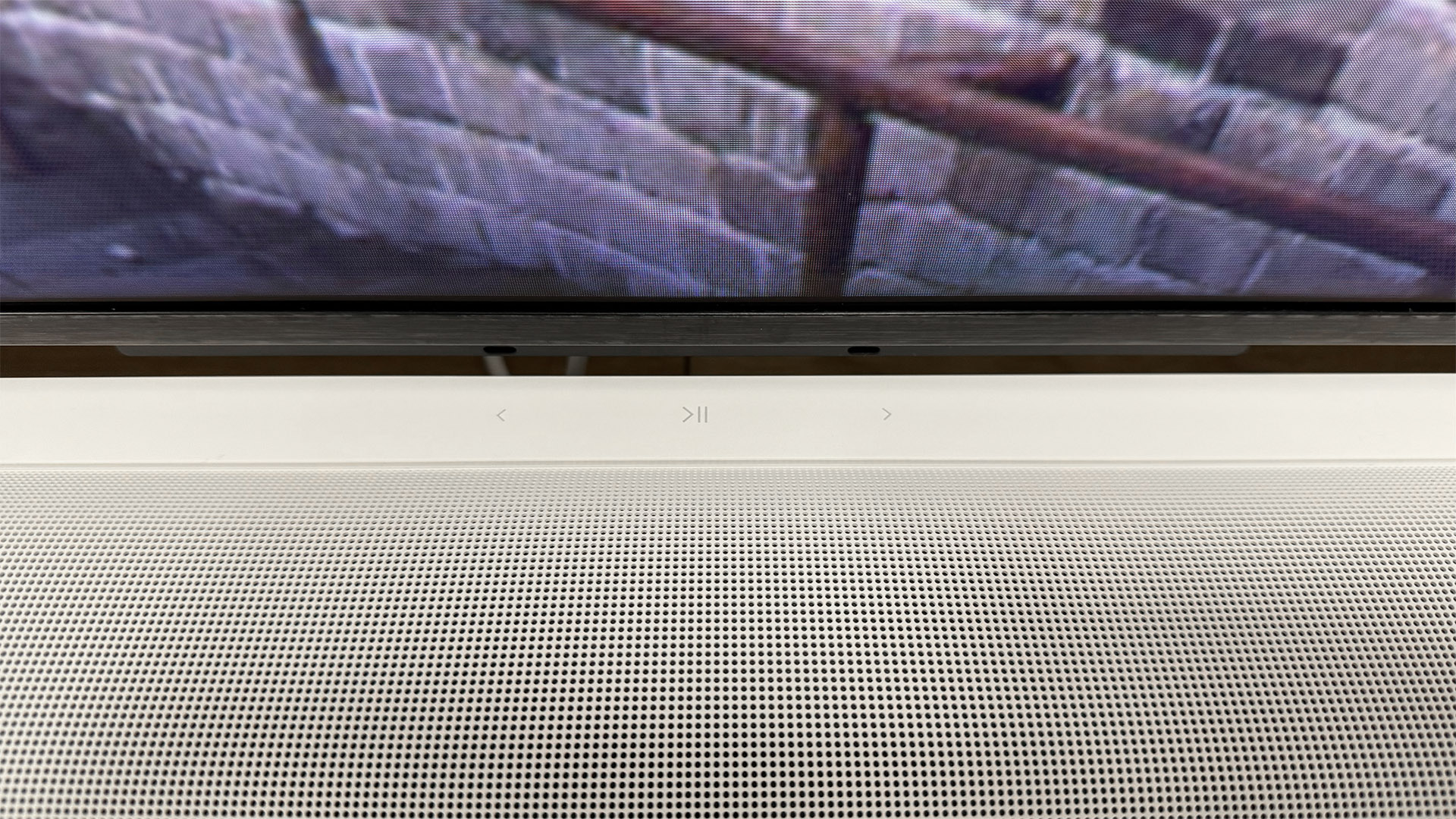
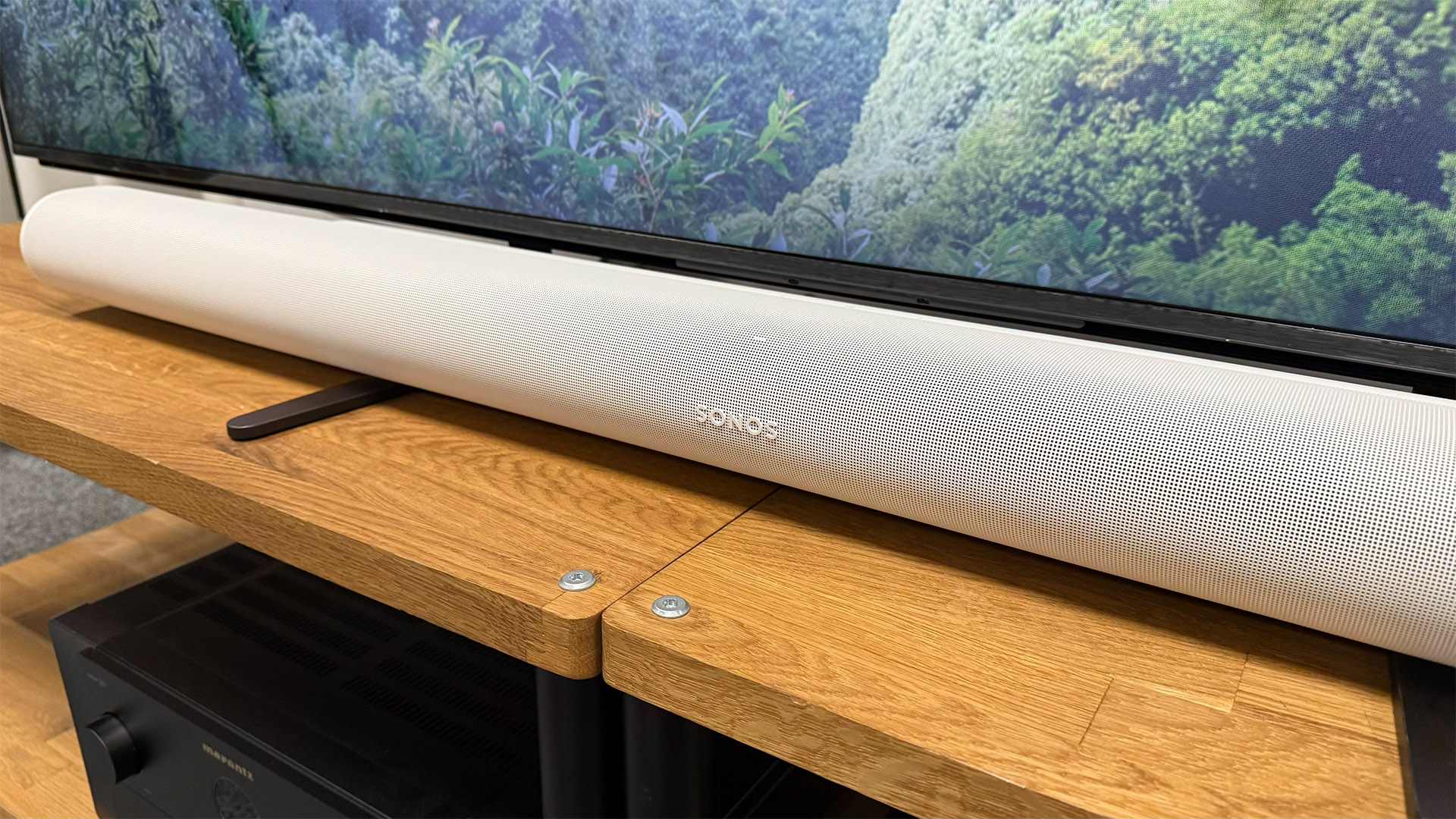
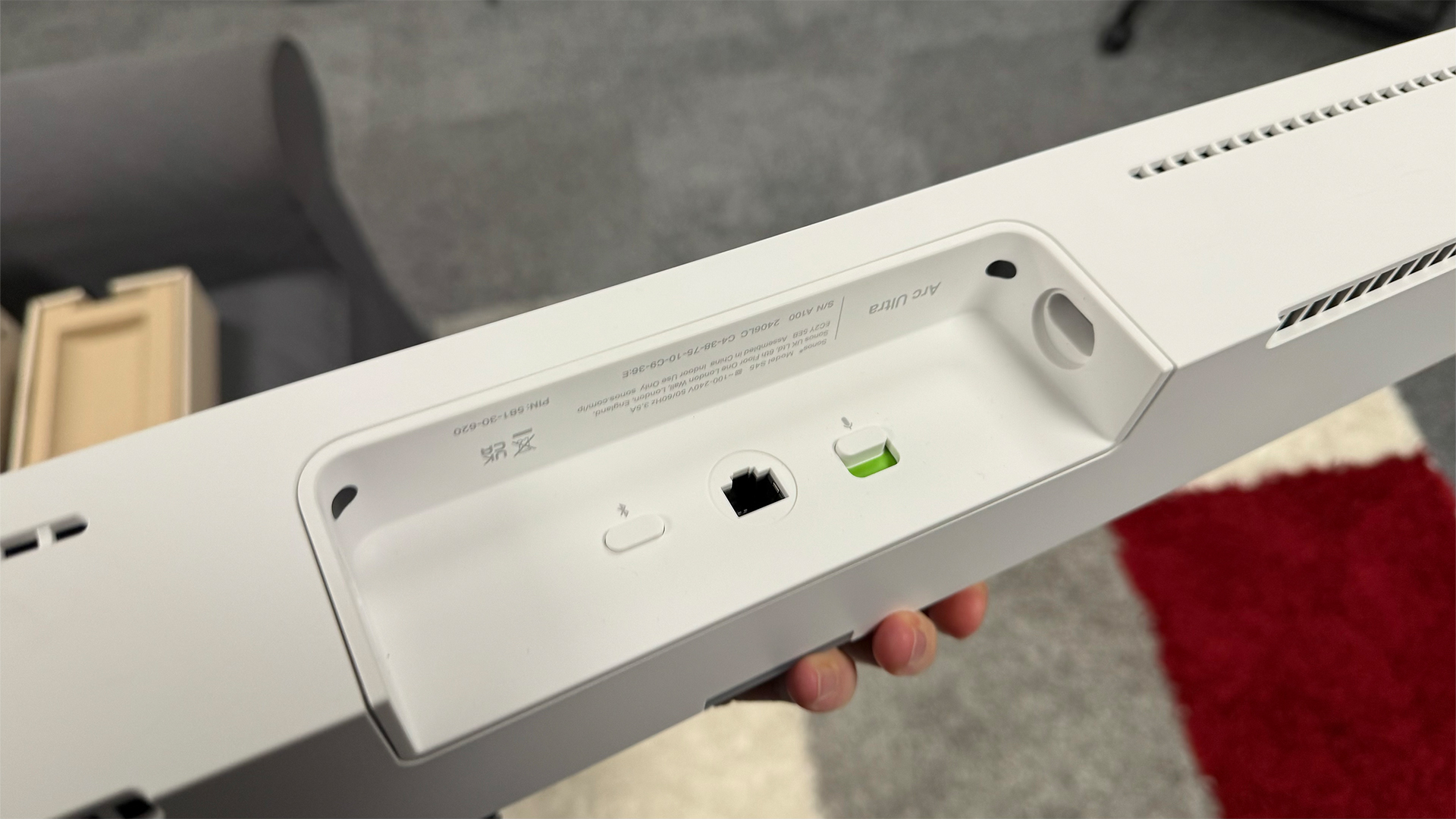

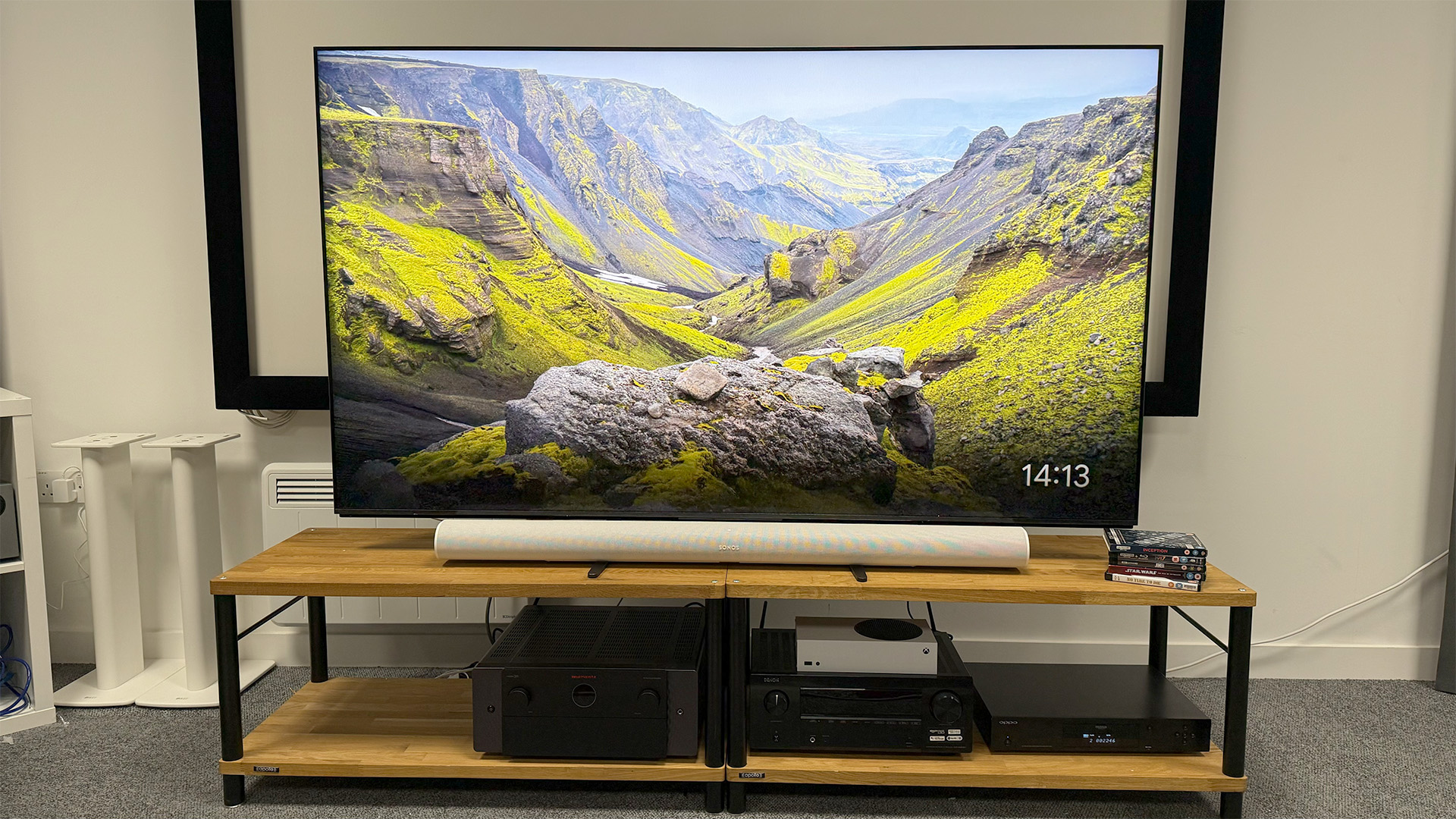
Specifications
Reasons to buy
Reasons to avoid
Replacing the original Sonos Arc can't have been a simple task (it's in the What Hi-Fi? Hall of Fame for very good reason) but, after literal years of rumours, said replacement is finally here – and it's exceptionally good.
The Arc Ultra looks very similar to its predecessor, but it's slightly less thick, which means it's even less likely to obstruct the bottom of your TV's image, and the new 'ledge', which houses most of the touch controls, is a stylish new touch.
As has always been the case with Sonos soundbars, simplicity is key. There's no remote or display – you just connect it to your TV via HDMI eARC and it takes over from your TV's speakers. For many people, that's ideal, but for others, the Arc Ultra will seem limited – particularly in its lack of dedicated HDMI inputs. The lack of DTS:X support will bother some people, too, and it's fair to say that the Sonos app, while better than it has been, is still a little bit buggy.
Those flaws are worth overlooking if you're able to, though, because the sound quality is superb. The delivery is so crisp, clean and precise that it makes the original Arc sound a bit vague in comparison. It's also vastly superior in terms of how much it fills the room and how accurately it places and tracks effects in three-dimensional space. A soundbar system that includes wireless surrounds and a sub, such as the Samsung HW-Q990D, will be even better in this regard, but the Atmos effect that the Arc Ultra delivers is deeply impressive by the standards of a solo soundbar – and you can always add surrounds and a dedicated subwoofer to the Arc Ultra at a later date if you have the appetite (and deep pockets).
The Arc Ultra also features a unique 'Sound Motion' woofer, which is markedly different to a typical speaker driver and which Sonos claims allows the new soundbar to produce 'double the bass' of its predecessor. In truth, the Arc Ultra doesn't sound vastly weightier than the previous model, but its bass is significantly punchier and more tuneful, even when really challenged. This is a real strength of the new soundbar.
These core audio qualities make the Arc Ultra almost as well-suited to music as it is to movies, which is very well indeed, making this a terrific all-rounder of a soundbar. If you can live with the lack of HDMI inputs, there's no better performance-per-pound soundbar around.
Read the full Sonos Arc Ultra review
Best cheap soundbar

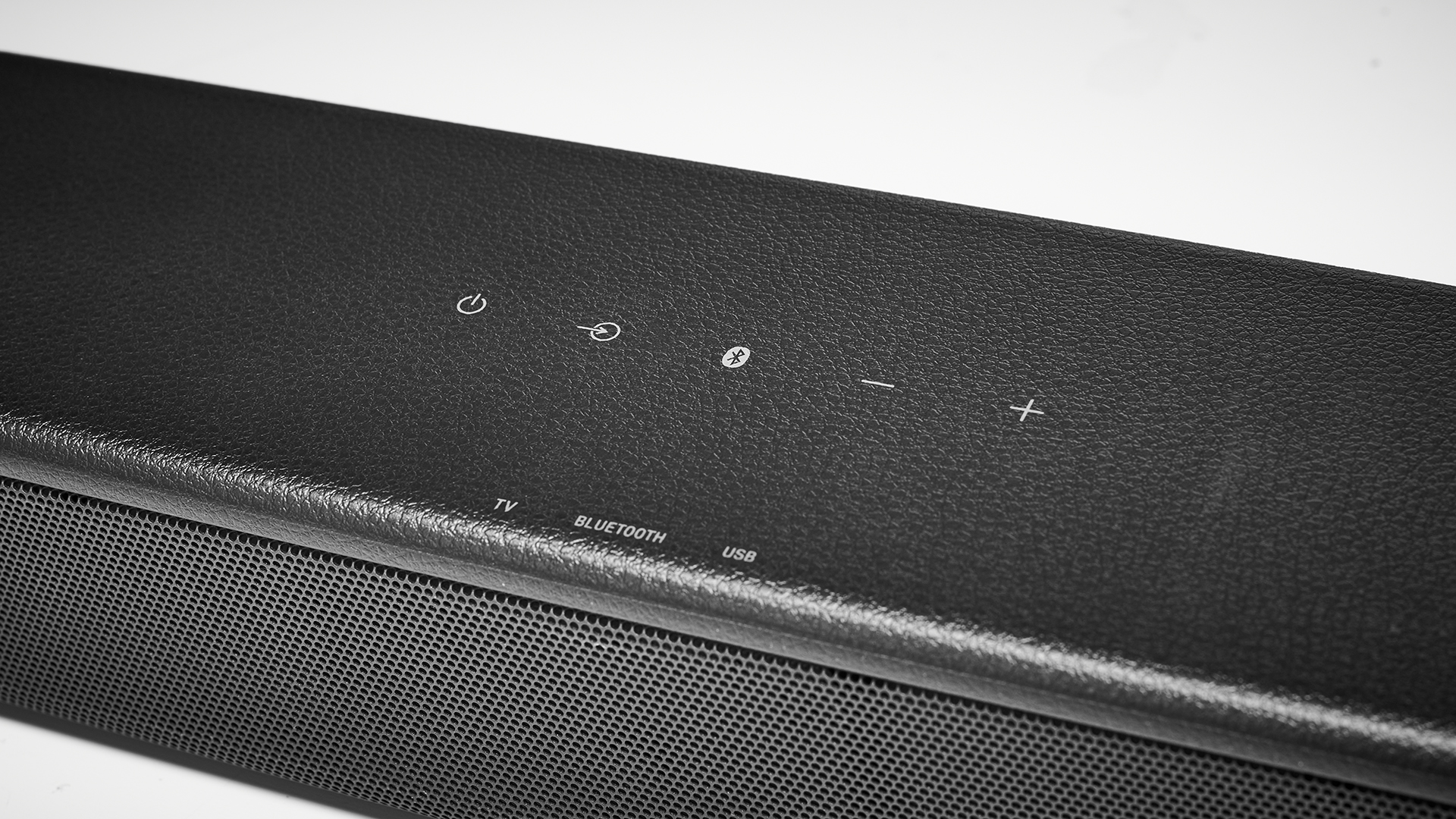
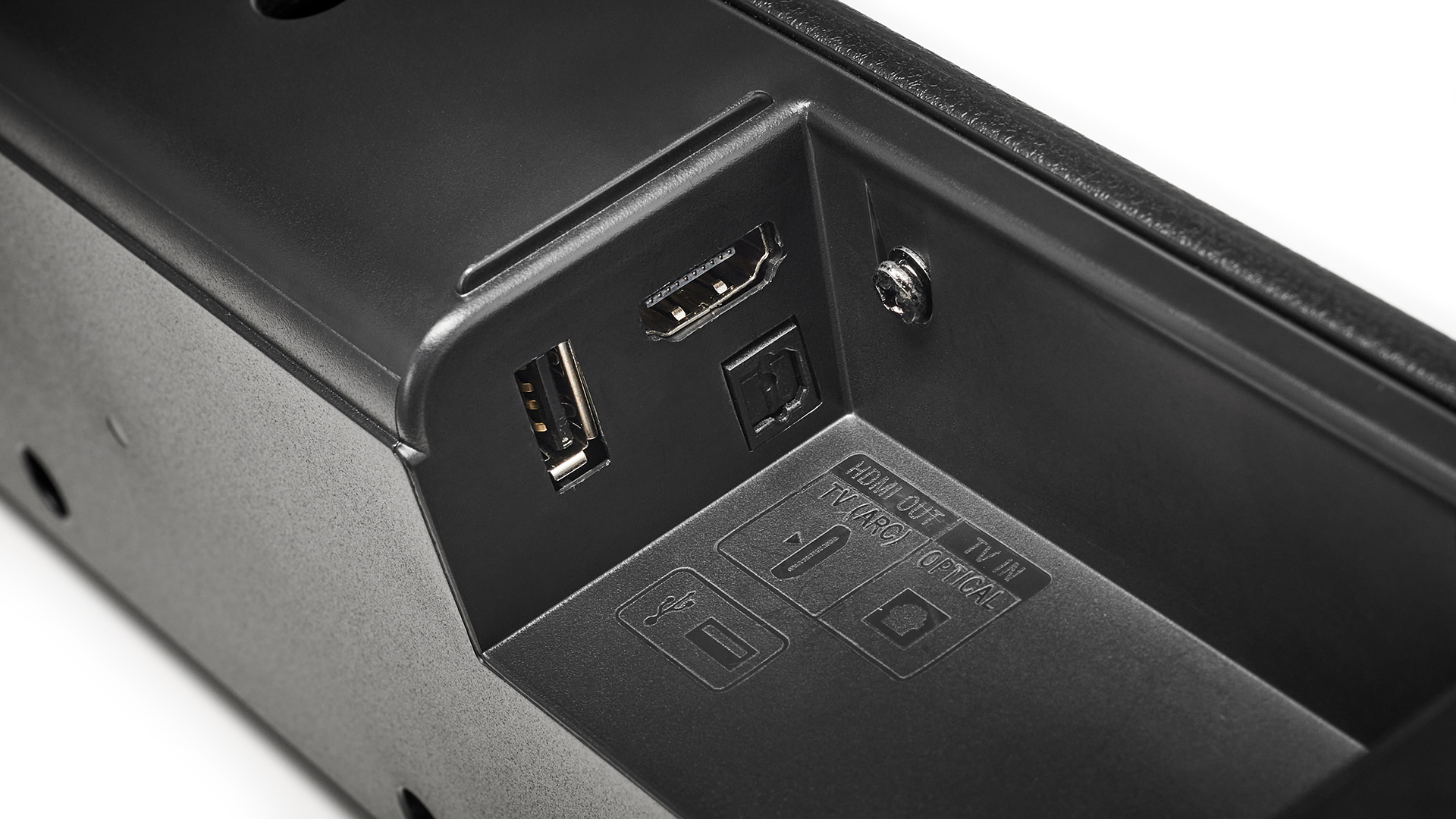
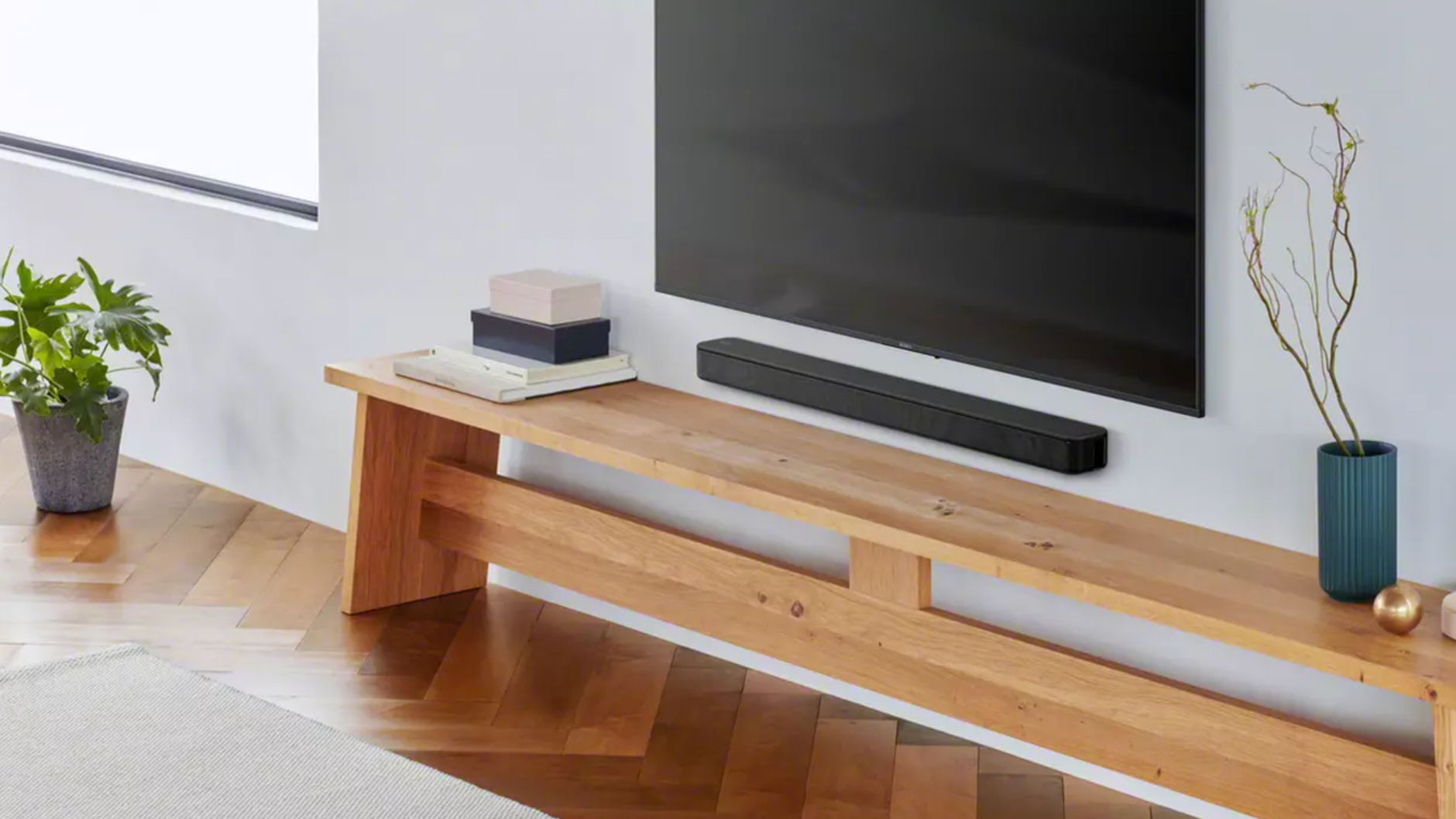
Specifications
Reasons to buy
Reasons to avoid
If you're looking for a simple, constructive step up in sound from your TV's in-built speakers, Sony's HT-SF150 (known as the HT-S100F in the US) offers a significant sonic enhancement for little outlay. Indeed there's almost no other competition worth considering for under £100 / $100 / AU$200.
While the SF150 is very affordable indeed, it doesn't look or feel cheap and it won't look out of place nestled below a much more premium TV. Alongside HDMI ARC, it has an optical input supporting Dolby Digital, Dolby Dual mono and LPCM 2ch. There's also a USB port and Bluetooth 4.2 connectivity for music playback from an external source too.
The SF150 also features Sony's S-Force Front Surround technology, which applies processing to give the acoustic impression of a more encompassing soundstage. While there is no replacement for surround sound, it adds a dramatic sense of weight and separation.
Of course, you're not going to get sonic perfection for this sort of money, and the SF150's delivery of dialogue can be a smidge muffled at times. A little more impact to effects would be welcome, too. Still, the broad-strokes approach to sound taken here is probably a sensible one that means the 'bar gets the basics right and never offends. Anyone wanting a musical, finely detailed speaker should aim for a more sophisticated model. Still, this budget bar is ideal for those looking for a quick and easy improvement to their TV.
Read our full Sony HT-SF150 review
Best step-up soundbar
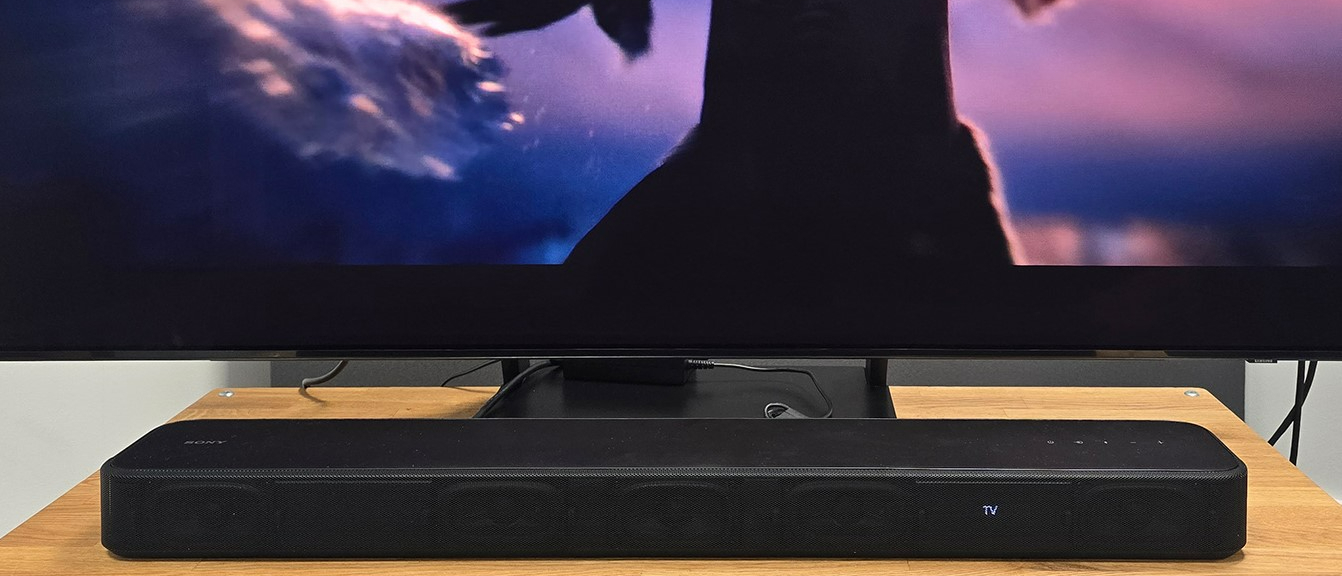
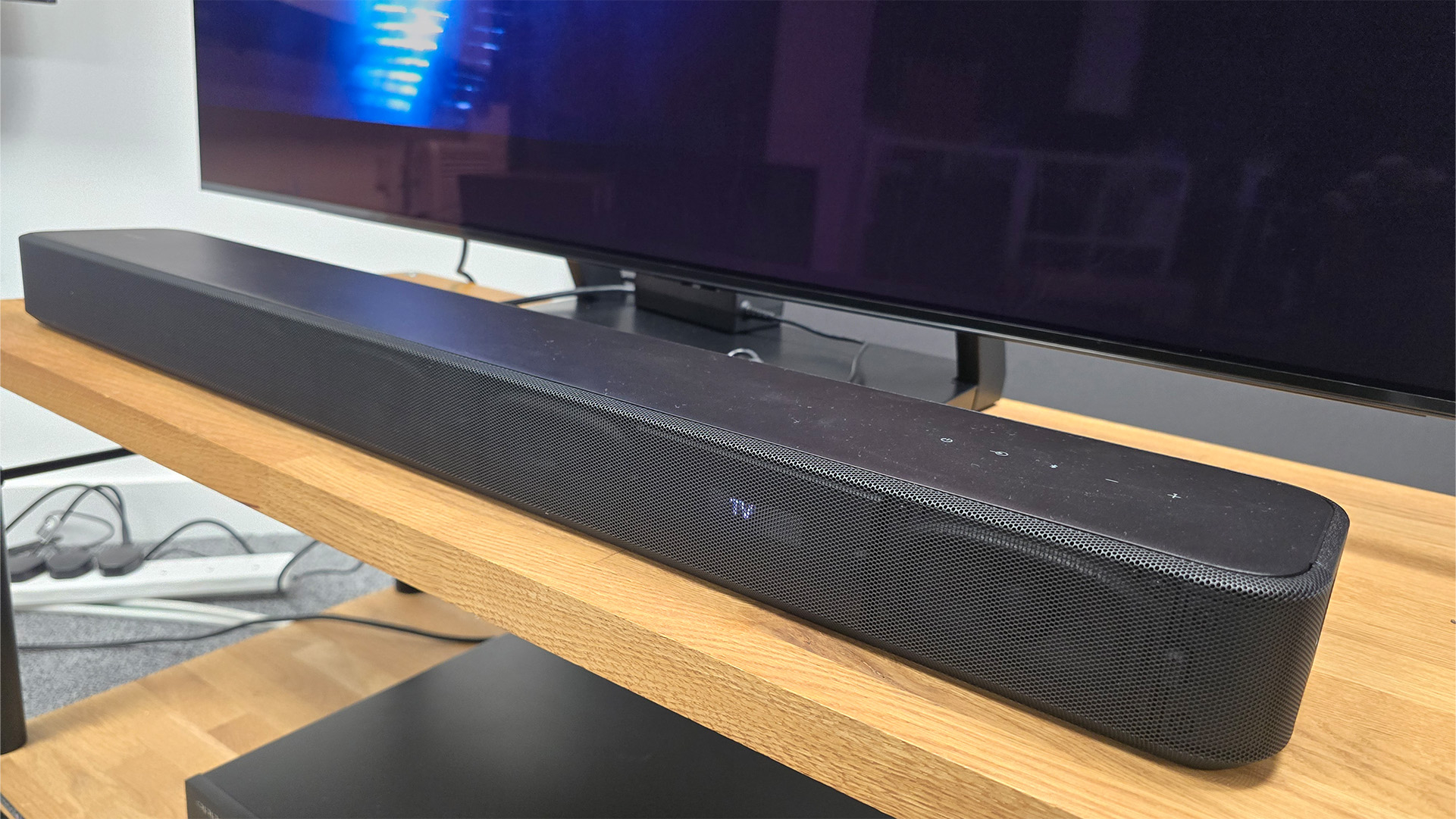
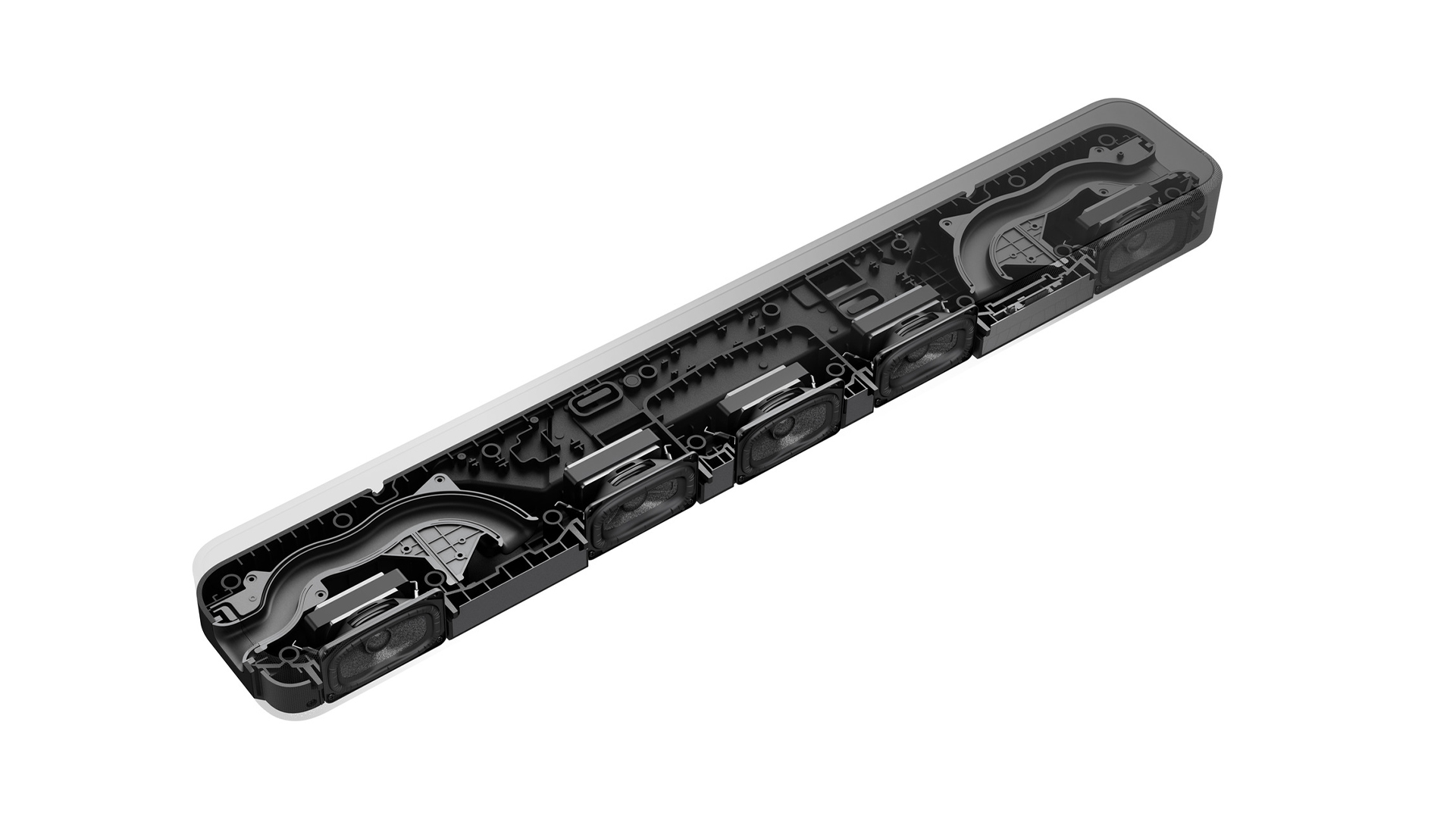
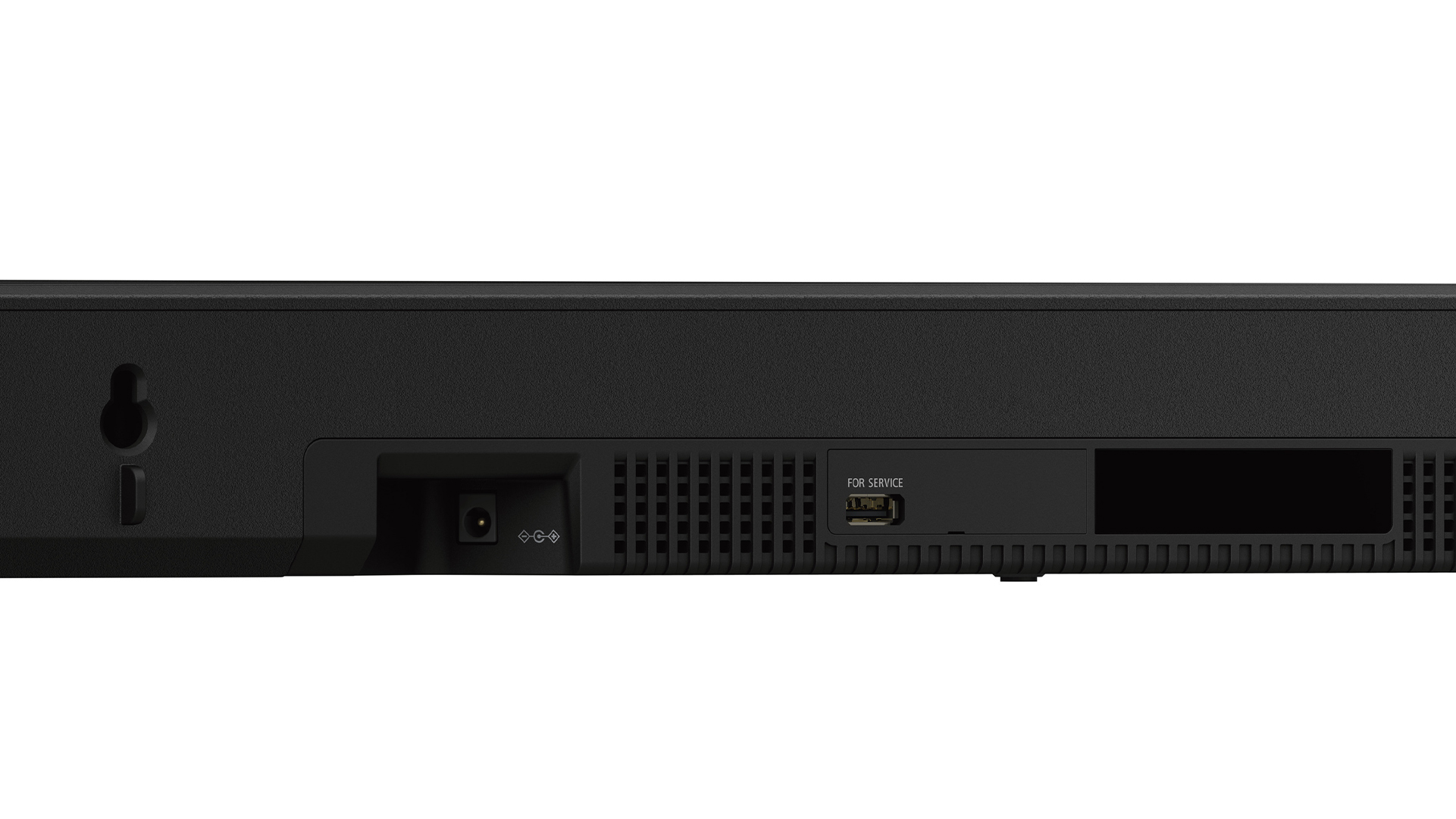
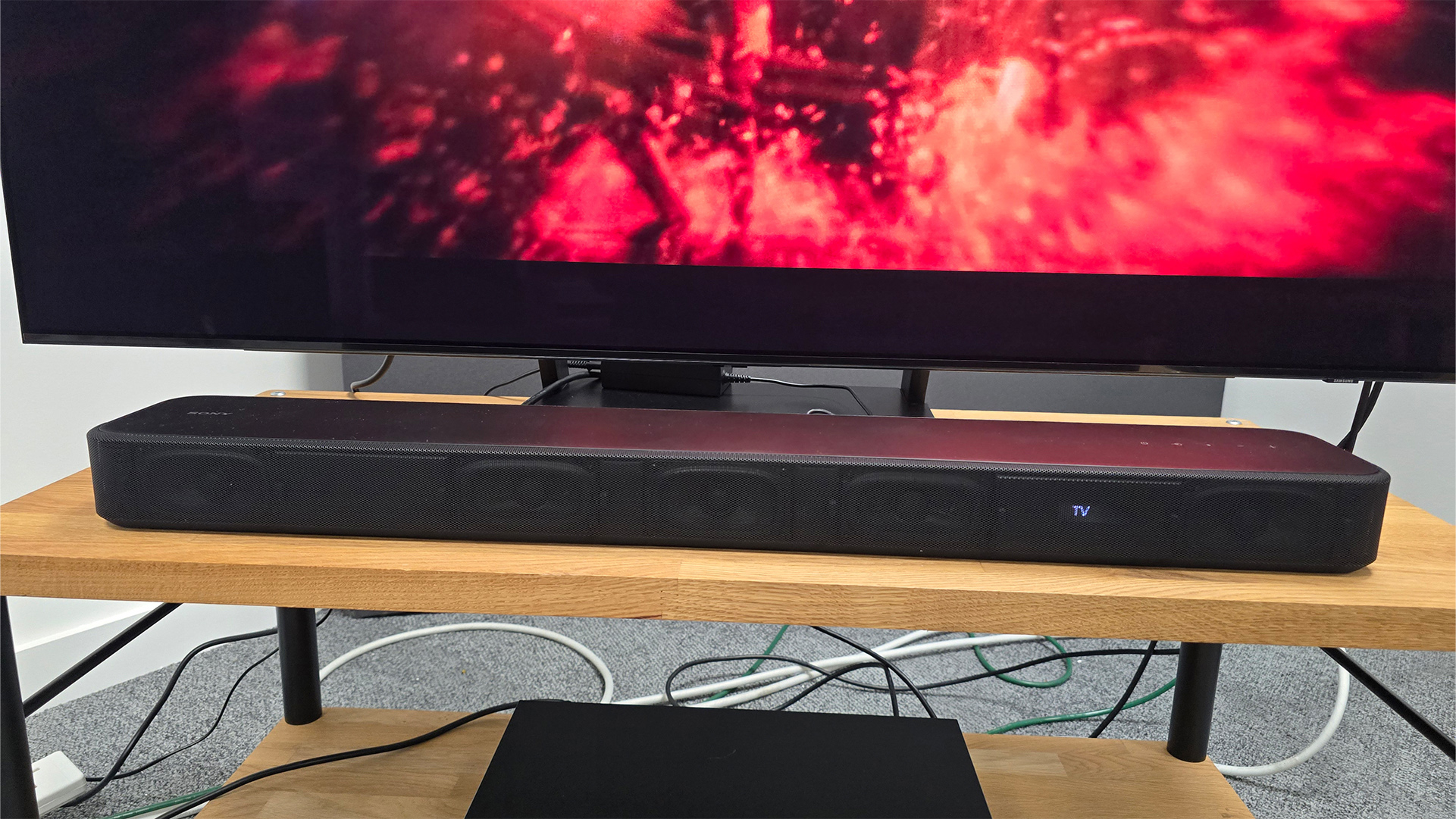
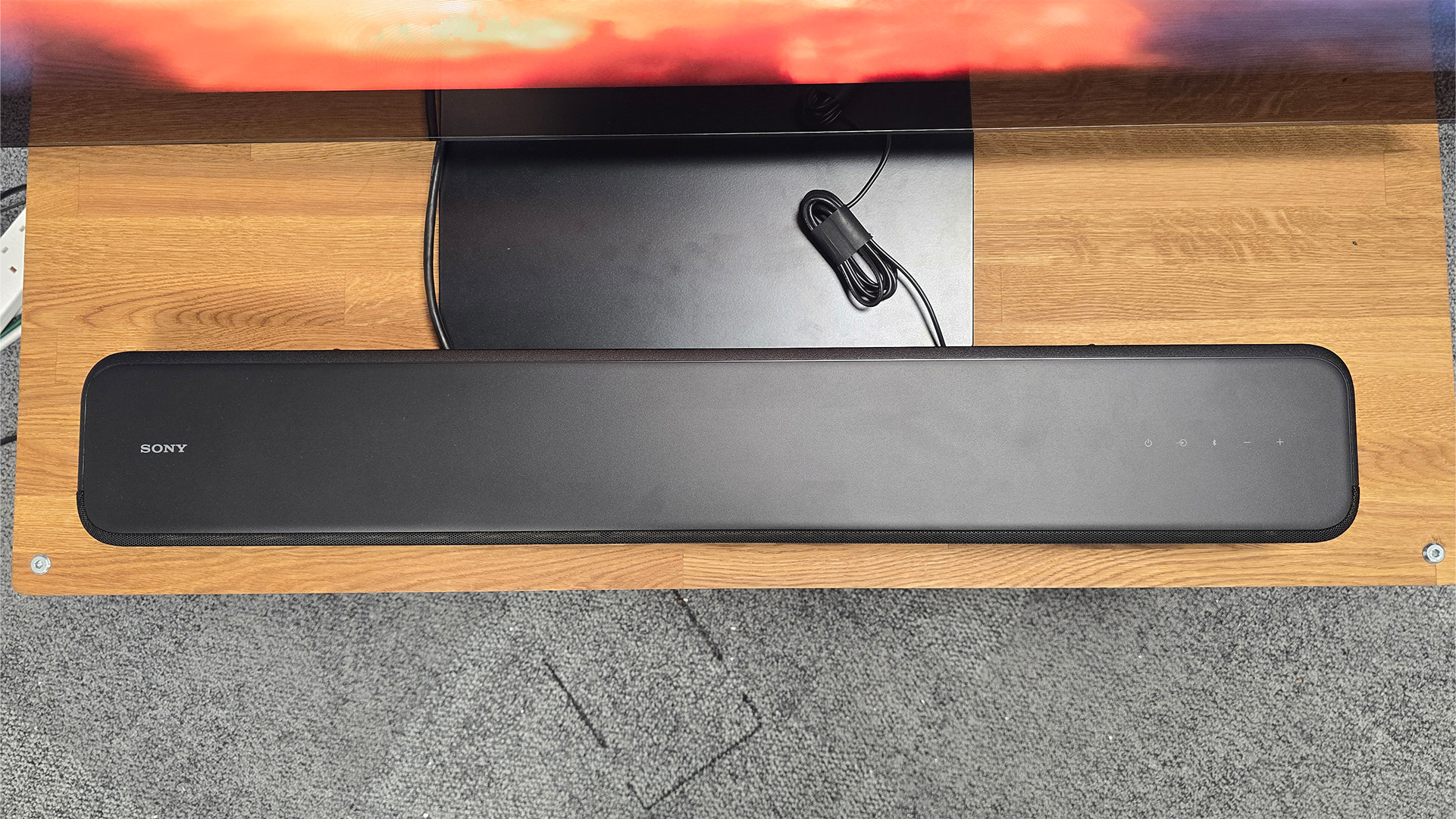
Specifications
Reasons to buy
Reasons to avoid
The HT-S2000 is a soundbar that’s centred on improving the sound that comes from your TV while keeping the cost as low as possible. There are few frills to find with this bar, with Sony opting for a straightforward design and feature set; but we think it's nailed it.
The S2000 is a fairly small unit, measuring just 6.4 x 80 x 12cm. It features Bluetooth 5.2 and HDMI eARC – something comparable bars such as the Sonos Ray do not offer. It also offers an Optical audio connection, in case your TV lacks eARC capabilities.
The S2000 uses a 3.1-channel arrangement with a built-in subwoofer and a total power output of 250W. There are no upfiring drivers which means that the height channels for the supported spatial audio formats, Dolby Atmos and DTS:X, are achieved through Sony’s Vertical Sound Engine psychoacoustic sound processing system.
If you want to improve the audio of your favourite shows and movies at a price that won’t put you off, then the Sony is worthy of attention. It provides clearer, more dynamic and more direct sound than your TV will be capable of mustering. Sure, you can spend more on meatier-sounding soundbars, but at this price, the S2000 offers plenty of quality.
Read our full Sony HT-S2000 review
Best entry-level Dolby Atmos soundbar
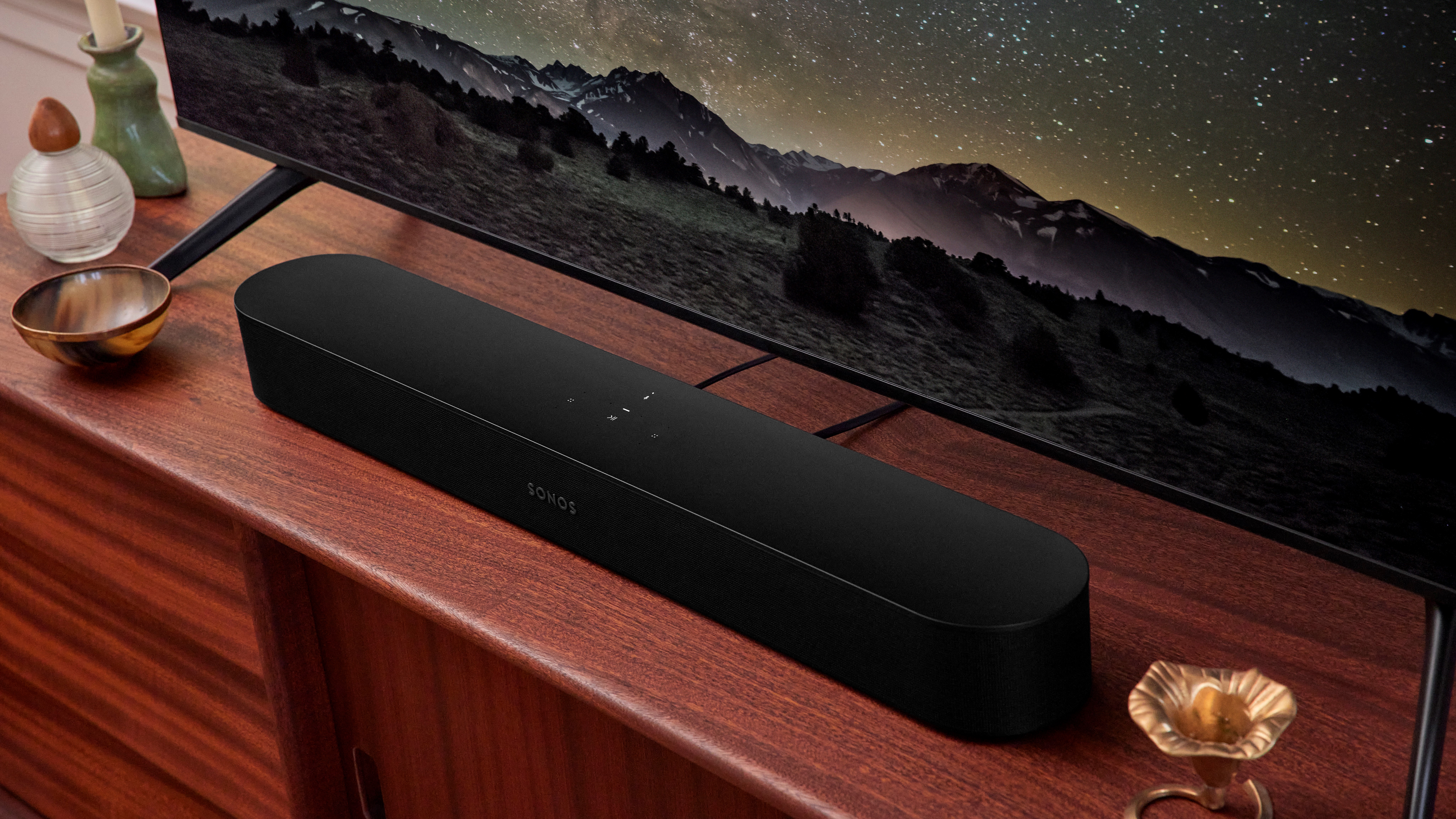
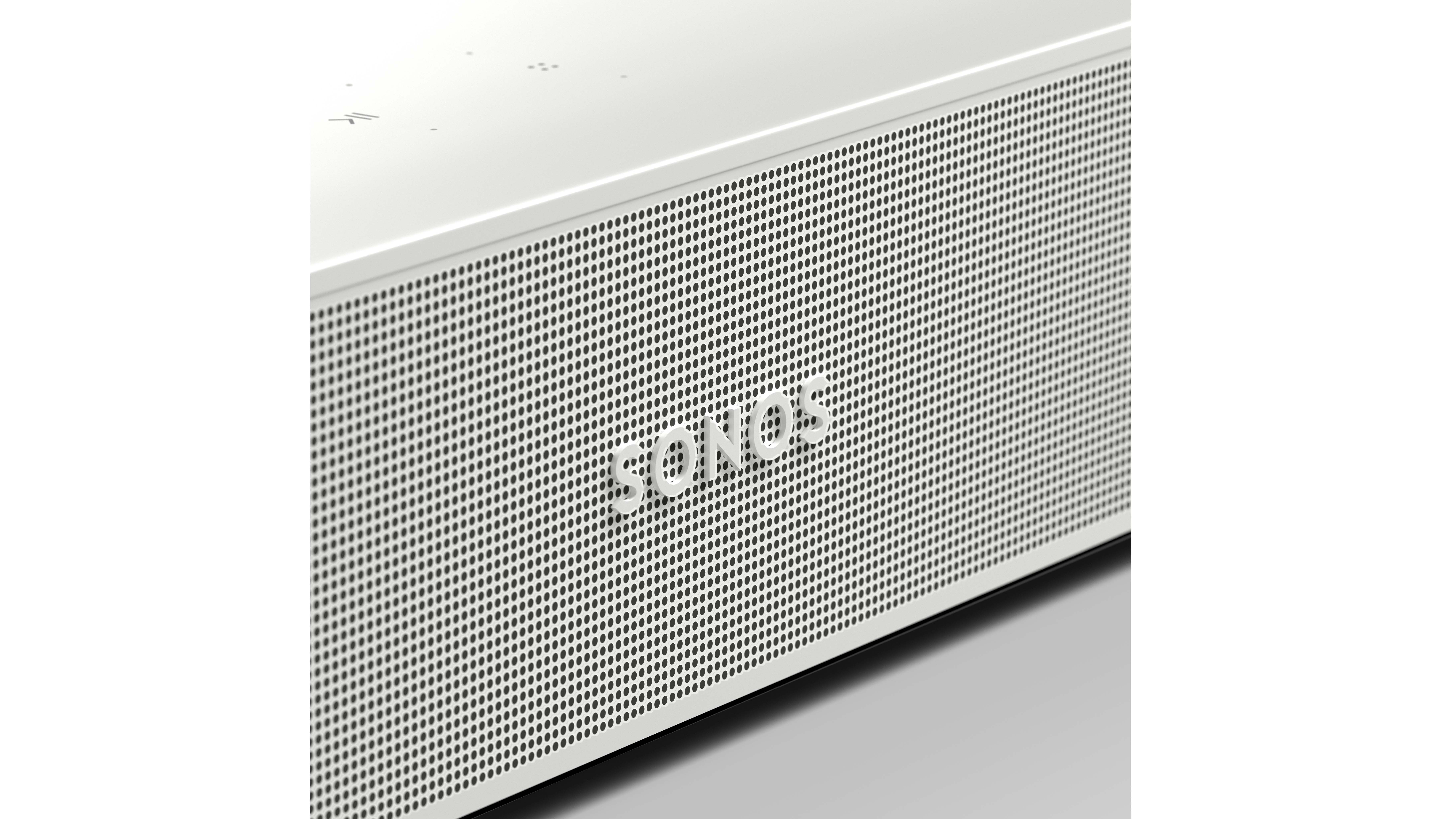
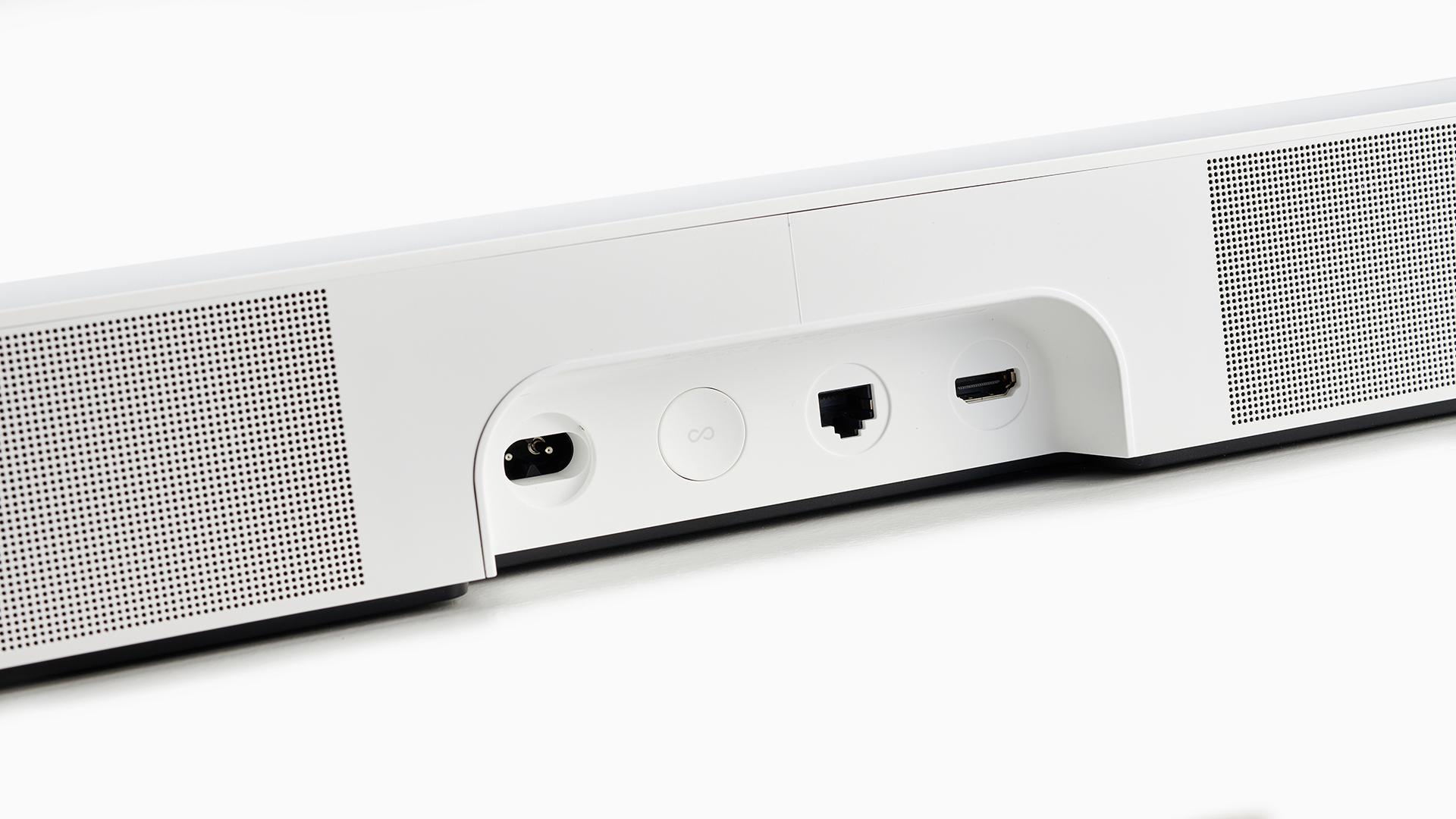
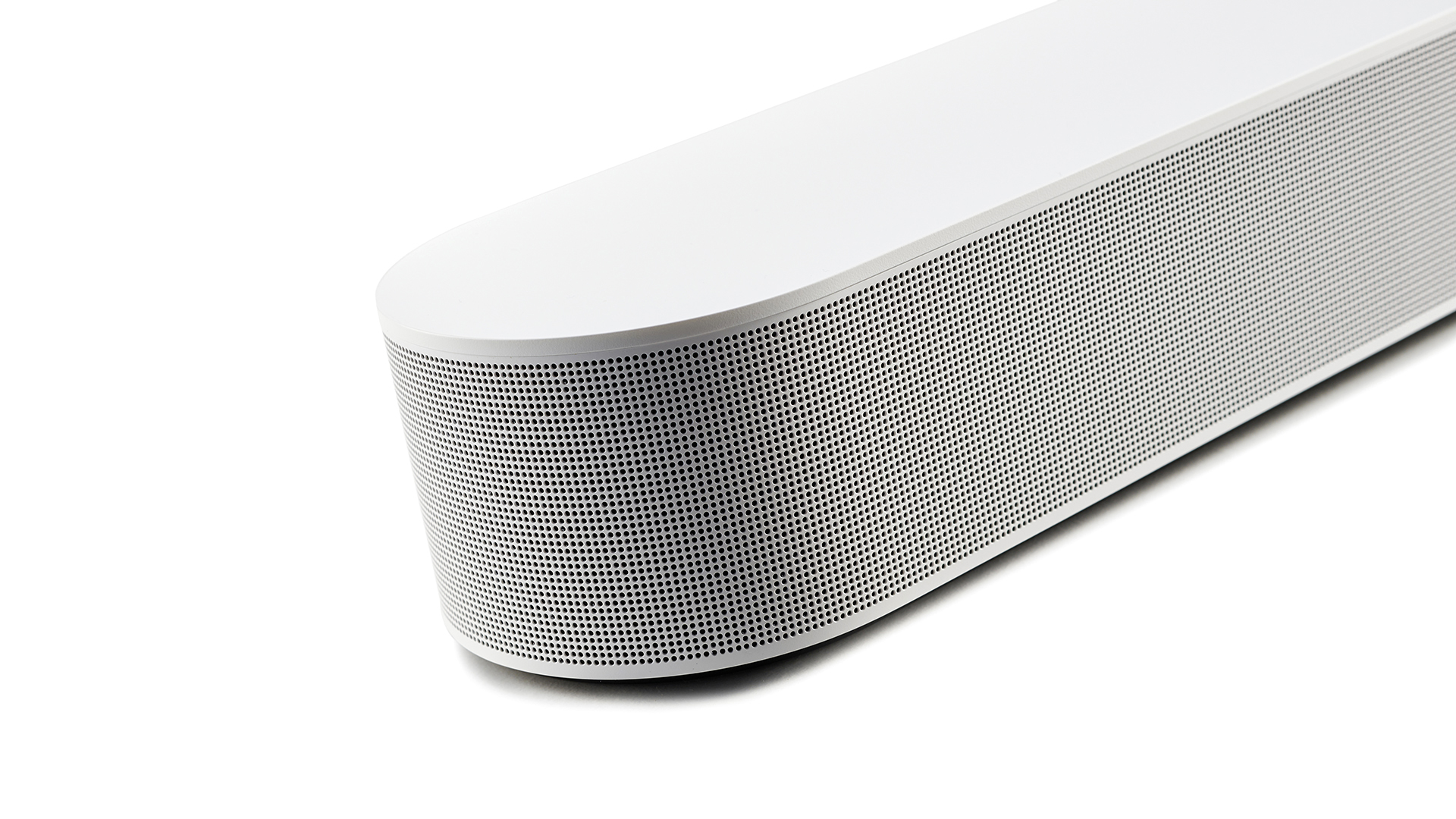
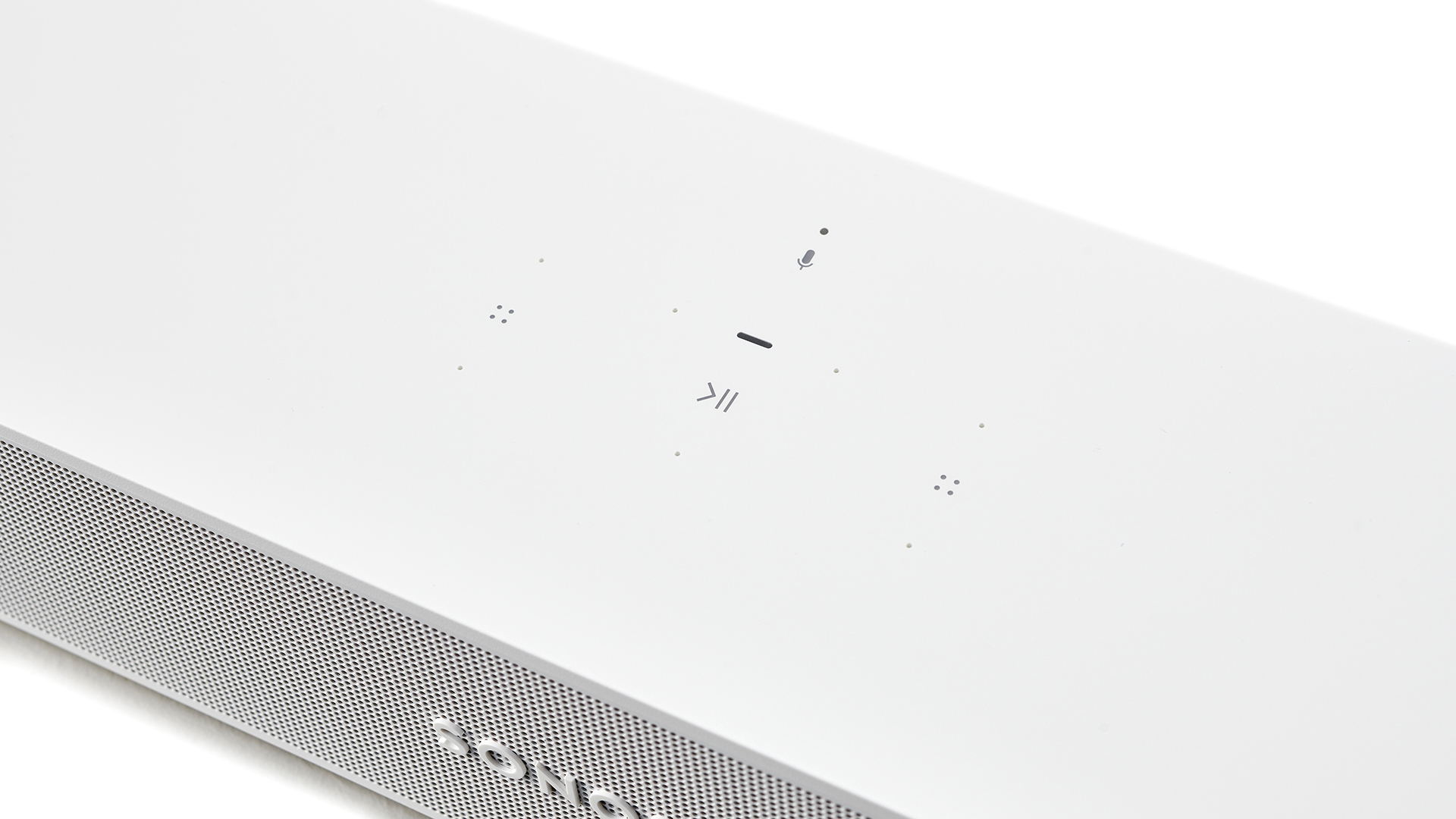
Specifications
Reasons to buy
Reasons to avoid
While it's undeniably diminutive in stature, everything else about the Beam Gen 2 is deeply impressive. Sonos essentially took its original Beam and added genuinely convincing Dolby Atmos without changing the overall design or adding dedicated upward-firing drivers.
It's all done through clever processing: the Beam Gen 2 uses psychoacoustic HRTF (head-related transfer function) technology to deliver a sense of height using two of the unit's five front-facing drivers.
The effect, while not quite as immersive as that offered by soundbars with dedicated up-firing speakers, is still very impressive, particularly considering the size and price of the Beam. All told, it provides an enveloping presentation that's rich, three-dimensional and full of detail.
During testing, we paired the Beam Gen 2 with TVs ranging from 43 inches to 65 inches in size, and in each case found that it "enhanced the cinematic scale and viewing experience". So don't discount this little soundbar if you've got a big TV.
Of course, with this being a Sonos soundbar, movie and TV sound is only one of its features. On top of that, you can use it as a full Sonos wireless speaker and even integrate it into a Sonos multi-room system. Control can be done via the Sonos S2 app, or you can simply send music to the 'bar using AirPlay 2, Spotify Connect or Tidal Connect. It even now supports hi-res 24-bit/48kHz 'Ultra HD' tracks from Amazon Music.
To cut a long story short, if you want a small, affordable soundbar that can deliver convincing Dolby Atmos, the Sonos Beam Gen 2 is the 'bar for you.
Read the full Sonos Beam Gen 2 review
Best mid-range soundbar
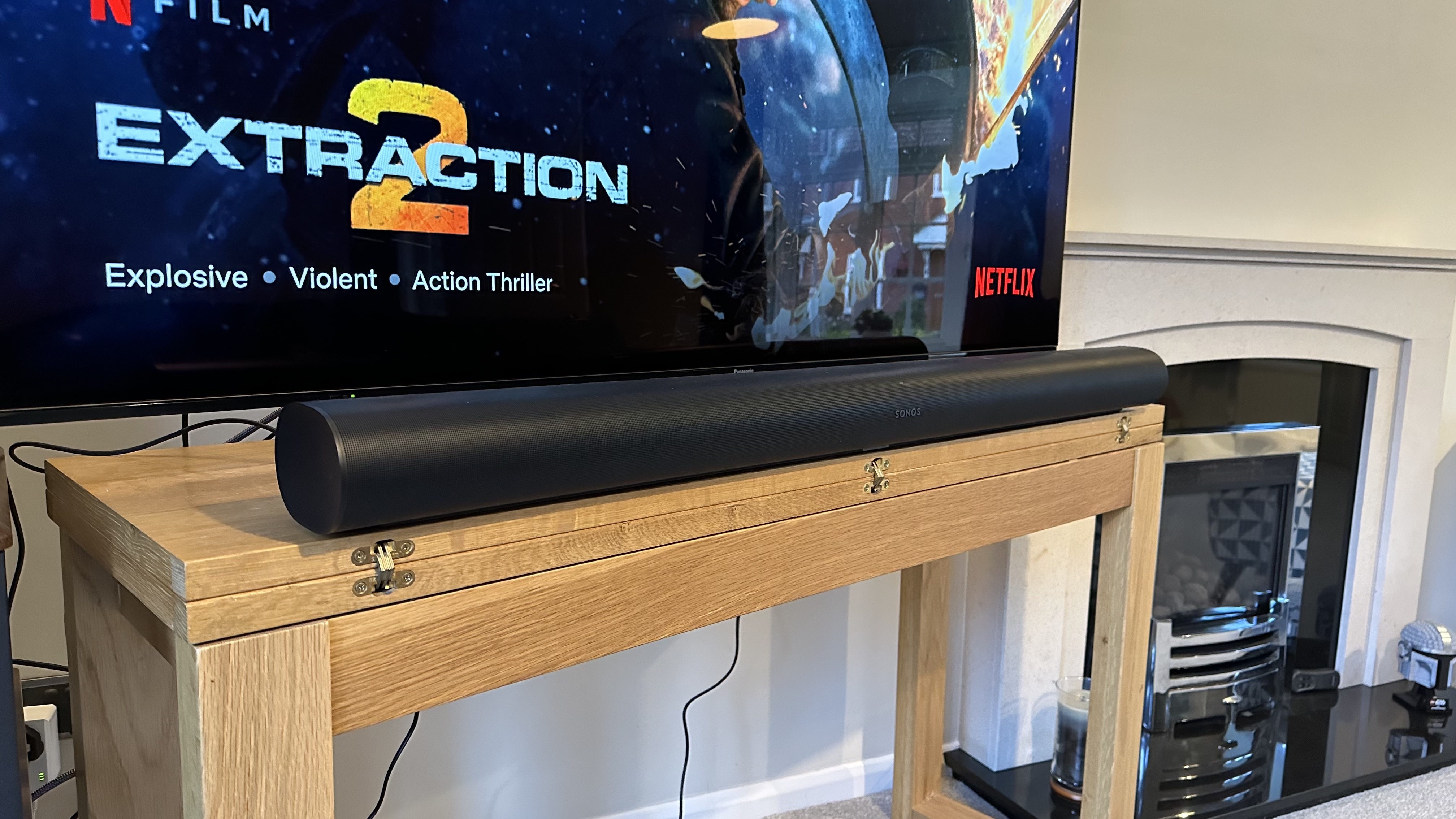
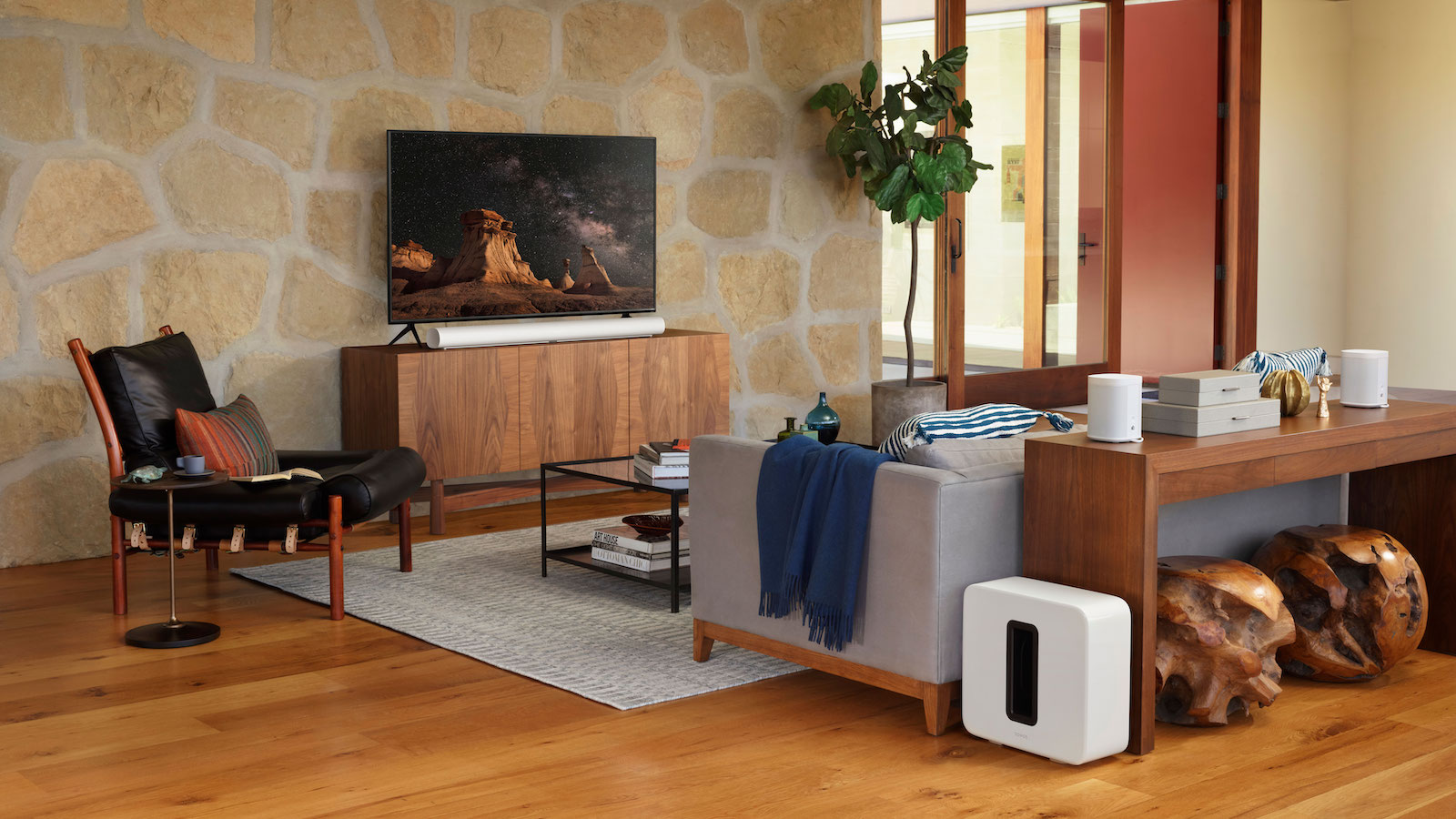
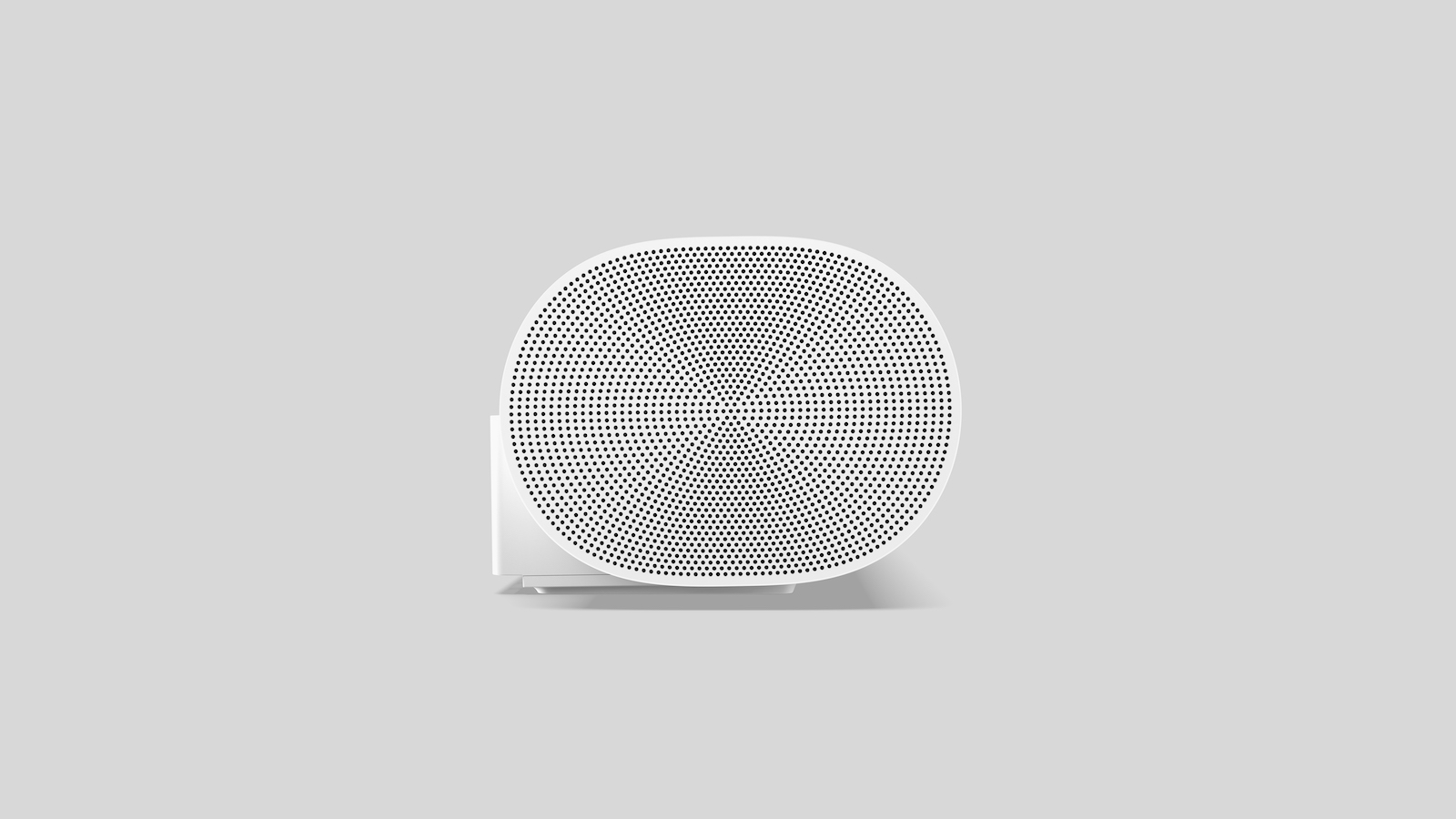
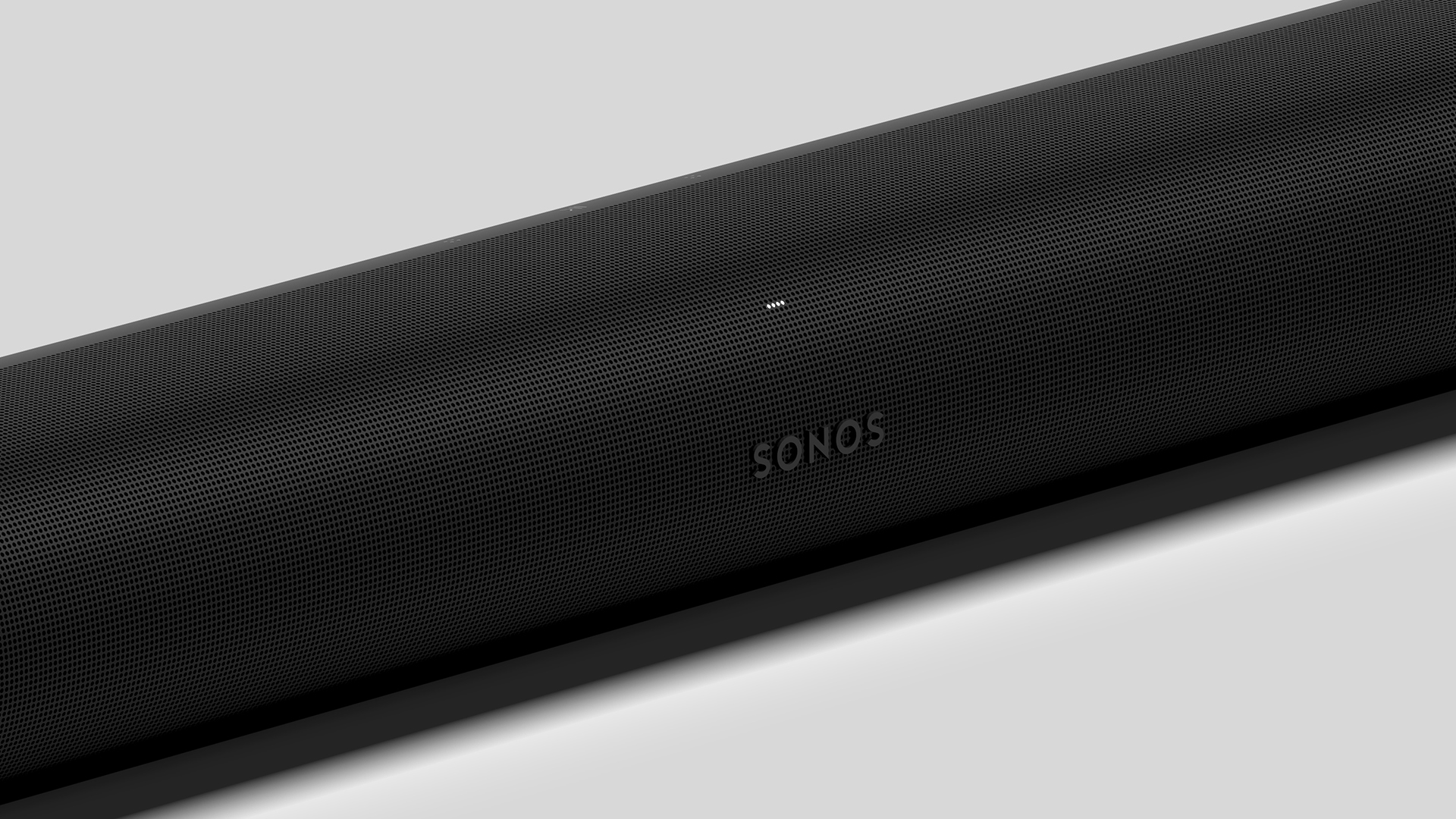
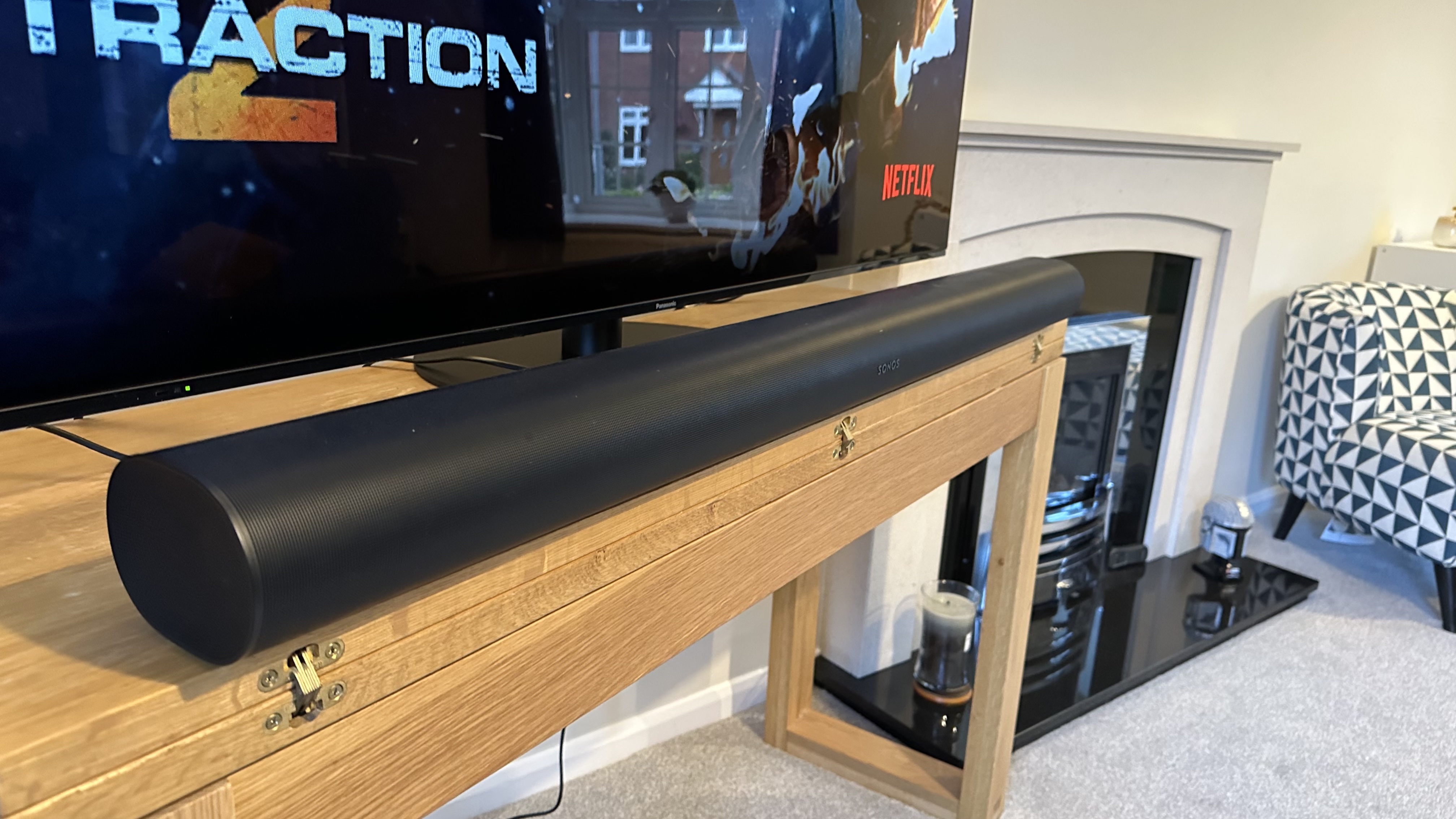
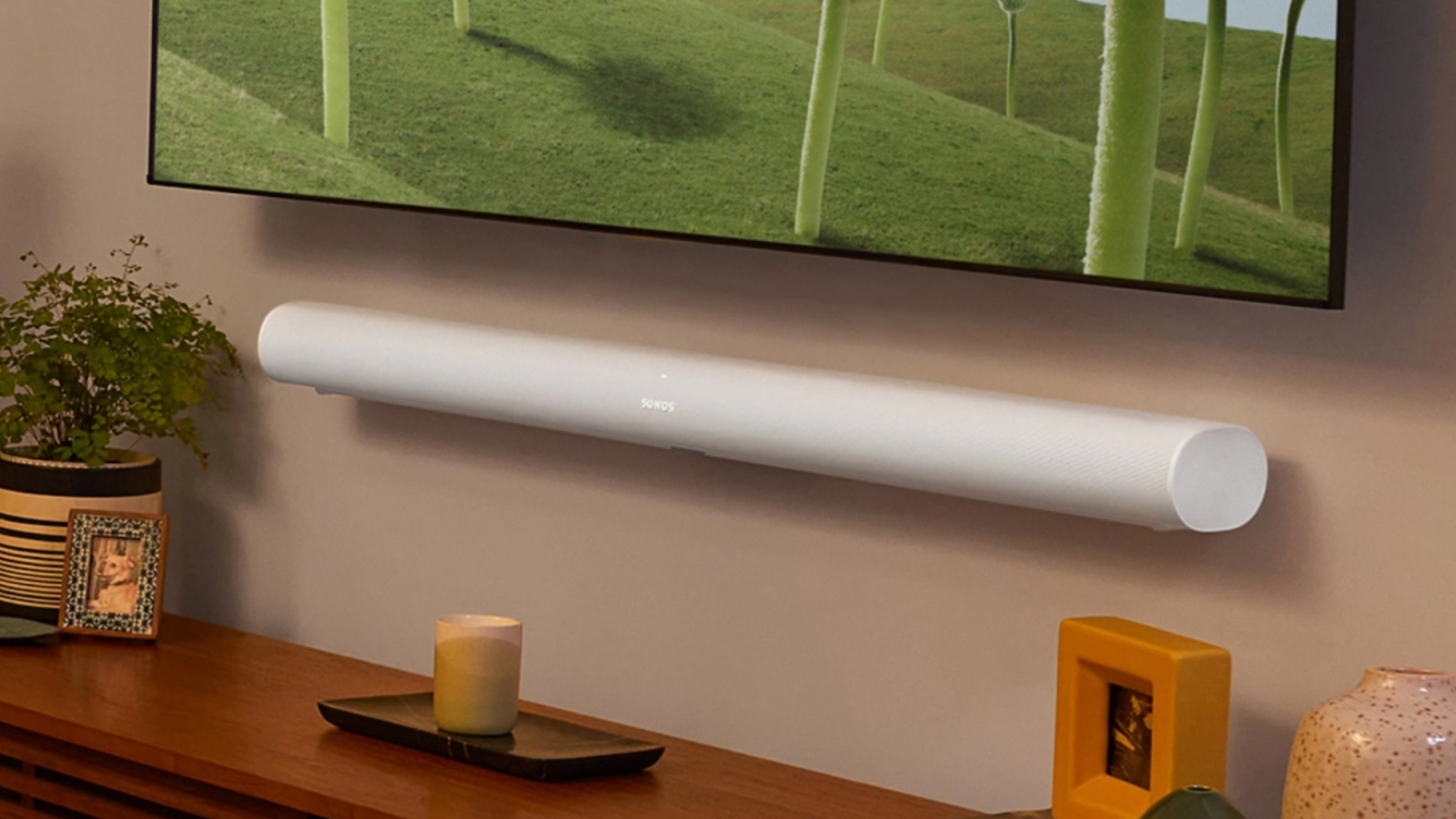
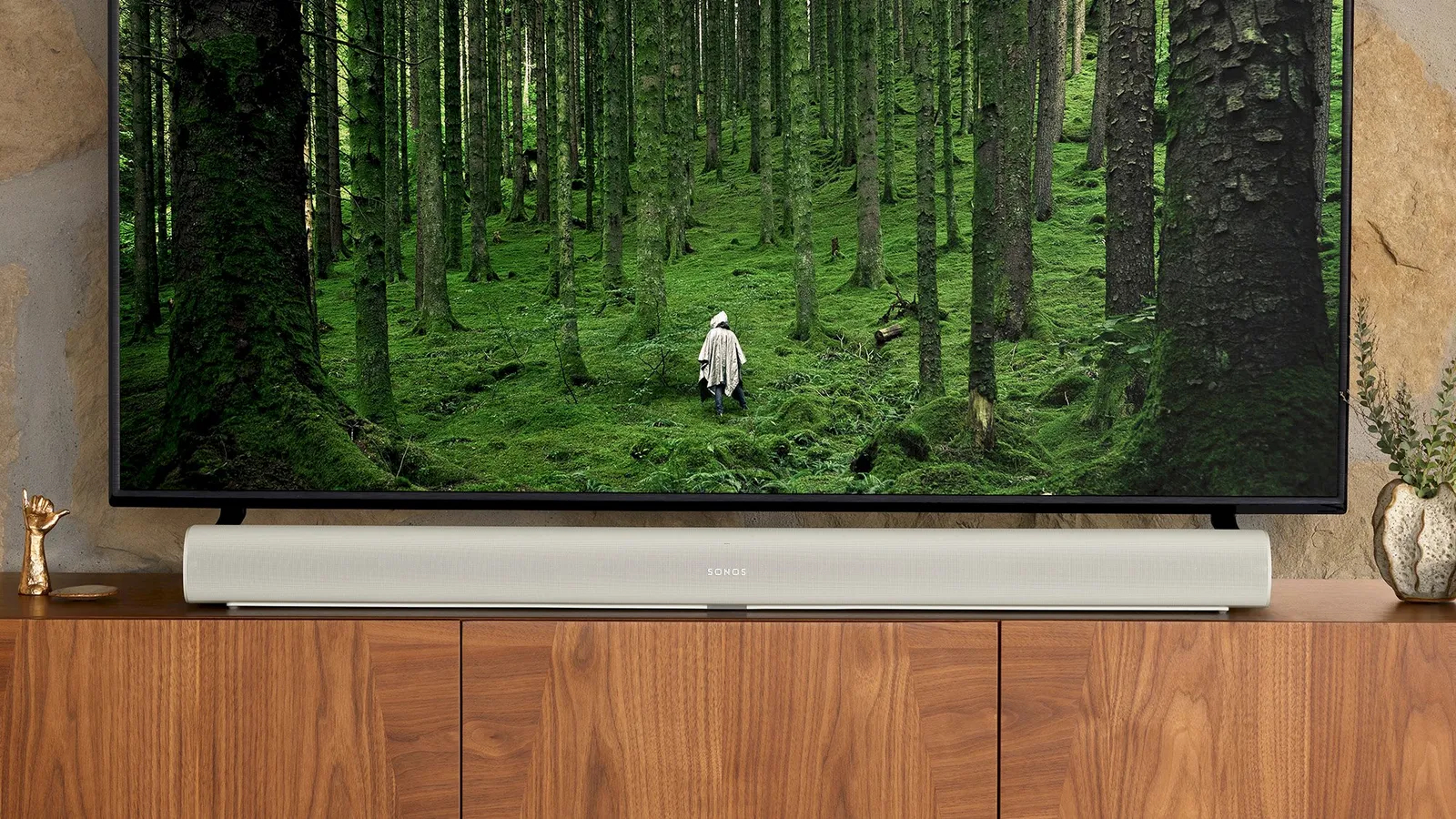
Specifications
Reasons to buy
Reasons to avoid
Soundbars for TV aren't new territory for Sonos, but the former What Hi-Fi? Award-winning Arc is the only soundbar from the brand, along with its Ultra sequel of course, to deliver Dolby Atmos with upfiring speakers. It sits above the Beam (Gen 2) in terms of pricing and is suited to 55-inch TVs and above, with optional wall mounting fixings available for £79 / $79 / AU$99.
There are touch-sensitive play/pause and volume controls on the bar with LEDs that indicate status and when you're talking to the built-in Google Assistant or Amazon Alexa. Connectivity includes AirPlay 2, ethernet and eARC for Dolby Atmos from compatible TVs.
The Sonos Arc uses 11 drivers to create your soundfield, several of which are upfiring and angled into your room to bounce sound off your walls and ceiling. “It’s so much more than just pointing a couple of speakers upwards,” said Sonos’s product manager Scott Fink when the Arc launched. “We focused on the playback precision of all the channels, including the height channels.” And that effort certainly paid off: the Arc offers one of the most convincing Atmos performances you can get from a single-chassis soundbar. Height junkies can turn up the volume of the Arc's upward-firing drivers using a separate control, but during our testing we don't find it necessary to overly boost the upfiring channels to enjoy the Arc's immersive delivery.
You're transported to the heart of the action. Surround effects are expertly placed, and there's great dynamism and good weight to the sound too. Tonally, it's nicely balanced if you just want to listen to music, although it could sound a tiny bit more direct. But make no mistake, this is a hugely impressive TV soundbar for the money.
Read our full Sonos Arc review
Best soundbar with HDMI 2.1
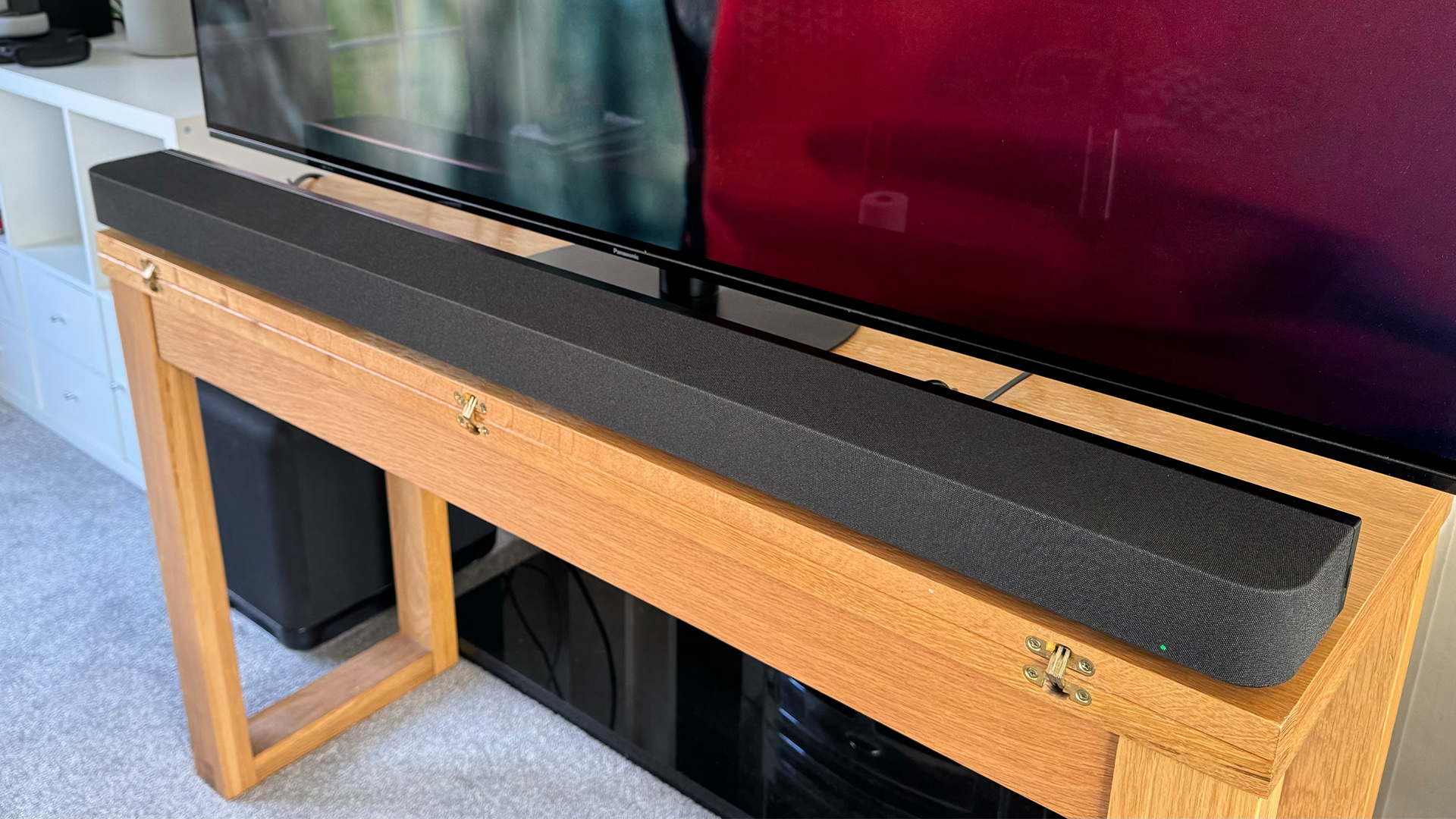
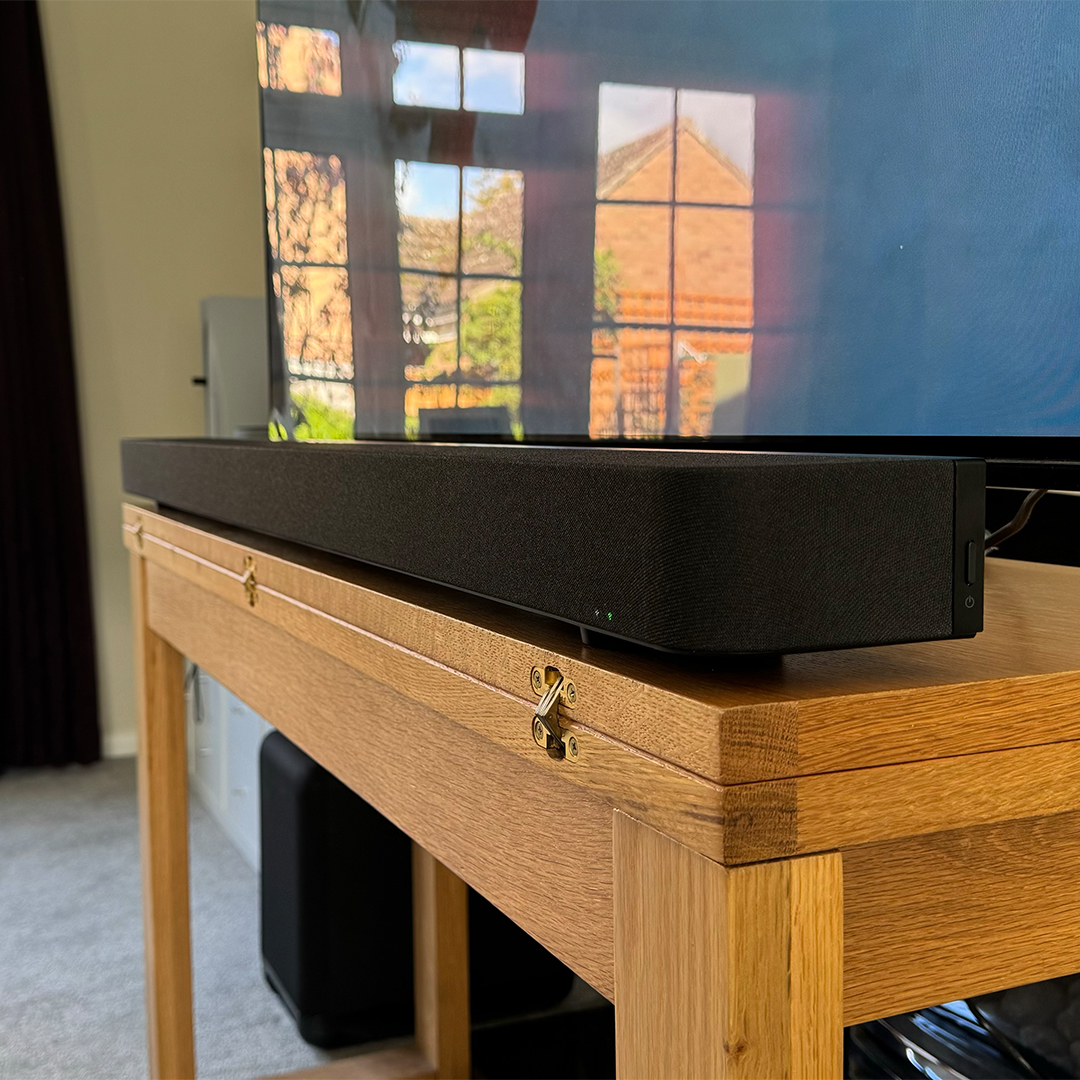
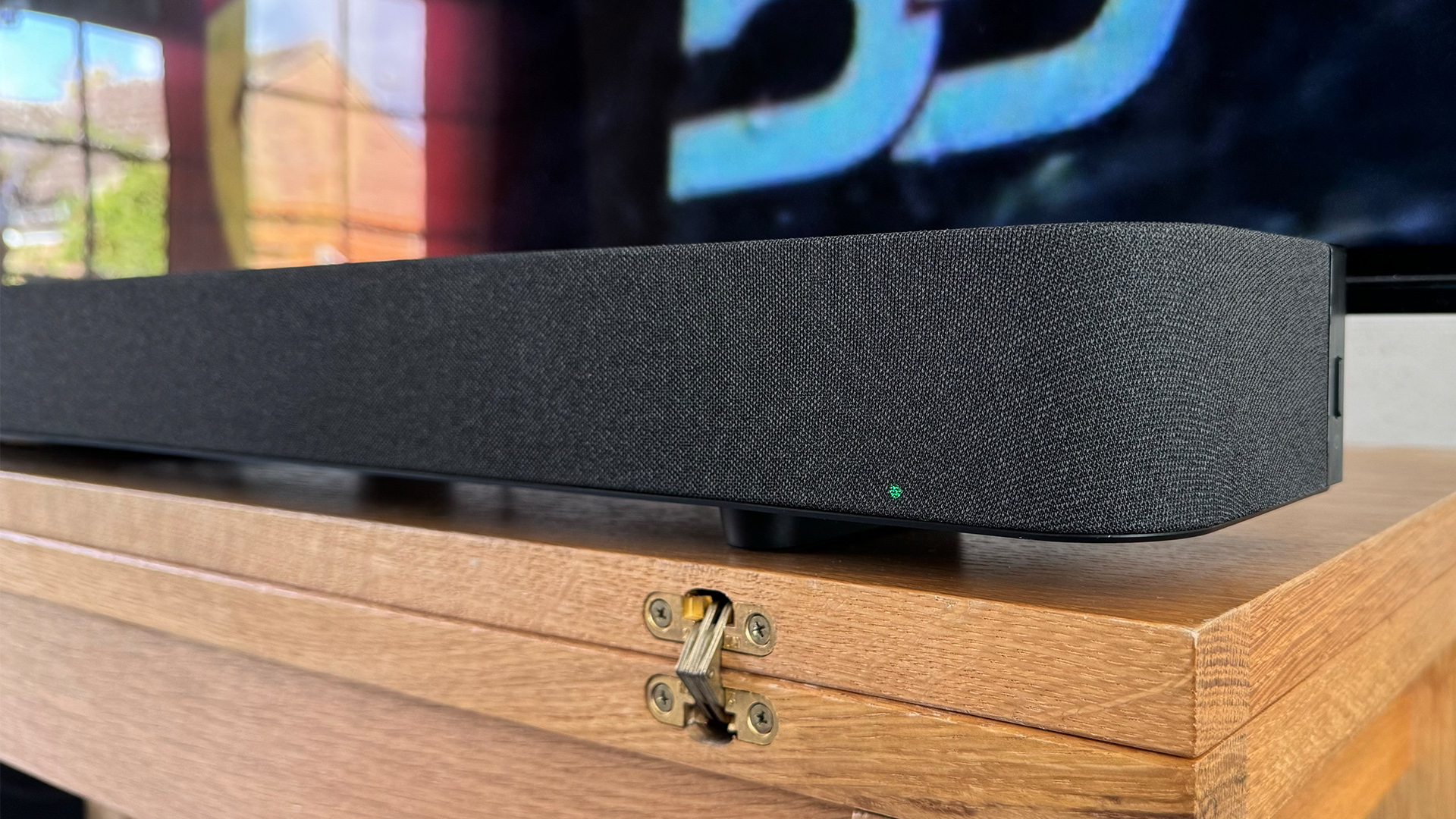
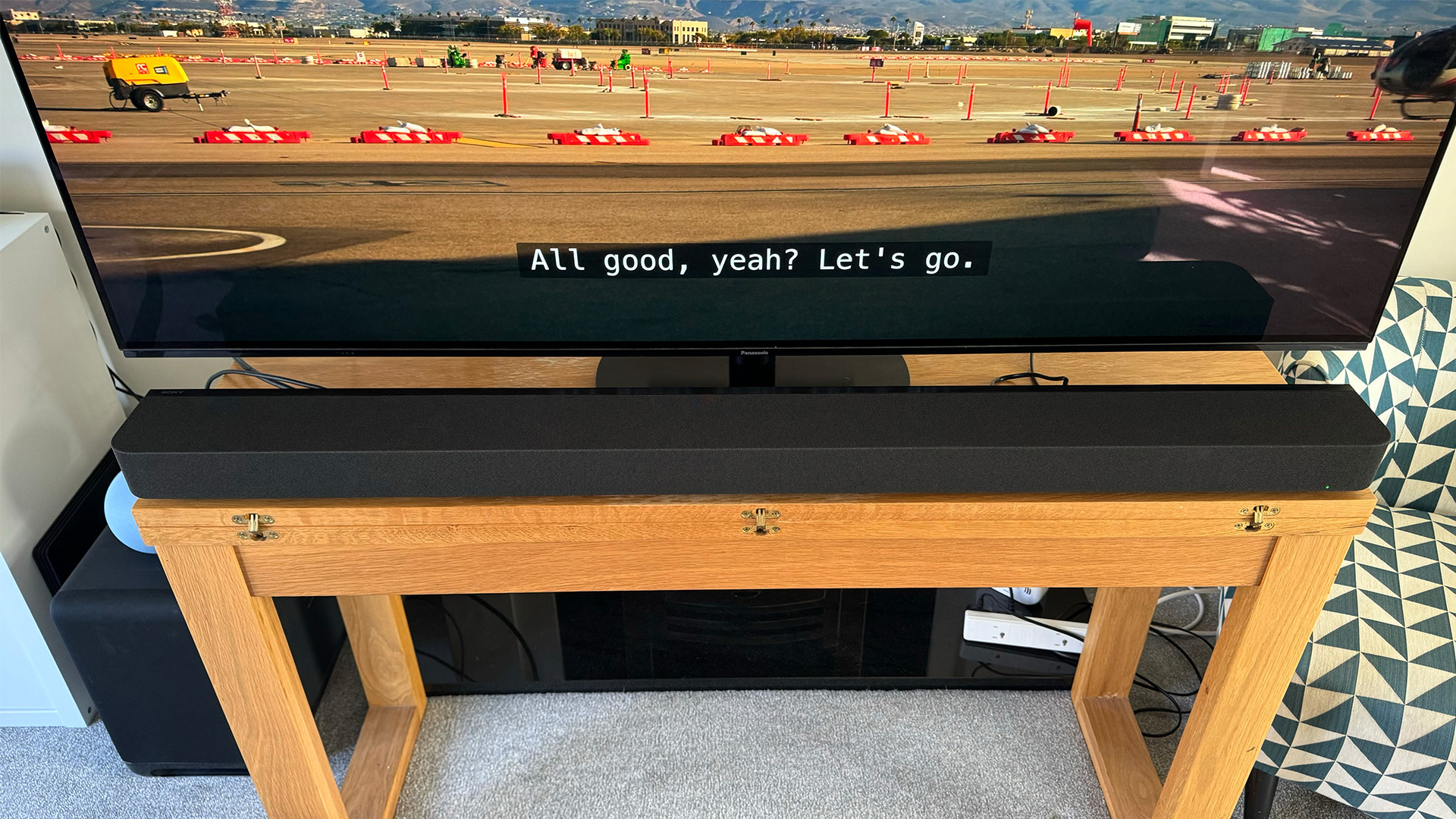
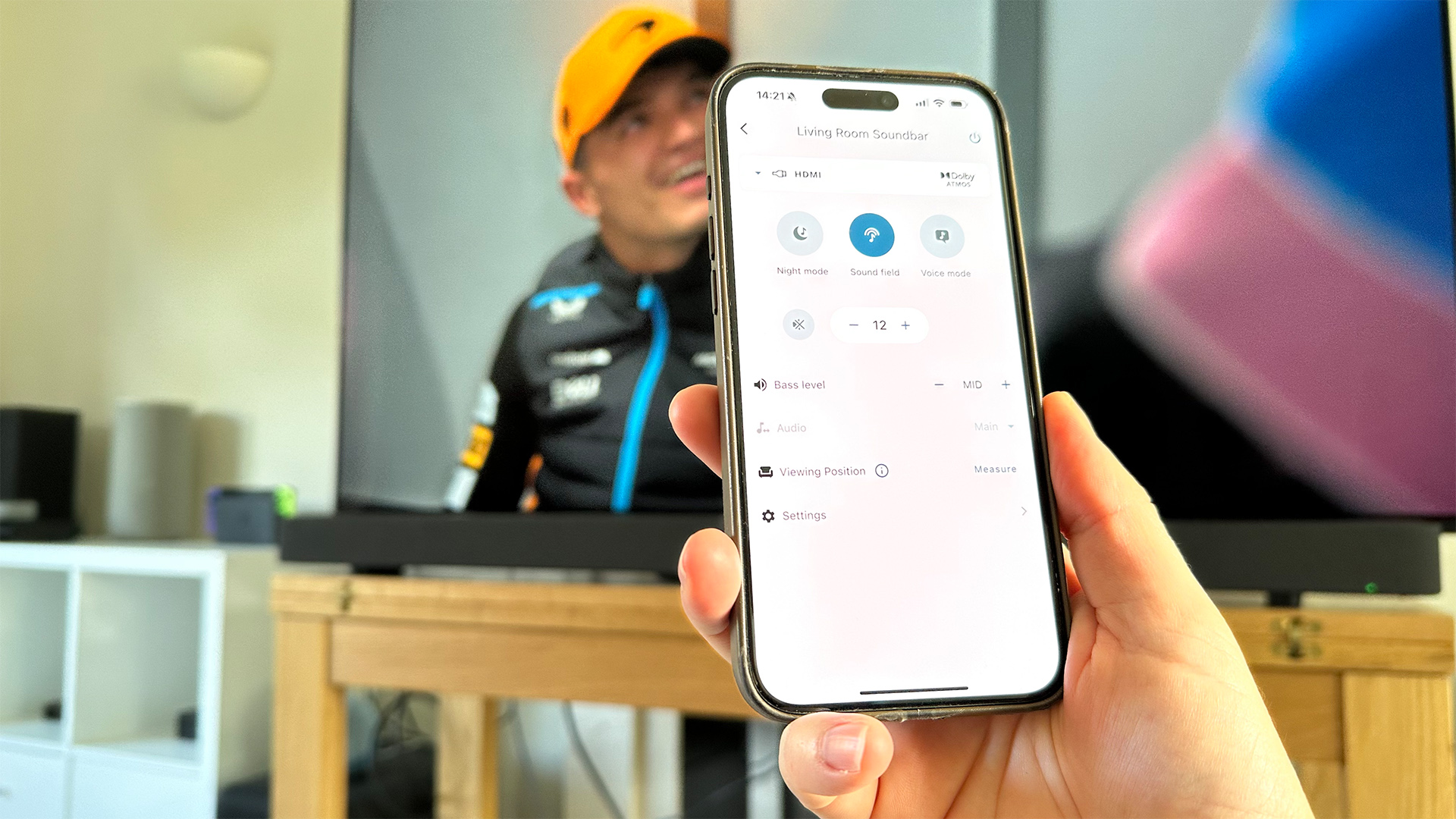
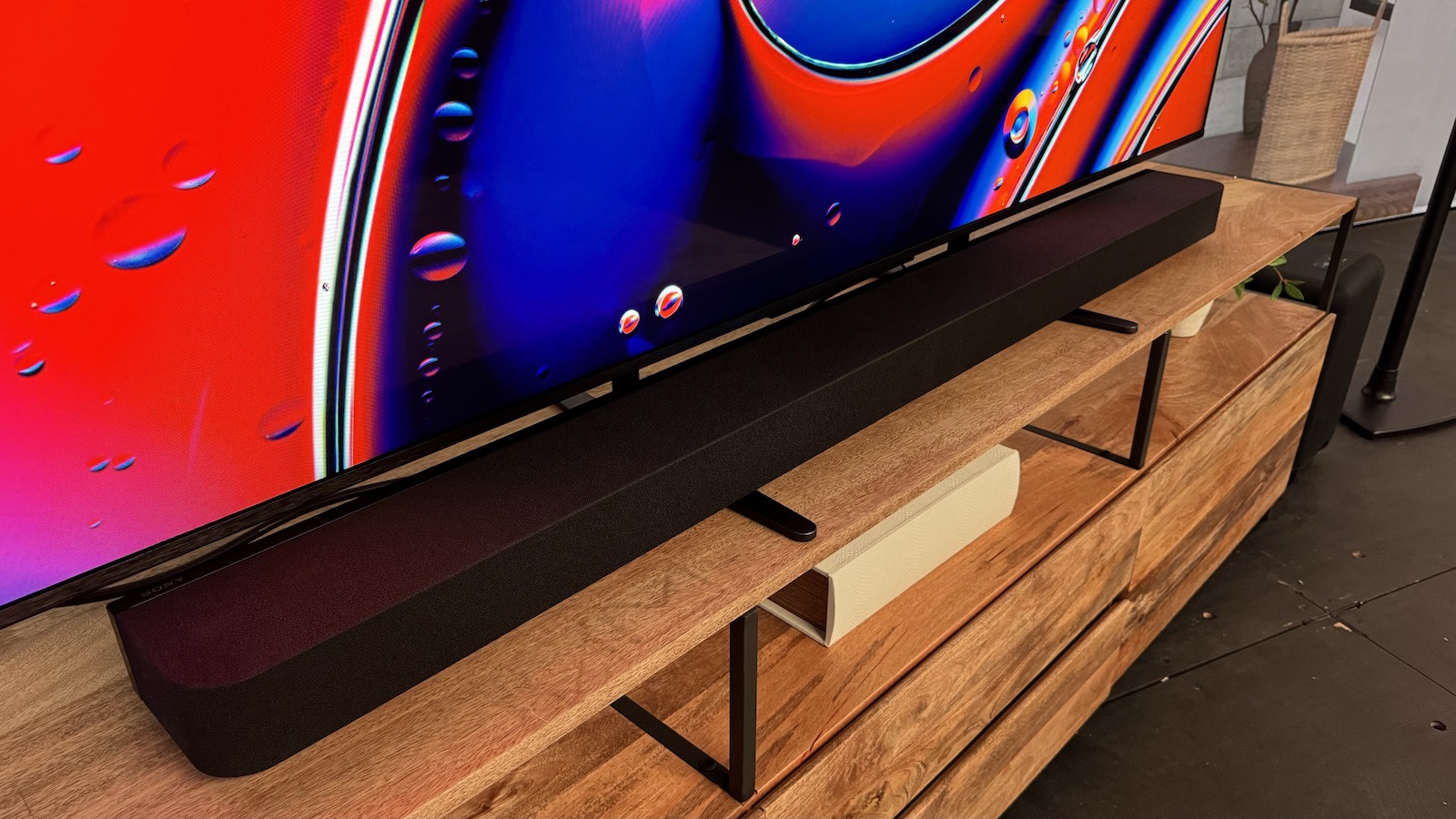
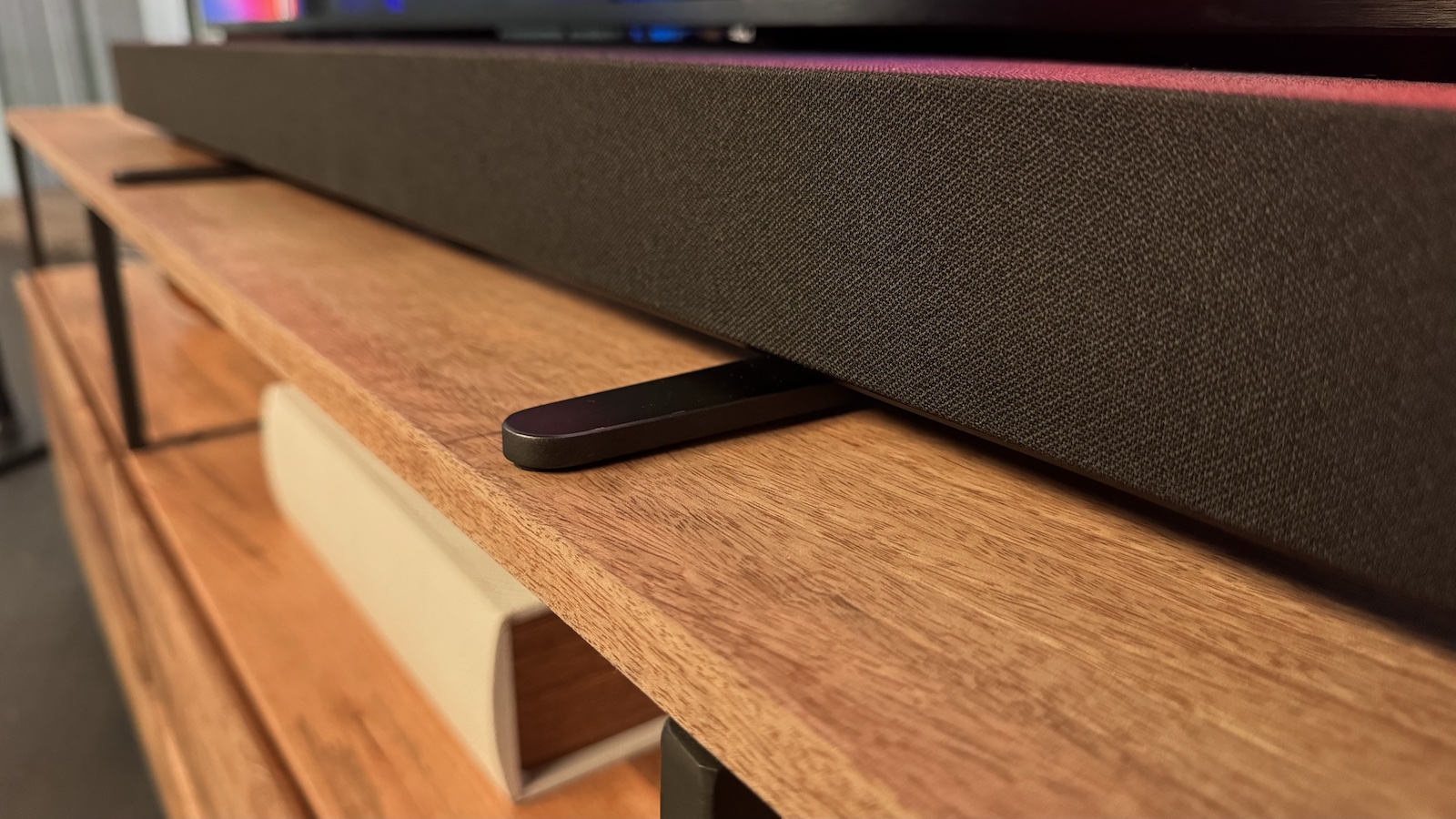
Specifications
Reasons to buy
Reasons to avoid
While the Sonos Arc Ultra is our top soundbar pick for most people, there are those for whom its lack of HDMI 2.1 inputs will be a deal-breaker. That's because most TVs have just two HDMI 2.1 inputs, one of which (the eARC port) will be taken up by the soundbar, which means there will be just one left for a current-gen console or gaming PC. That's fine if you have just one such device, but if you have two (or more!), only the one connected to the remaining HDMI 2.1 socket will be able to run with all of its fancy features – most notably 4K/120Hz – intact.
If that sounds familiar (and you want a solo soundbar rather than a system such as the Samsung HW-Q990D, below), you should check out the Sony Bravia Theatre Bar 9, which has a dedicated HDMI 2.1 input and support for 4K/120Hz, VRR and ALLM.
That HDMI input certainly isn't the only reason to consider this Sony soundbar, though. For sound quality, it's almost as good as the Sonos Arc Ultra – indeed, it won a What Hi-Fi? Award just before its new Sonos rival was launched.
The Sony sounds exceptionally crisp and precise, and the Atmos-ness of its delivery is hugely impressive for a standalone bar – though you can also add wireless surrounds (and a sub) at a later date if you so wish. It's really dynamic, too, delivering big shifts and low-level subtleties with ease. It can deliver deep bass by soundbar standards, too, although just occasionally a particular bass note can stick out a little more than it perhaps should.
Other than that, the only flaw of note is a slightly clinical character – the Arc Ultra is that little bit warmer in tone but still plenty precise.
In terms of design, the Theatre Bar 9 is a big improvement on the HT-A7000 it replaces, with a much softer and more subtle appearance. There are some handy feet in the box that can be attached to the bar so it can straddle a TV stand, too.
All-in-all, this is an excellent soundbar that should be considered alongside the Sonos Arc Ultra – and if you need the additional input, it's an easy decision in favour of the Sony.
Read the full Sony Bravia Theatre Bar 9 review
Best soundbar package
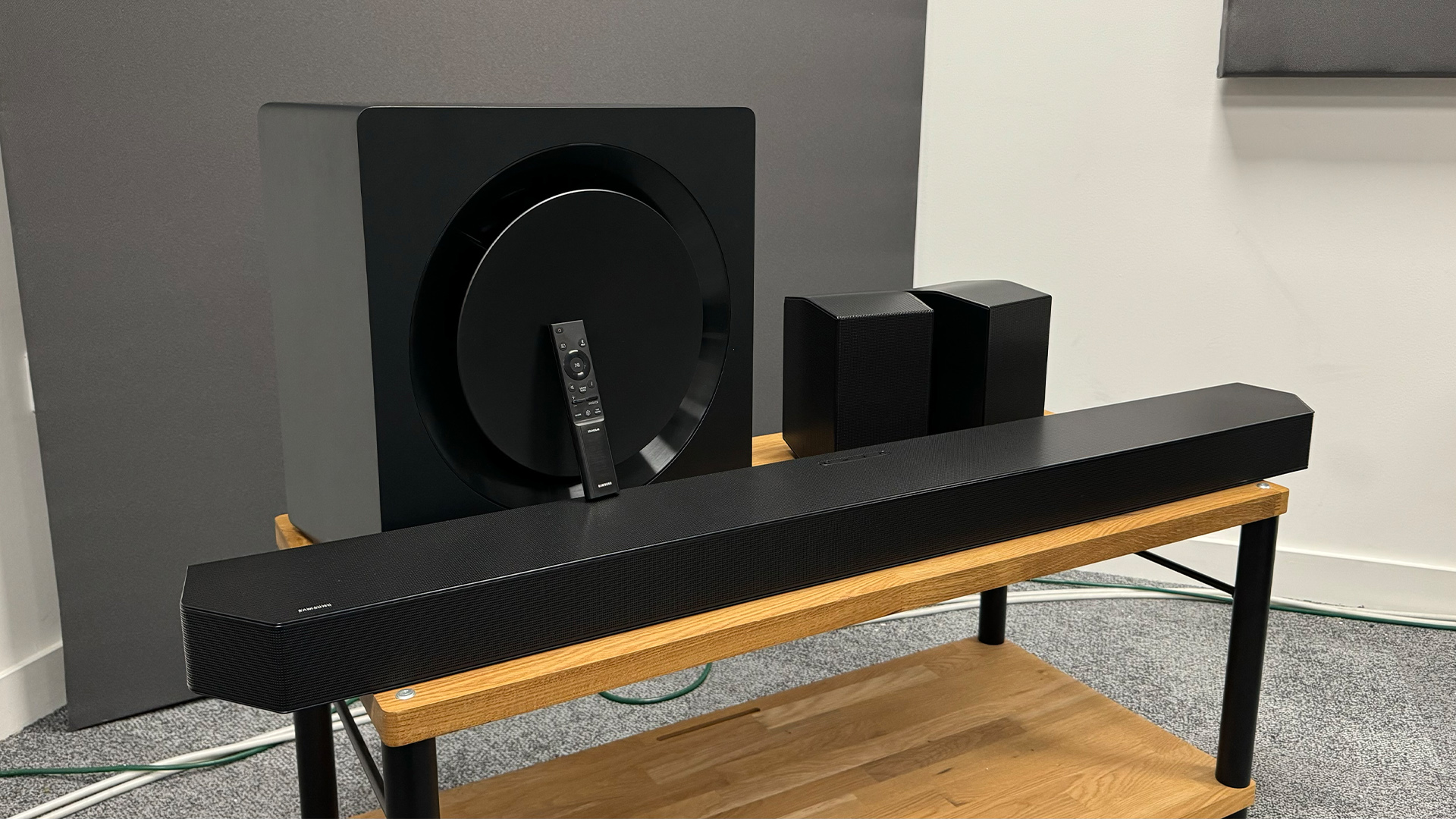
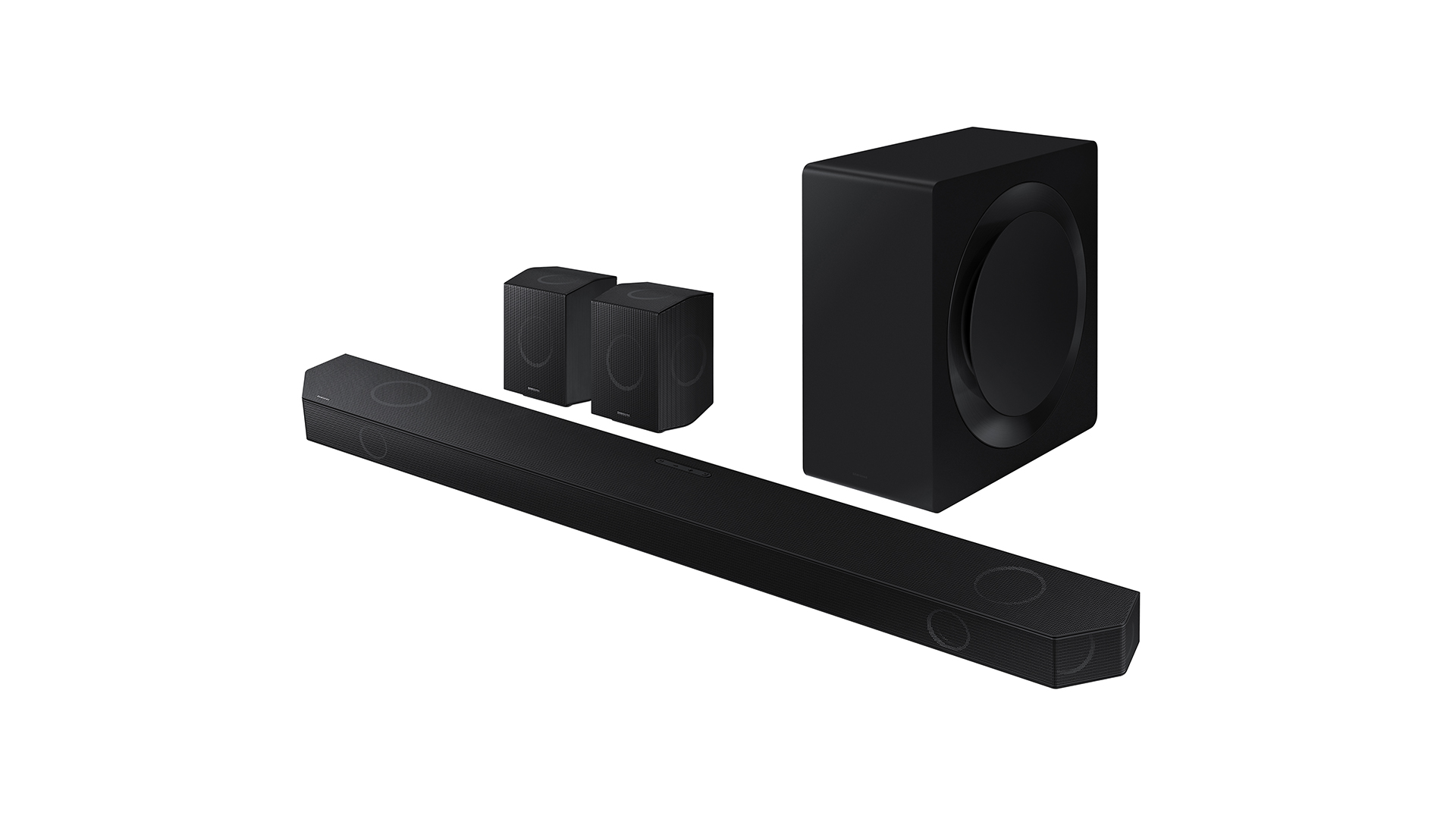
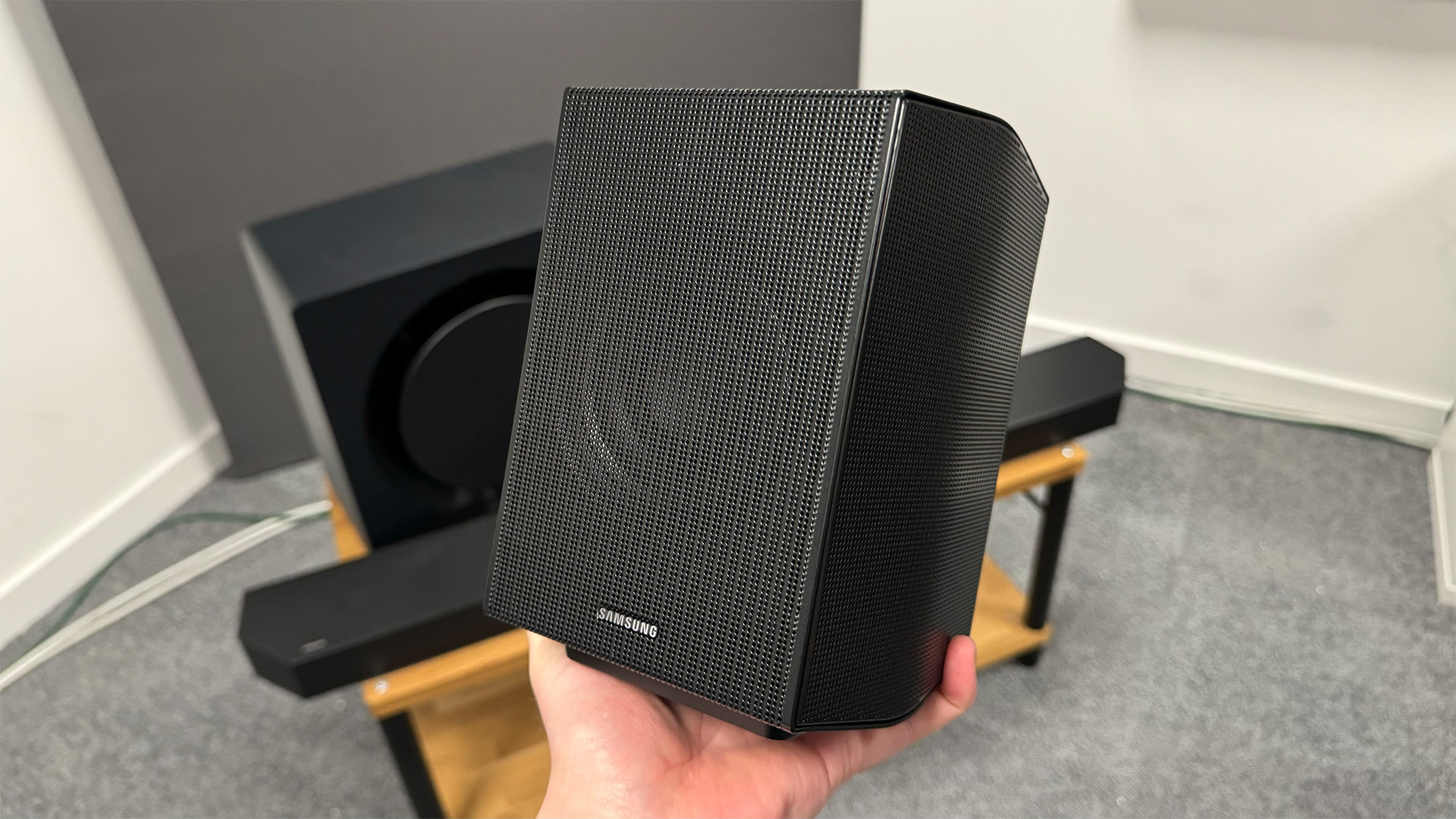
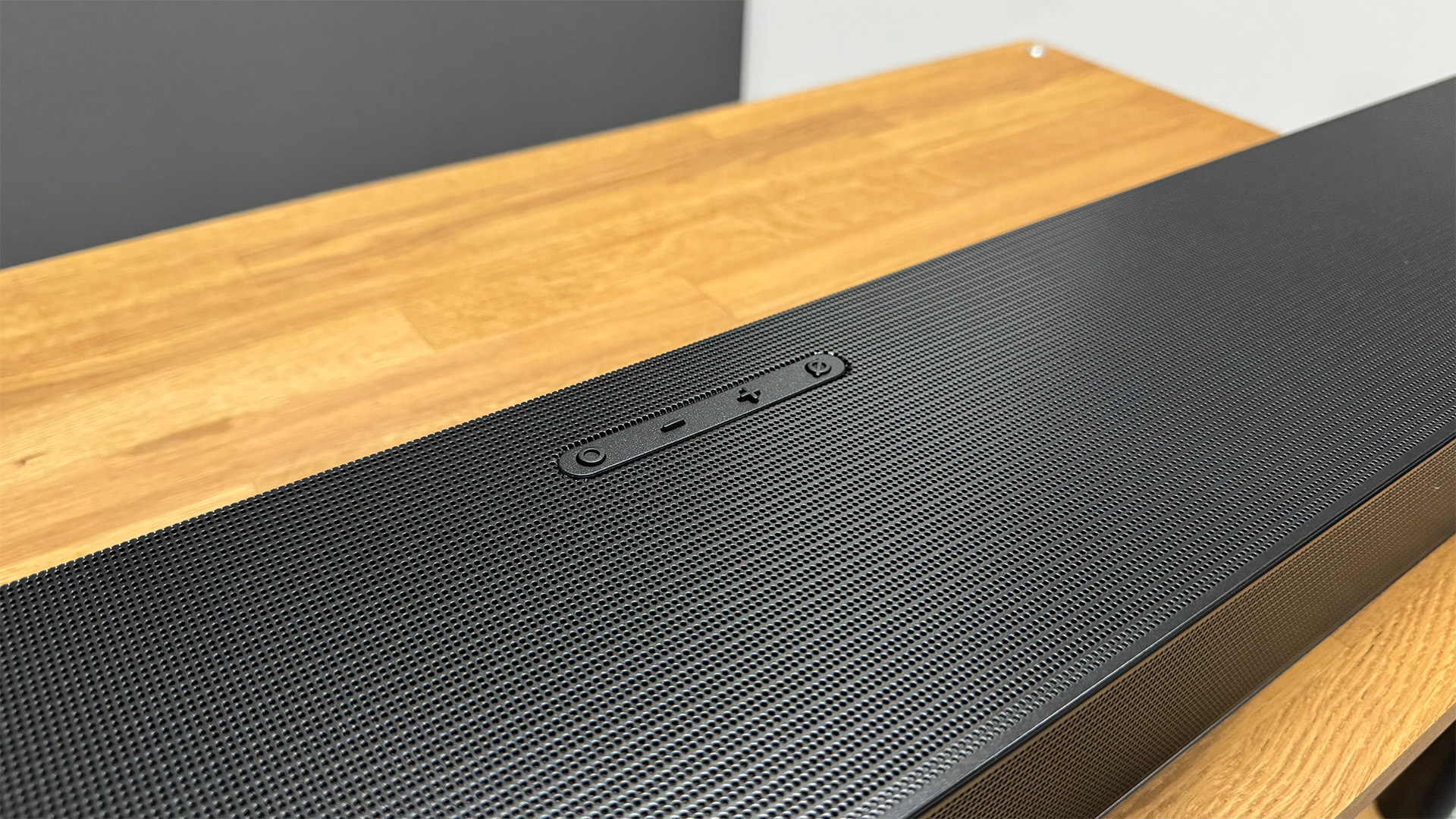
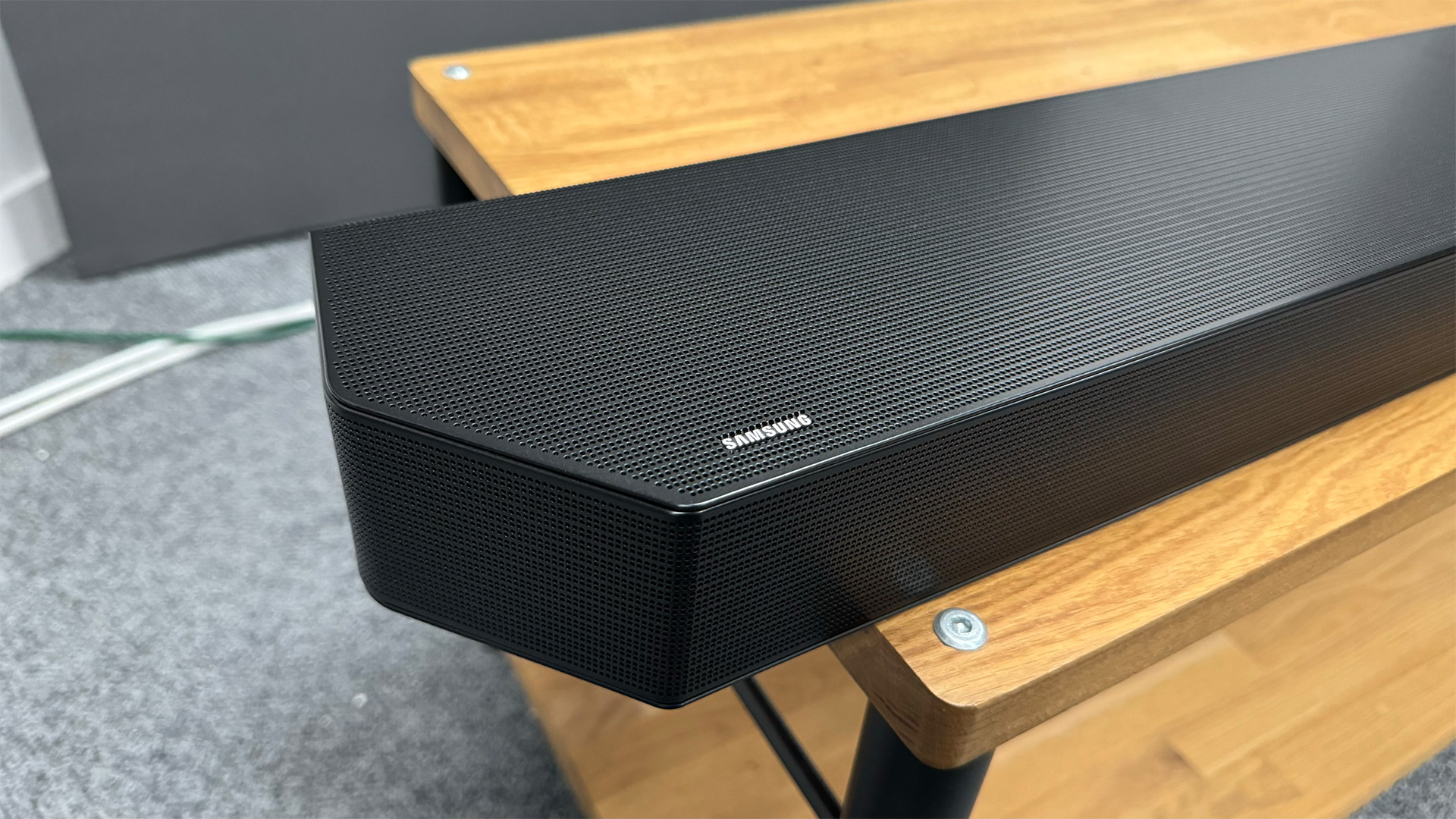
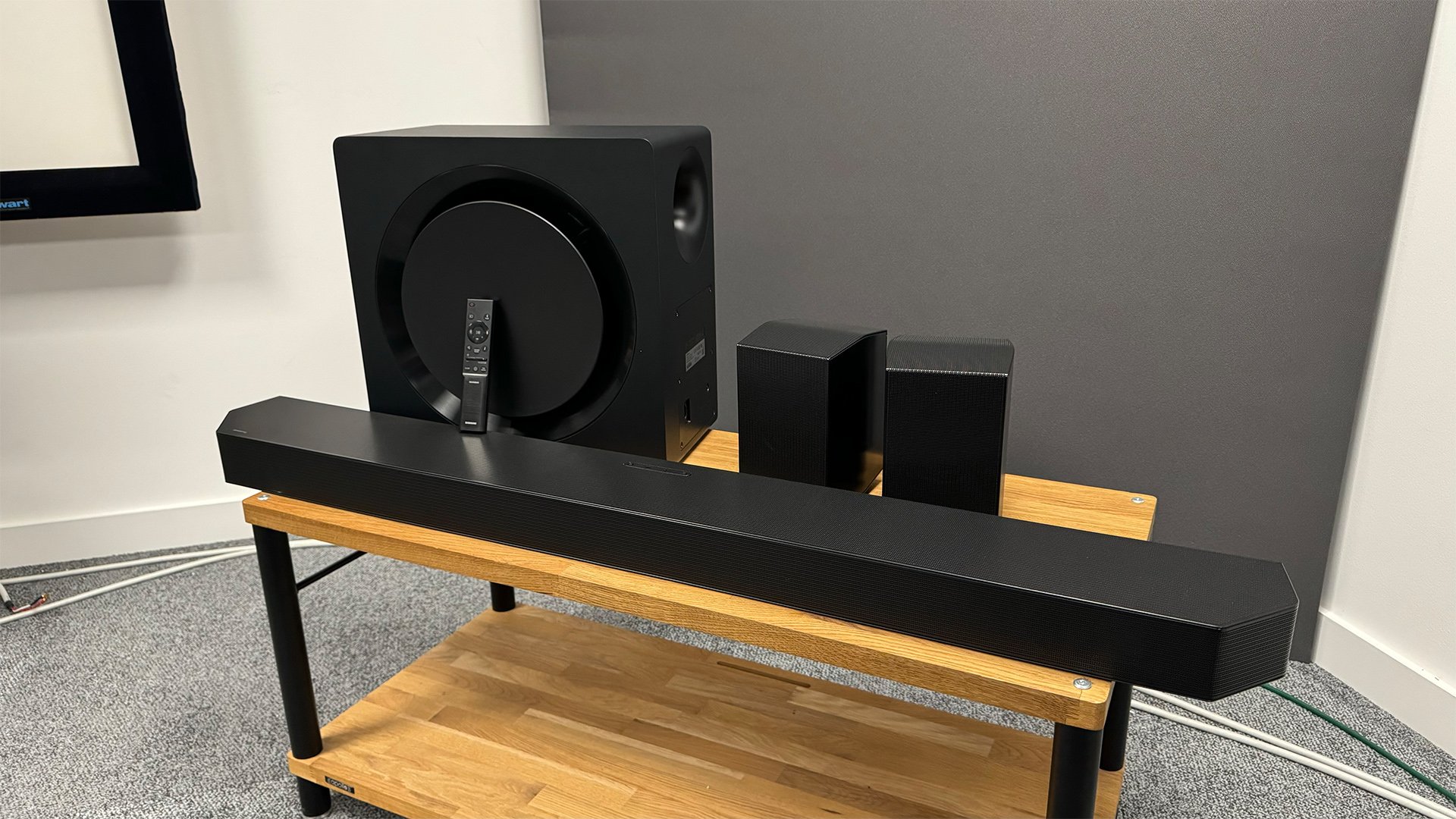
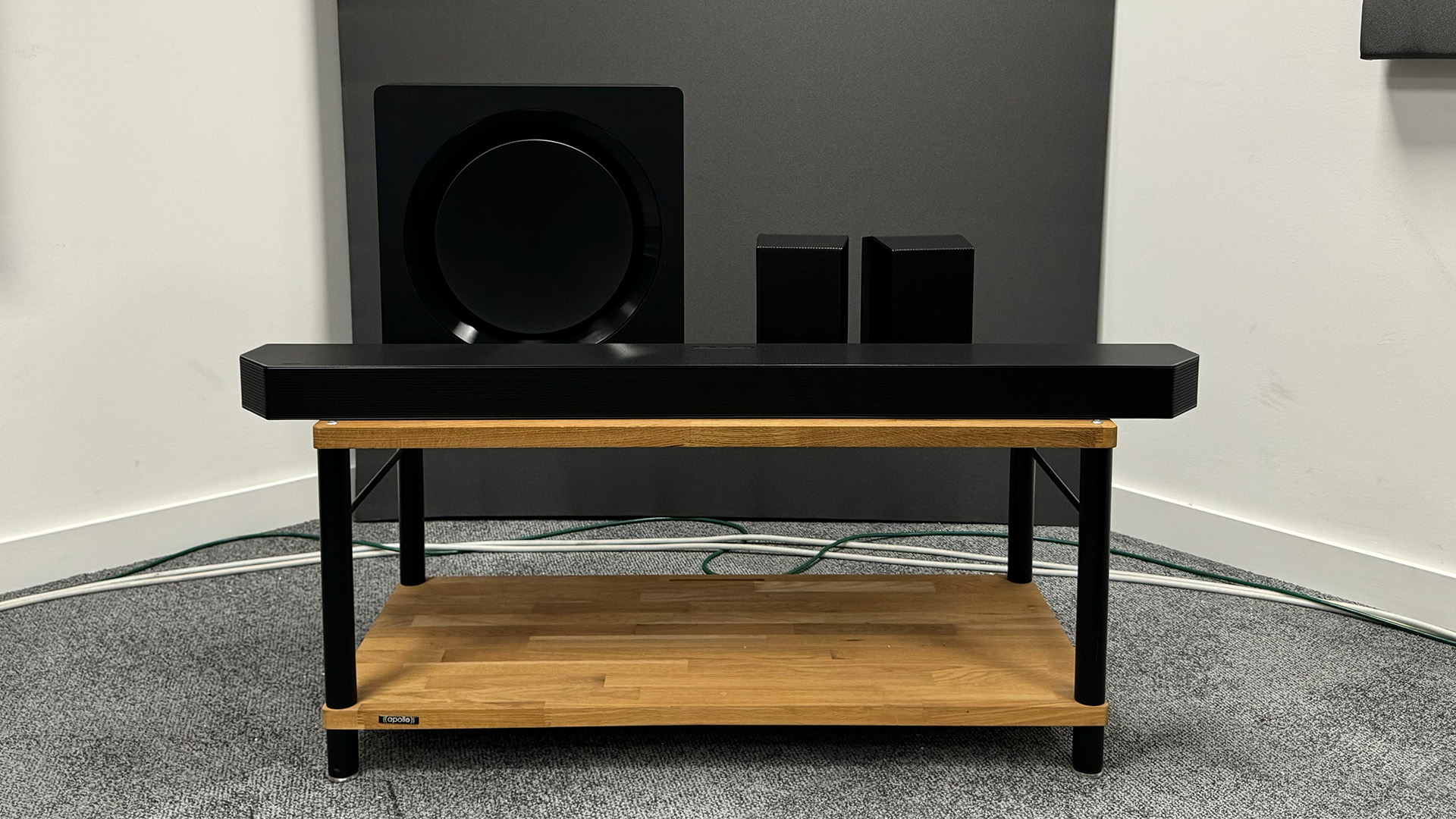
Specifications
Reasons to buy
Reasons to avoid
For many, a full surround system isn't feasible. On the other hand, a lone soundbar might not quite cut it. This is where a soundbar package such as the Q990D steps in.
The system is made up of a soundbar, a subwoofer, and two surround speakers. The step up from the Q990C to the Q990D isn’t huge, but several small improvements and refinements mean this new model earns a five-star review.
It's an 11.1.4-channel system, with 22 drivers in total. The bar itself features six elliptical midrange drivers, three tweeters that fire forwards, four side-firing drivers and two up-firers. Each of the surround speakers features one forward-, one side- and one up-firing driver, and the subwoofer has a 20cm driver behind a smart-looking plastic plate.
The main feature improvement for the Q990D is the HDMIs, which have been upgraded to 2.1-spec, with full support for advanced gaming features such as 4K/120Hz, VRR and ALLM.
At the start of the year, Samsung also announced the release of the Q990F as a sequel to the previous model. There aren't too many details known about it, but we are certainly excited to get it in our testing rooms if it's anything like its predecessor.
Read our full Samsung HW-Q990D review
Best high-end soundbar
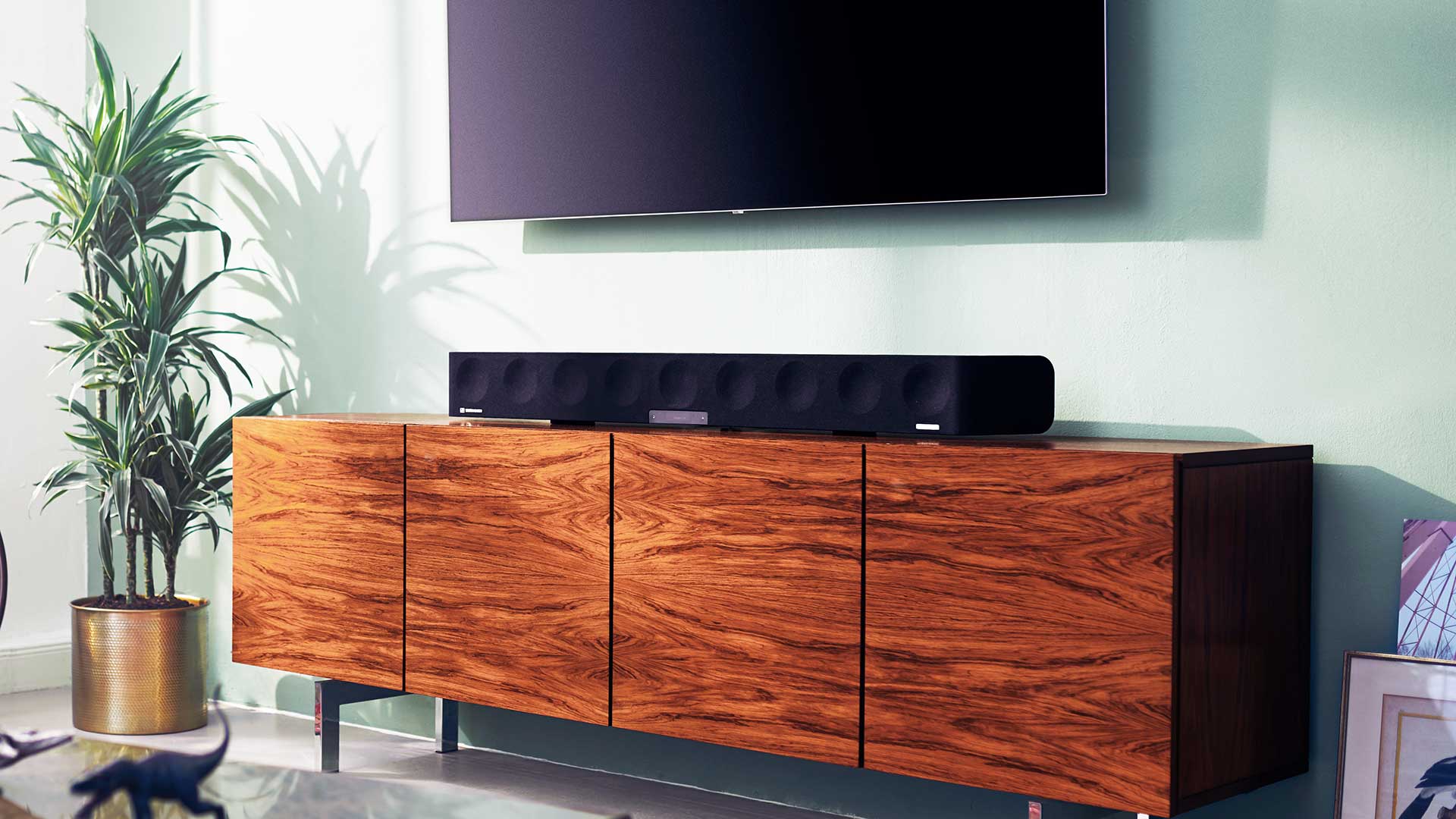
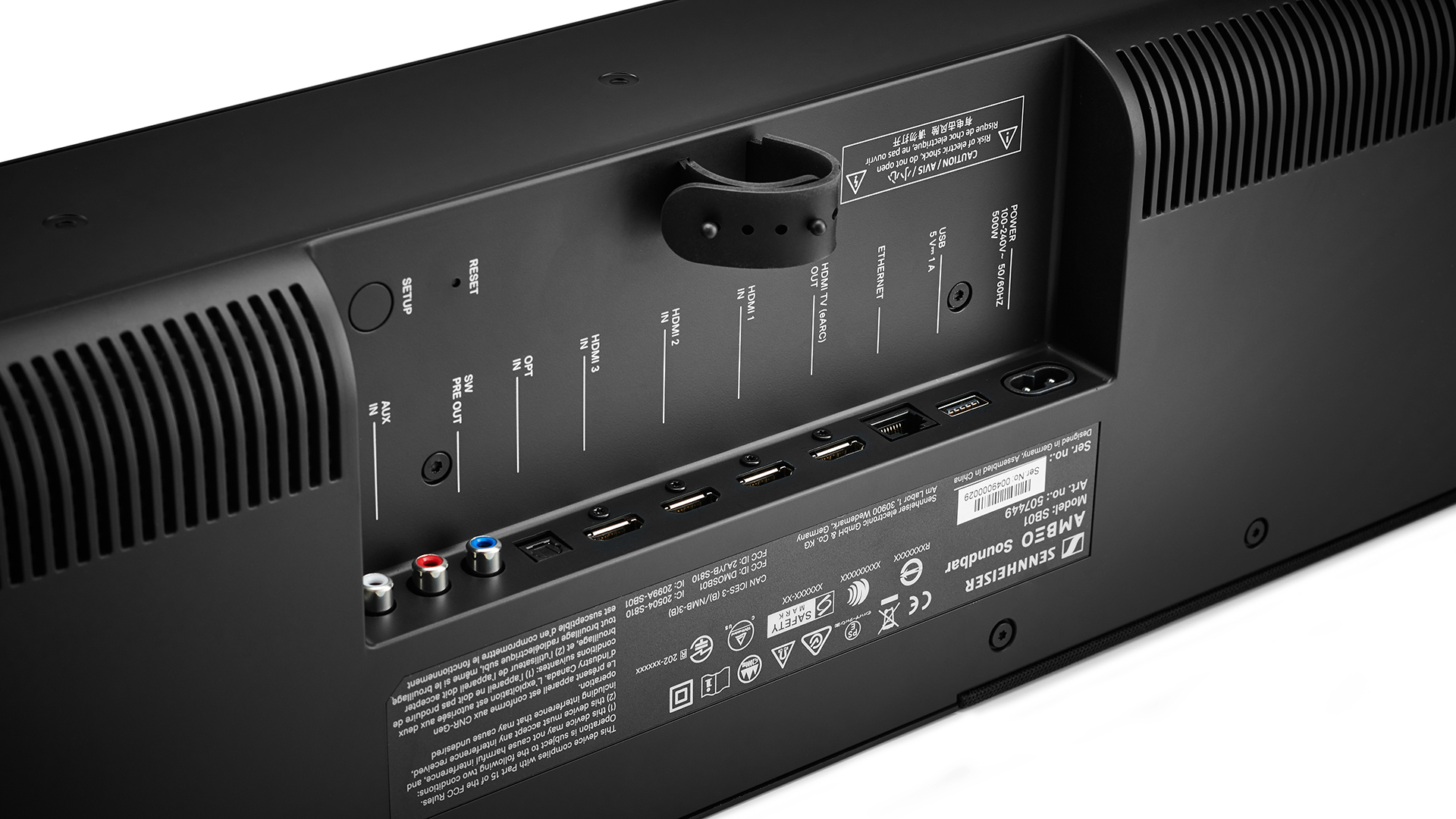
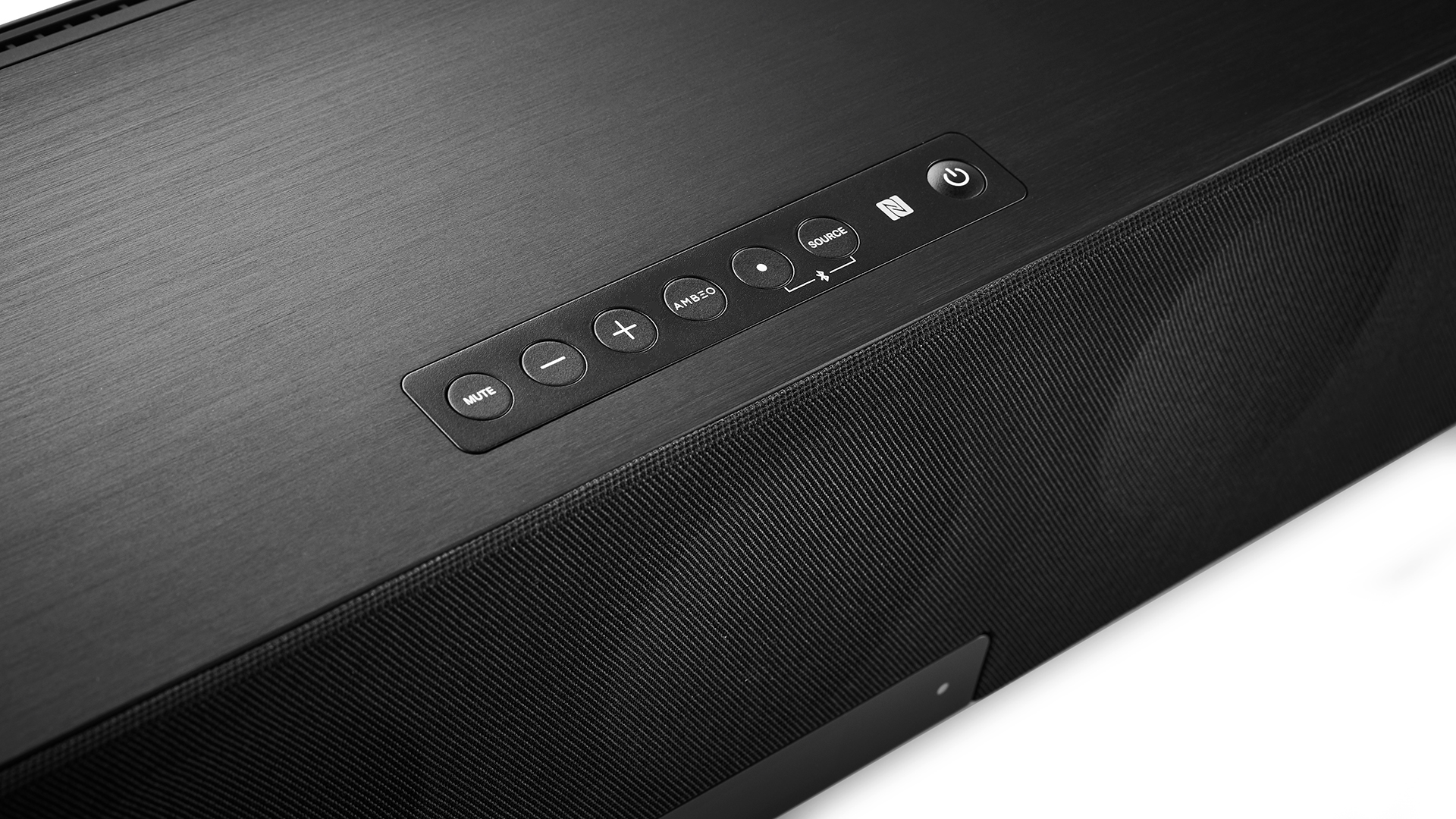
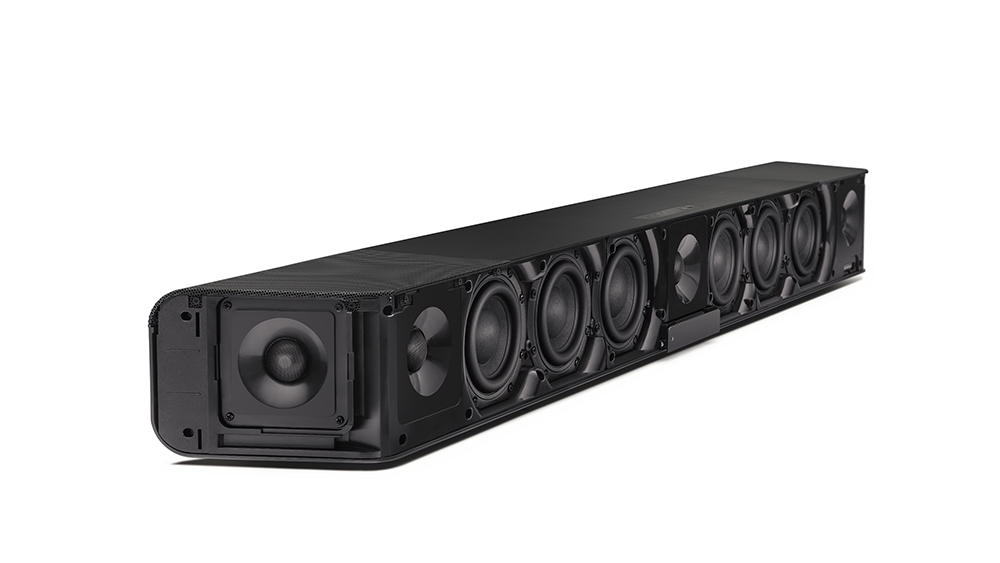
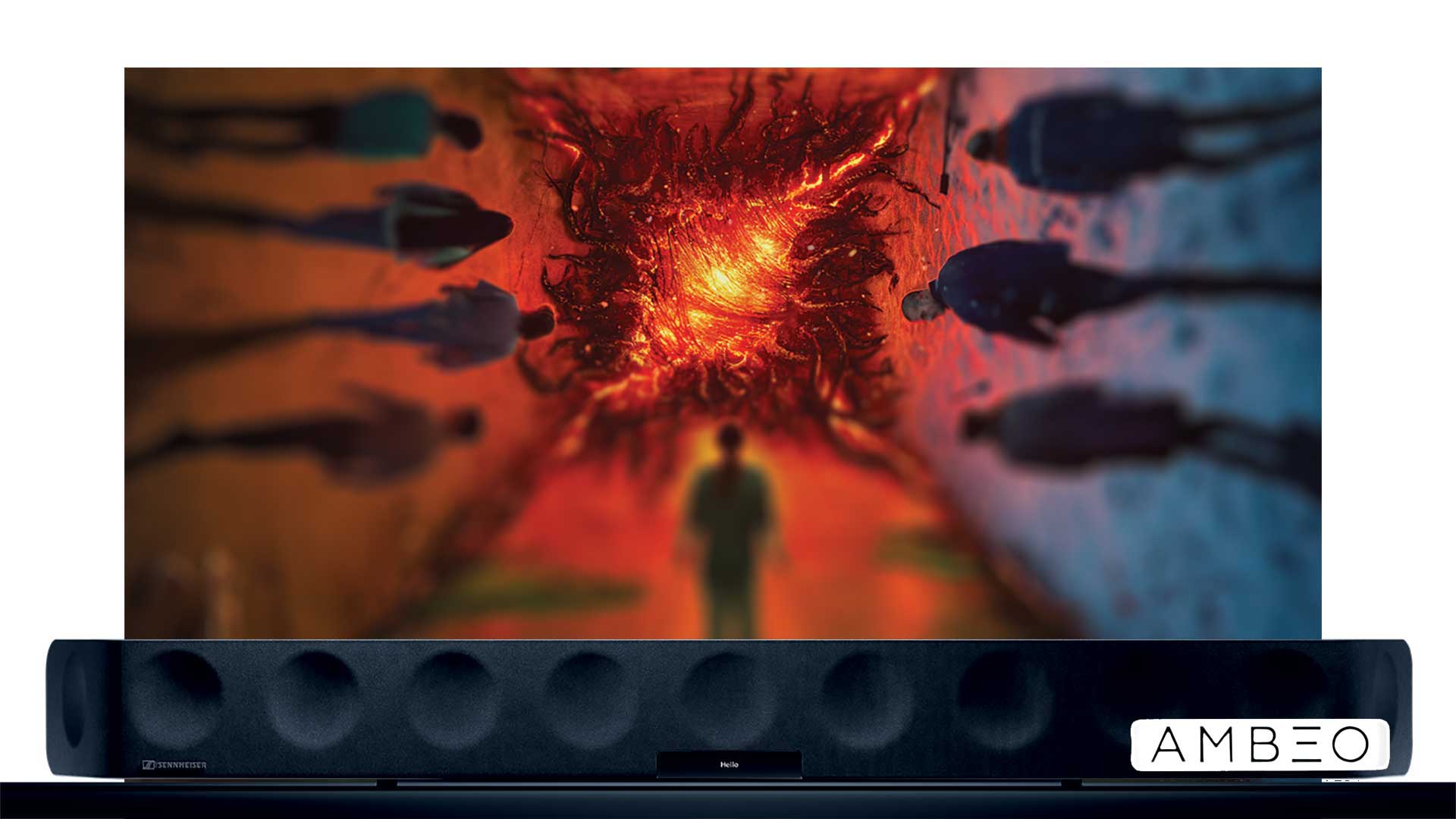
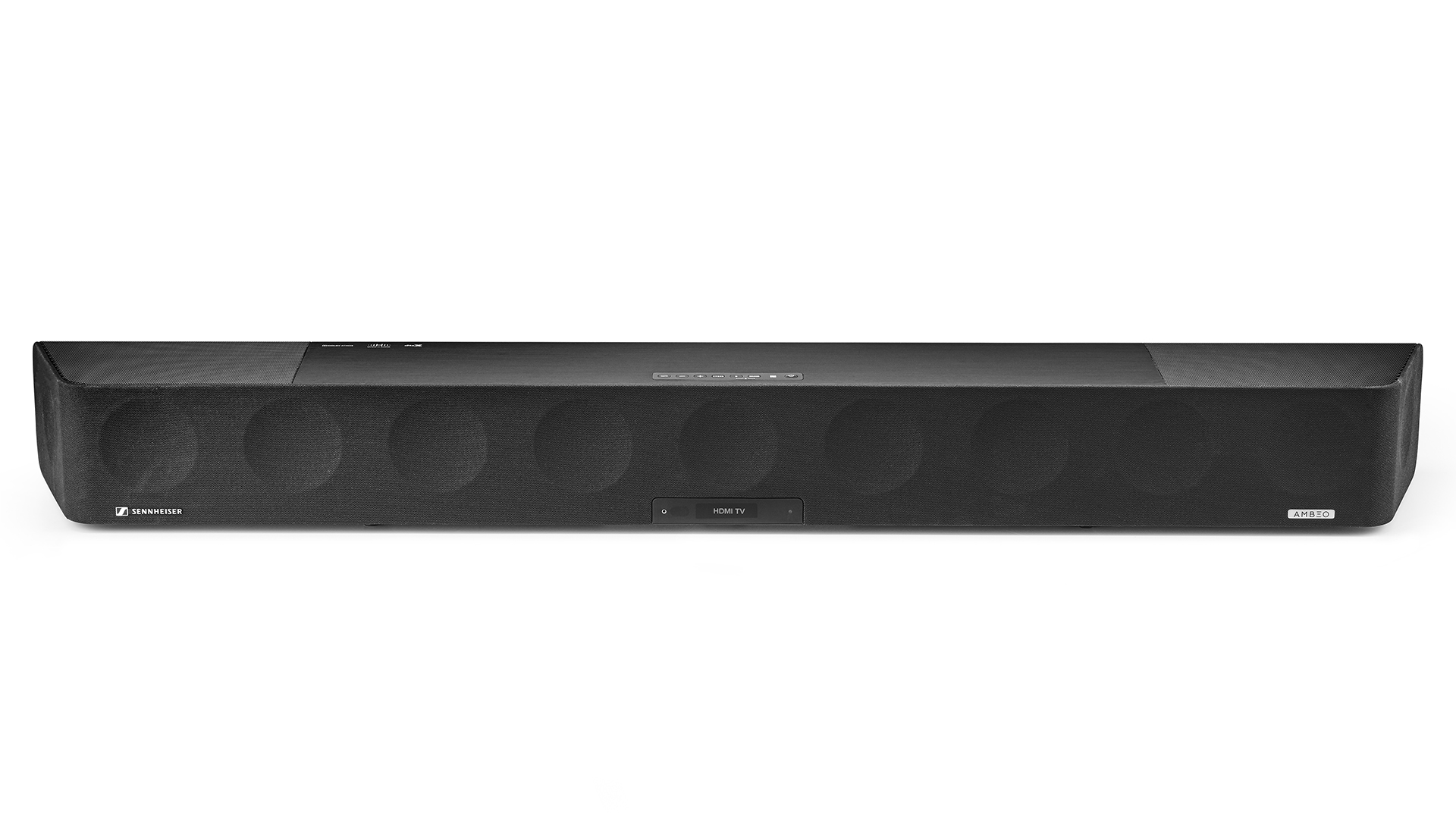
Specifications
Reasons to buy
Reasons to avoid
The Ambeo Soundbar Max (the 'Max' was only added to the name when the Ambeo Plus arrived) marked Sennheiser's first consumer speaker, and it's quite the proposition – a premium soundbar crammed full of features including Dolby Atmos and DTS:X support, 4K HDR pass-through (all of which are useful if Netflix and/or Amazon are your main movie and TV show source). You also get auto-calibration and four HDMI inputs, plus Bluetooth and support for Chromecast.
Measuring 127cm wide and 14cm tall, it’s certainly a beast, to the point where it will block the bottom couple of inches (and perhaps the IR receiver too) of most TV screens if simply placed in front of one. As we found during testing, it can’t be placed on a lower shelf, either, as that will block the upward-firing drivers that produce its height effects. To get the full Dolby Atmos effect, you'll need to wall mount or position the soundbar on the top shelf of your rack so the upward-firing speakers aren't obstructed. It's well worth the effort, though.
The size of the soundbar is primarily down to the larger-than-enough drivers Sennheiser has managed to fit in, and the result is a sound big enough not to need its own subwoofer, with clear, direct dialogue and detail and subtlety in spades. The way it stretches the sound around you creates a great atmosphere and really draws you into the action. As we note in our review: "While some soundbars with external subwoofers go deeper, the bass here is delivered with weighty gusto and seamless integration. This is what helps the Sennheiser achieve the sort of effortless, natural tonality and texture that most rivals can’t begin to match." But the best thing about the Ambeo Max's sound? How little attention it draws; "there's none of the beamy, nasal harshness found in many other soundbars and on the whole, the processing is natural and convincing."
For those who want compelling 3D sound without all the speakers, this is the best soundbar with a premium price tag that we've ever tested, which is why it retained its title once again at the most recent What Hi-Fi? Awards.
Read our full Sennheiser Ambeo Max Soundbar review

There's no denying how huge and fussy the Ambeo Soundbar Max is compared with the average soundbar, but no other soundbar we've heard comes close to delivering the same level of performance. And if you think of the Ambeo as an alternative to a full home cinema system, it's much more compact and convenient!
Also consider
The best alternative soundbars we've tested:
It doesn't blow its price competitors out of the water, but the LG S70TY provides a neat package that's very easy to live with. The 'bar is nicely balanced and while it doesn't quite get to the lowest depths of the bass, it still packs a good punch.
Sony HT-A3000
In terms of pricing and features, the Sony HT-A3000 is just like the Sonos Beam Gen 2. It doesn't deliver Dolby Atmos sound anything like as effectively, but its detail and dynamics make it a big upgrade on TV sound.
Sennheiser Ambeo Soundbar Plus
The middle model in Sennheiser's three-strong Dolby Atmos soundbar range, the Ambeo Soundbar Plus sounds spacious and grand and is very nearly as good as the Sony HT-A7000. It's usefully smaller, too.
JBL Bar 1300
Can't quite decide whether you want a soundbar with wireless surrounds? Then you might appreciate the unusual JBL Bar 1300, which has battery-operated surrounds that magnetically clip to the main soundbar when they're not needed for true surround duties.
Soundbars coming soon
Stay tuned for our reviews on these new and upcoming soundbars:
Samsung Q990F
It's still much too early to place judgement on this upcoming 'bar, but we managed to get a hands-on with the Samsung Q990F and it may well make it onto this list once we have reviewed it. We are waiting with bated breath to see how it compares with its predecessor, the Samsung 990D.
Amazon Fire TV Soundbar and Fire TV Soundbar Plus
Despite the name, Amazon's new soundbars do not have a Fire TV streamer built-in. They are, in fact, just simple soundbars – although the Plus can at least be upgraded through the addition of wireless surrounds and a subwoofer. On the plus side, both models are very affordable, and regular discounts are likely to be seen during Amazon's sales events.
How to choose a soundbar
How to choose the best TV soundbar for you
Before you buy, there are some things to bear in mind. Consider the dimensions of your TV to work out just how big your new soundbar needs to be. You don't want it to be dwarfed by the screen, but then again, it could look strange partnering a massive bar with a small TV – like a tiny head perched atop overly broad shoulders. Look up the dimensions and compare the bar's width with that of your TV. Also, check the height – if you need to place the soundbar in front of your TV, you don't want it obscuring half the picture, and if it has upward-firing drivers, they need a clear line of sight to your ceiling to be effective.
Generally, soundbars are a single long speaker with several drivers inside but some come with external subwoofers for extra low-end extension and rear speakers for surround sound effects whereas others are compatible with other speakers from within the manufacturer's brand. If floor-shaking bass is high on your priority list then these are models you'll want to consider.
Next, features and connectivity. Many modern TV soundbars boast ARC and eARC-enabled HDMI ports, which can handle high bandwidth multichannel audio formats as well as optical inputs for older TVs. If your TV has ARC/eARC, you'll be able to control the volume of your soundbar with your existing remote control. It's worth considering if having a separate physical remote for the soundbar is important to you or if you're comfortable with controlling settings from a smartphone app.
Most modern soundbars have some options for wireless music playback with wi-fi streaming via services such as Airplay 2, Spotify Connect and Chromecast, as well as Bluetooth connectivity. Some also have microphones with voice assistant functionality or compatibility. If you have external devices such as games consoles or a 4K Blu-ray player, keep an eye out for additional HDMI passthrough ports that could make your set-up more flexible.
Should you be looking beyond just a simple improvement of your TV sound and want to purchase a soundbar that produces an immersive home cinema experience, you'll want to pay attention to models that can handle Dolby Atmos and DTS:X audio. Some soundbars do this virtually with processing, and some include up-firing speakers for height effects. If you're interested in the latter, it's important to remember that the result will be more successful if you have low ceilings to bounce the sound off and that the top of the soundbar needs to be uncovered and placed clear of the TV screen.
If high-quality 3D sound is important to you, then you'll want to make sure both your TV and potential soundbar support Dolby TrueHD and eARC. The ARC standard can handle Dolby Atmos, but only in its Dolby Digital Plus form, which is lossy, whereas Dolby TrueHD can deliver full-fat Dolby Atmos in all its lossless glory.
Have a think about the content you'll be viewing and the sources you'll be plugging in. If you are just watching Freeview, many of these technologies will be redundant. But if you're streaming the likes of Netflix, Apple TV and Amazon Prime Video in 4K HDR, you'll want to squeeze out the best possible audio quality to make sure your content sounds as good as it looks. For a complete overview, check out our in-depth guide on how to choose and set up a soundbar.
If you're specifically looking for an affordable model, check out our best budget soundbars page, or if a Dolby Atmos soundbar is more your thing, we have a page dedicated to that too. Whether you spend a little or a lot, we think that all the models recommended will up your audio game with a fuss-free set-up.
How we test soundbars
We have state-of-the-art testing facilities in London and Reading, where our team of experienced, in-house reviewers test the majority of hi-fi and AV kit that passes through our door. We allow for plenty of listening time as well as running them in before we begin reviewing.
Each soundbar we test is paired with an appropriate reference TV and is directly compared to the best in its price and features class – whether that's the current What Hi-Fi? Award winner or a few of the latest models we've been impressed by in recent reviews. What Hi-Fi? is all about comparative testing, and we keep class-leading products in our stockrooms so we can easily compare new products to ones we know and love.
We always try to be impartial and do our best to make sure we're hearing every product at its very best, so we'll try plenty of different styles of films and TV shows that show what each soundbar is capable of with both advanced and standard audio formats. For example, if it's a Dolby Atmos soundbar, we'll use Blu-ray discs to hear its Dolby True HD performance, but we'll also check its performance with streaming services that use Dolby Digital Plus too.
Although soundbars are typically designed with film and TV in mind, we also put them through their paces with music too, testing out a range of streaming options with a variety of genres, both classic and modern, enduring that we listen in the highest quality that the soundbar is capable of.
Our reviews are broken into three sections: design, features and sound and all verdicts are agreed upon by the team rather than just an individual reviewer to eliminate any personal preference and to make sure we're being as thorough as possible, too. There's no input from PR companies or our sales team when it comes to the verdict, with What Hi-Fi? proud of having delivered honest, unbiased reviews for decades.
Recent updates
20th November 2024
Replaced the discontinued Sony HT-A7000 with the Sonos Arc Ultra as 'best overall' and added the Sony Bravia Theatre Bar 9 as the 'best soundbar with HDMI 2.1'.
17th September 2024
Removed the Roku Streambar due to lack of availability. Also removed the LG S95QR from the 'also consider' section for the same reason and replaced it with the JBL Bar 1300. Added the 'coming soon' section.
24th June 2024
Samsung Q990D added as 'Best soundbar package'.
23rd April 2024
Sony HT-S2000 added as 'Best entry-level soundbar'.
11th March 2024
New author information, 'Top Tips' and 'Recent Updates' section added. Plus new photos for every product featured.
9th February 2024
'Also Consider' section added.
3rd July 2023
Switched to a new, clearer format. Removed Sennheiser Ambeo Soundbar Plus, LG S95QR and Sony HT-G700 from main list.
Soundbar FAQ
What is a soundbar?
Are soundbars better than TV speakers?
Soundbars are slim, often rectangular, speaker systems with drivers positioned side by side that are designed to slot underneath your TV or to be fitted neatly to the wall. With front-facing drivers, even basic, budget soundbars typically offer more direct and clear audio than a TV.
This is because as TVs have become slimmer, their in-built speakers have shrunk and are often positioned at the rear or underneath the screen – hardly the ideal position as large speakers that face forward will always be clearer and louder than tiny speakers pointing in another direction.
Manufacturers have tried, with varying success, to enhance the audio coming from their televisions. But, if you want to improve TV audio, you need a separate speaker designed for that purpose.
There are a few options to improve your TV sound that range from the budget to the expensive, but a soundbar is one of the simplest ways as they are typically compact and require minimal cabling. They often also have added benefits, such as wireless streaming over Bluetooth or wi-fi.
Is a soundbar worth having?
A soundbar is definitely worth having if you're currently making do with your TV's built-in speakers. Even an average-sounding soundbar will absolutely smash most TVs for audio quality. You'll get more detail, punch, weight and volume – and that's just for starters.
But it is worth mentioning that a soundbar is just one option when it comes to improving your TV's sound. You can alternatively add an amplifier and speakers. an AV receiver and speaker package is the most obvious route to go down, but it's also usually possible to connect a stereo amp to a TV if you prefer. There are also wireless speaker systems such as the the Sony Bravia Theatre Quad.
A soundbar is the easiest and most popular option, though.
How do I connect a soundbar to my TV?
Can you add a soundbar to any TV?
Almost every soundbar and TV, no matter its age, will have an optical connection, and either ARC or eARC port (the latter of which was first introduced with HDMI 2.1 in 2017, and has recently become more common). Before you decide how to connect your equipment to your TV, you should be aware of the pros and cons of each and also check that the cable you need is included in the box with your soundbar.
For more details, check out how to connect your speakers to your TV.
Is ARC or Optical better for a soundbar?
The key thing to know about optical is that it's restricted in bandwidth compared to ARC/eARC. So if you have the choice between the two and opt for optical, you might not be making the most of the audio decoding built into your soundbar. The most advanced immersive formats optical can handle are compressed Dolby Digital or DTS 5.1 surround sound, so that means no Dolby Atmos or DTS:X.
When it comes to ARC/eARC, you need to ensure that your TV has a compatible HDMI socket that supports all the audio formats being sent to your TV. Read our guide to HDMI ARC and HDMI eARC for the full lowdown on this connection, but you need to know that ARC supports Dolby Atmos in its lossy Dolby Digital Plus format (the codec used by streaming services), while eARC can handle high-quality codecs such as Dolby Atmos in Dolby TrueHD, DTS-HD Master Audio or DTS:X. If your viewing or gaming involves physical media, you will probably want to ensure you have got an eARC connection to get the most from your system.
ARC/eARC also allows your main TV remote to control the basic volume and power functions of your soundbar via HDMI CEC (Consumer Electronics Control). Some soundbars come with their own remotes and/or have app control, but if your connection to your TV uses an optical cable, you may still be able to use your regular controller. Certain models, such as the Sonos Ray and B&W Panorama 3, can 'learn' to recognise the commands of both IR and RF remotes, but the set-up will depend on your TV manufacturer.
Unfortunately, ARC/eARC can sometimes introduce a slight audio lag resulting in lipsyncing issues that can vary depending on your TV/soundbar combo. However, many brands include controls to adjust the delay on a soundbar's app, and sometimes there's also an option to modify it on a TV's settings.
If you are using ARC/eARC to connect to a Dolby Atmos soundbar, check whether you are actually receiving Atmos. Most soundbar apps will give you confirmation of the type of audio format that you are currently listening to on the Now Playing page or occasionally on the soundbar's display (if it has one). So if what you are playing should be in Dolby Atmos, but the app says otherwise (likely 'PCM', '5.1' or '2.0'), then it's time to delve into the settings of your TV and Blu-ray player.
To receive Dolby Atmos, any source device must be set to output bitstream audio. You can find this option in the audio settings of TVs, Blu-ray players and streaming sticks. In PCM, you will hear the audio only in stereo, but sending bitstream means your soundbar will be able to receive those lovely Dolby formats, including Atmos.
What are the best equaliser settings for a soundbar?
If your soundbar comes with its own automatic calibration software, then make sure you run it, so the soundbar’s audio output is matched to your room’s layout and characteristics. The Sonos Arc, for example, uses Sonos's Trueplay software in conjunction with your smartphone's microphone to tailor its sound.
While automated optimisation is great, your own ears are even better. If your soundbar also has options to alter individual channel levels, don't be timid with tweaking things to suit your taste/needs. Every room is different, and hearing is subjective, so what sounds great to one person may not to another. The great thing about a soundbar is that it is generally straightforward to make adjustments and swap back if you change your mind.
Some soundbars will come with pre-programmed modes for different types of content. In our experience, soundbars with cinematic modes often use 'spatial' processing that can introduce high-frequency artefacts. In contrast, 'music' modes will usually have a bass and treble-heavy EQ that can sound a little brash. We tend to favour a flat standard mode, if one is available, that we manually adjust to our liking. But there is no one-size-fits-all approach that will work for every room and listener.
There is little more frustrating than not being able to hear dialogue when watching a TV show or movie, but inevitably, varying levels of speech clarity combined with how busy the soundscape is and the overall style of the mix can mean that whispery, mumbly vocals hinder even a top-quality, room-tuned soundbar.
Fortunately, most soundbars have speech enhancement feature settings that will typically raise the volume of the centre channel to help improve dialogue audibility. Not every brand implements this with sophistication, and sometimes these modes can sound thin and harsh, but once again, it's always worth experimenting to find what works for you and your space.
MORE:
Looking for a bargain? Here are the best budget soundbars
Best Dolby Atmos soundbars: surround sound systems without the hassle
Check out the latest and cheapest Sonos deals available now
Get the What Hi-Fi? Newsletter
The latest hi-fi, home cinema and tech news, reviews, buying advice and deals, direct to your inbox.
Robyn Quick is a Staff Writer for What Hi Fi?. After graduating from Cardiff University with a postgraduate degree in magazine journalism, they have worked for a variety of film and culture publications. In their spare time, Robyn can be found playing board games too competitively, going on cinema trips and learning muay thai.
- Lewis EmpsonSenior Staff Writer

